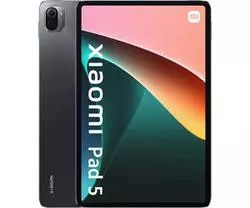Xiaomi Pad 5 Review
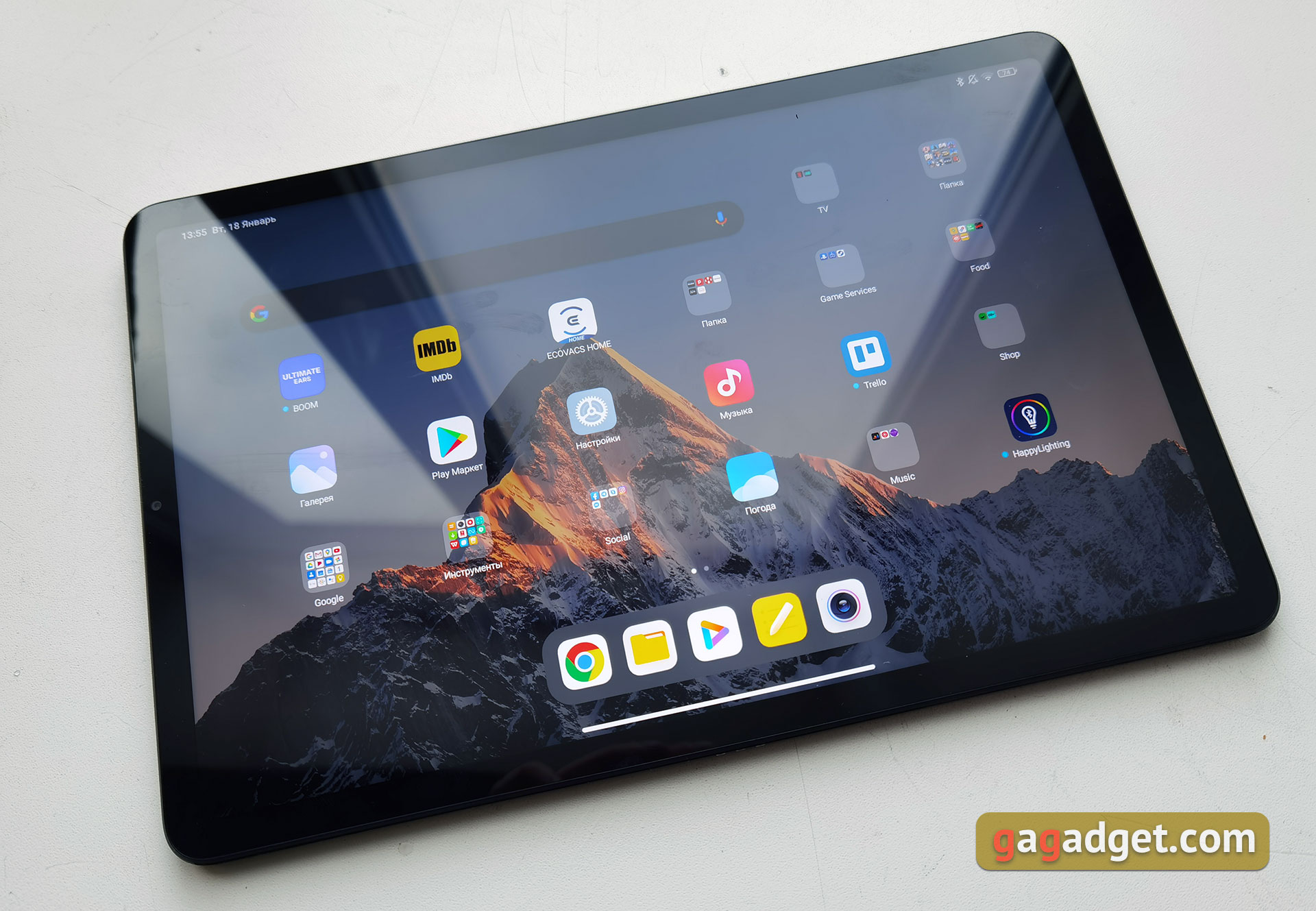
Despite the decline in the popularity of tablets in recent years, they have a certain audience. First of all, people buy them to use media content and games. To a lesser extent - for remote learning and work. In any case, interesting models come out and Xiaomi Pad 5 is one of them. The tablet delighted with a high-quality large IPS-display with a diagonal of 11 inches, a resolution of 2560x1600 and a refresh rate of 120 Hz.
Inside, you will find a fairly powerful hardware, which is enough for today's demanding games, and four-speaker audio system further contributes to the comfortable consumption of media content. The tablet looks nice and works long on a single battery charge. But the manufacturer made some compromises. The Xiaomi Pad 5 has no GPS module and there is no version that supports mobile networks. Of the less weighty nuances - there is no memory cards slot, a headphone jack and a fingerprint scanner. Only facial recognition - not the most reliable biometric method of unlocking the screen.
Pros:
- High-quality 11-inch IPS screen with 120 Hz refresh rate
- Impressive performance
- Long battery life
- Loud and high-quality speakers
- Nice appearance
Cons:
- no GPS-module and configurations with support for mobile networks
- no slot for memory cards and headphone jack
- no fingerprint scanner
What is in the Box?
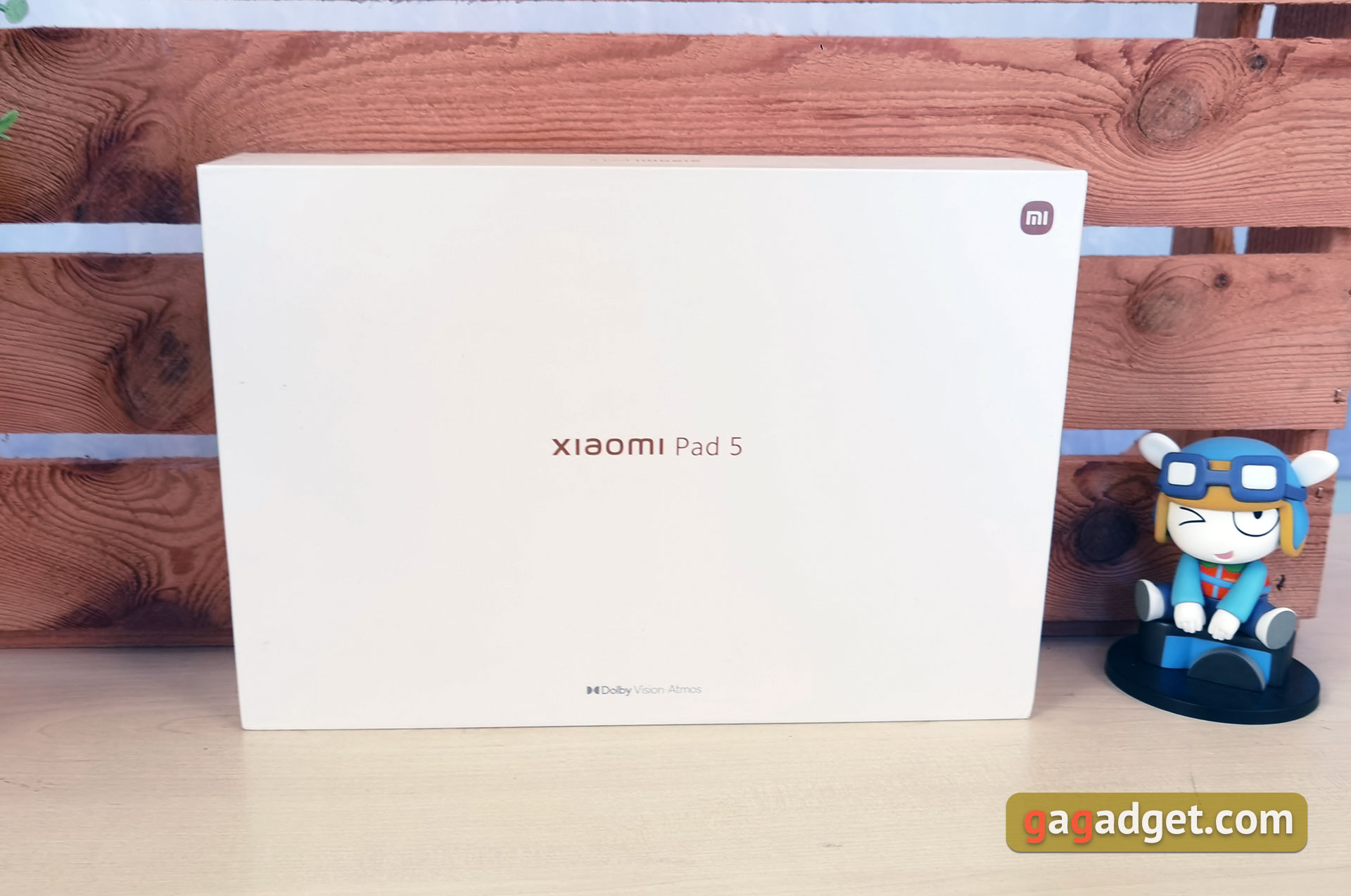
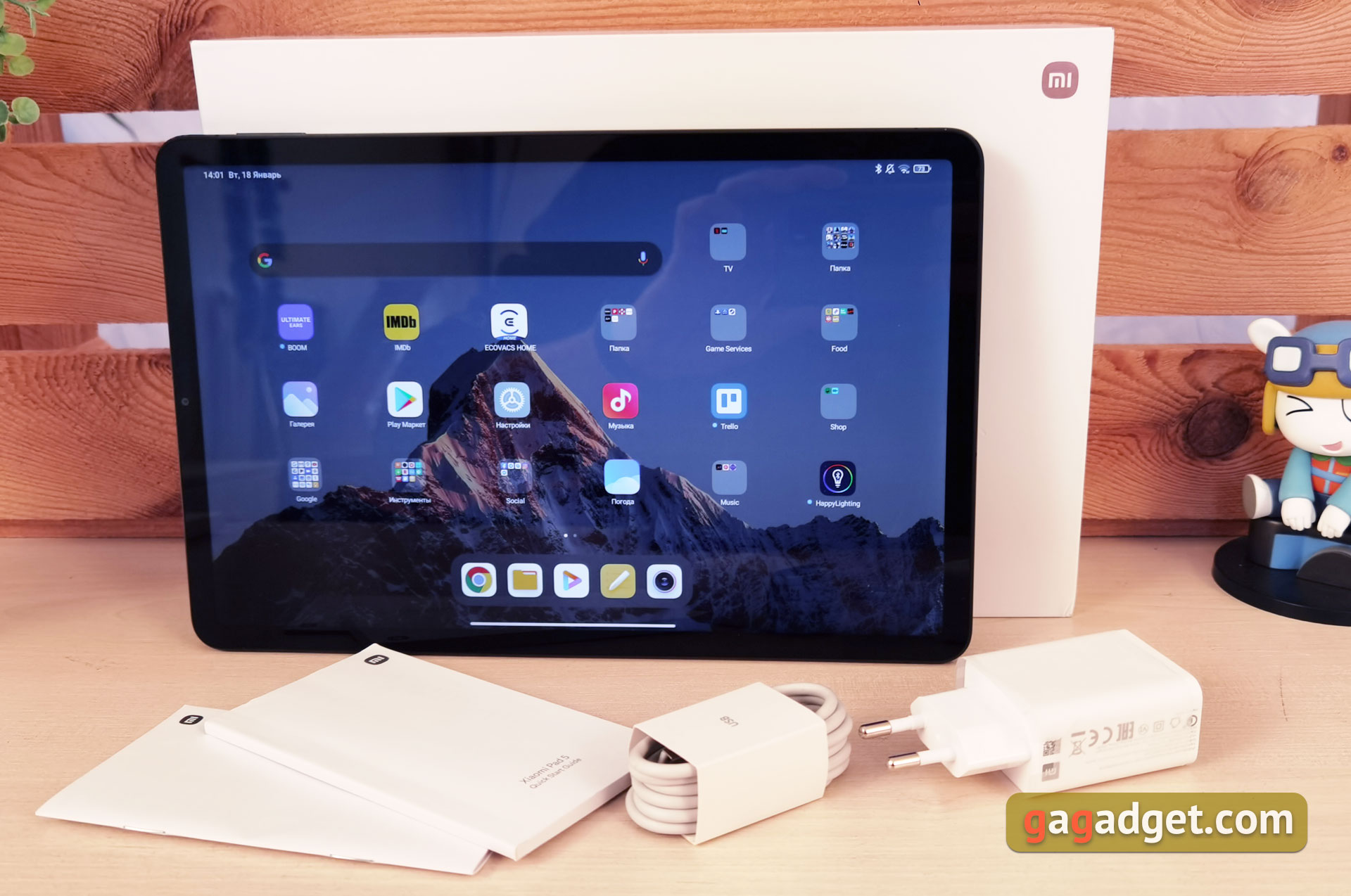


Xiaomi Pad 5 is packed in a large white box with a minimum of printing: on the front there is only the model name, as well as the Mi and Dolby Vision Atmos logos. The box contains the tablet itself, a 22.5 W power supply, a USB Type-C cable and documentation. In general, everything you need is there, but an adapter from Type-C to a 3.5 mm jack would not be superfluous. Still, the gadget is mostly intended for the consumption of various kinds of entertainment content.
Xiaomi Pad 5 Design
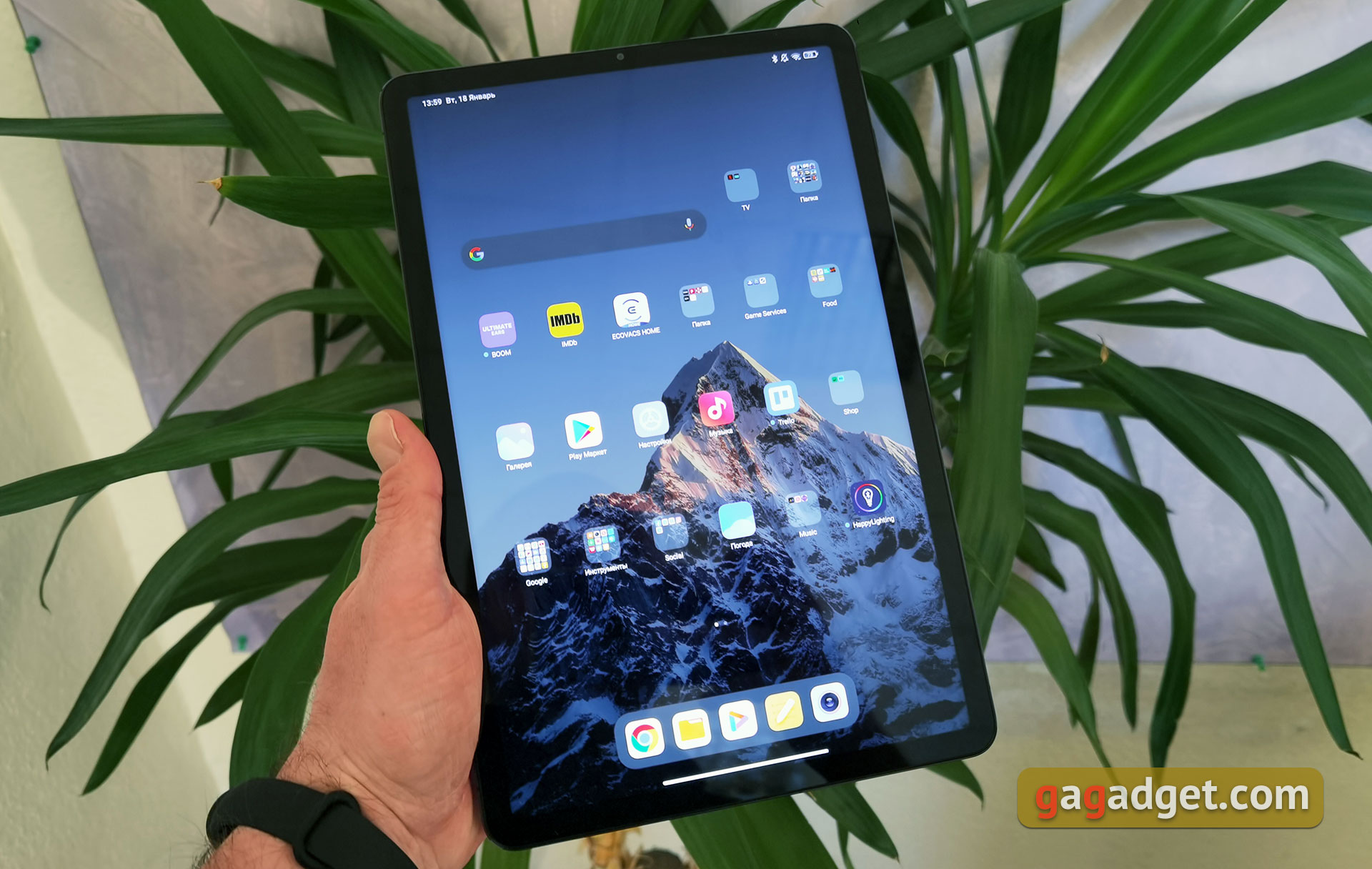
From the front, all modern Xiaomi Pad 5 tablets practically do not differ from each other. Large screen and black frame around the perimeter. It is not too thin: after all, this is not a smartphone and making very thin frames is not good. The frame has the same width on all sides, and the corners of the screen are rounded and follow the outlines of the corners of the tablet itself. The light sensor and the front camera are hidden in the frame. The latter is located in the middle of the left side, if you turn the tablet into a horizontal orientation. In the future, in this position, we will consider the tablet.
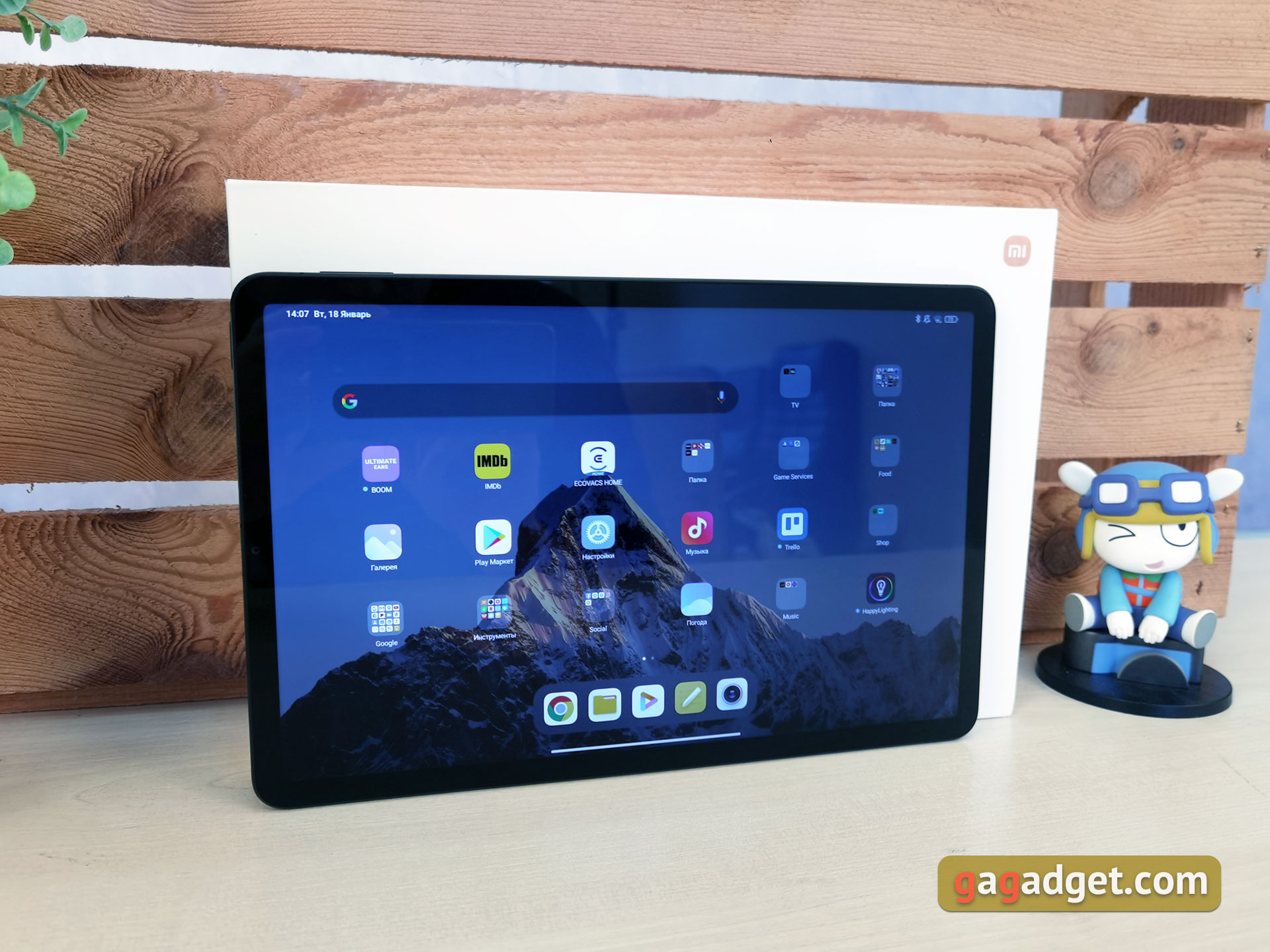
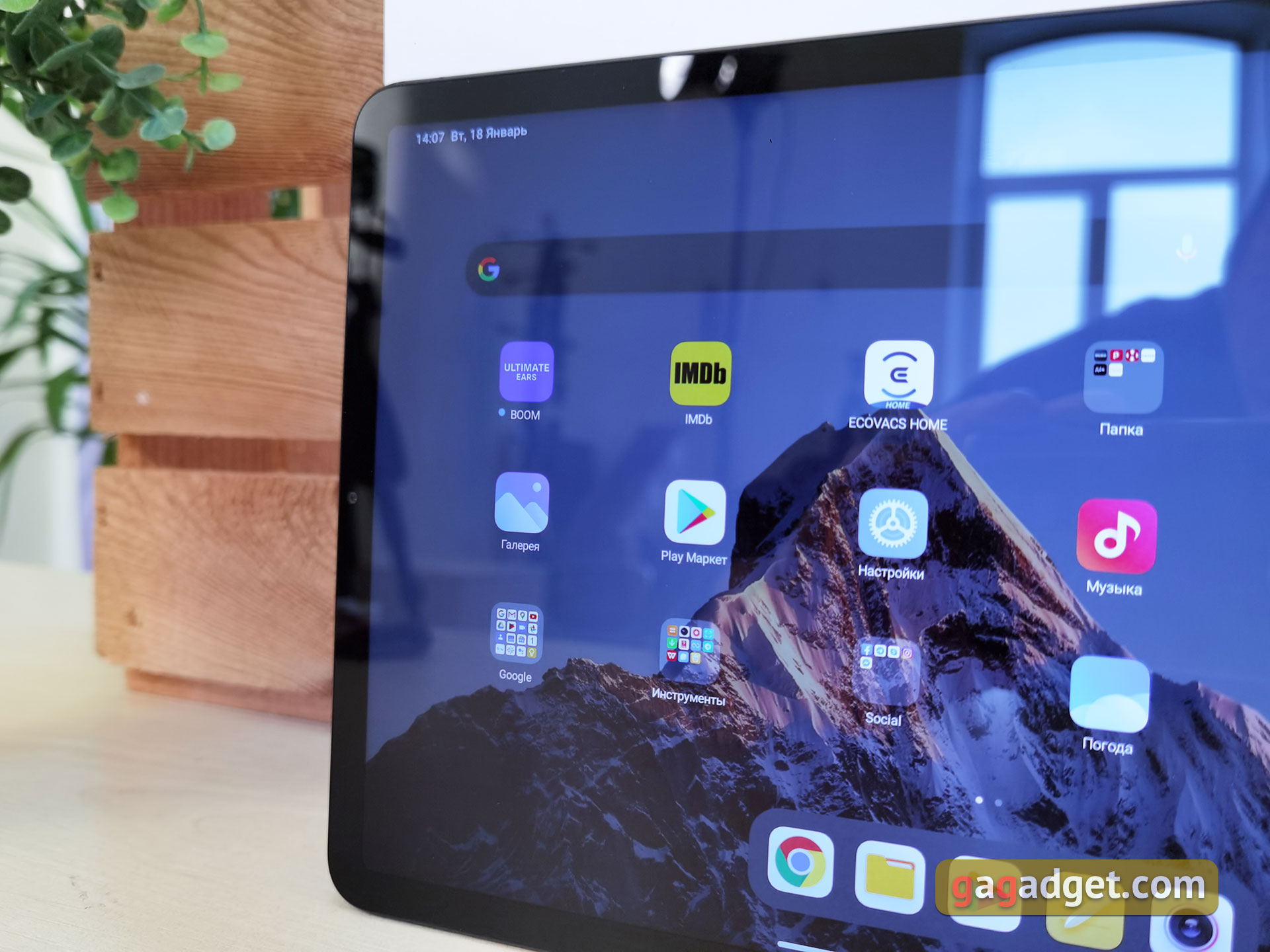


The frame is made of metal and has small plastic inserts around the perimeter for stable operation of wireless interface antennas. The ends have clear corners without any rounding. On the bottom side there are three magnetic contacts for connecting a branded keyboard. It is sold separately and, unfortunately, we did not have it for review.
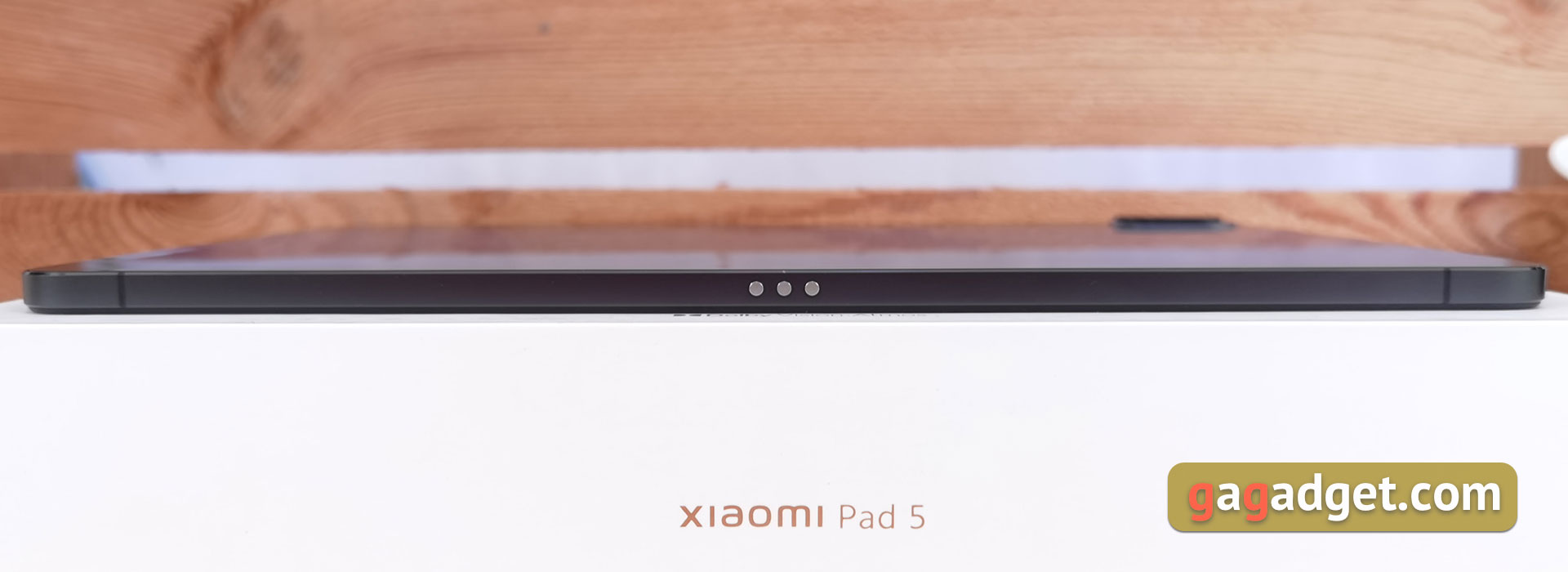
On the upper side there are plastic inserts, a pair of microphones and volume regulator. It is located closer to the left corner of Xiaomi Pad 5.
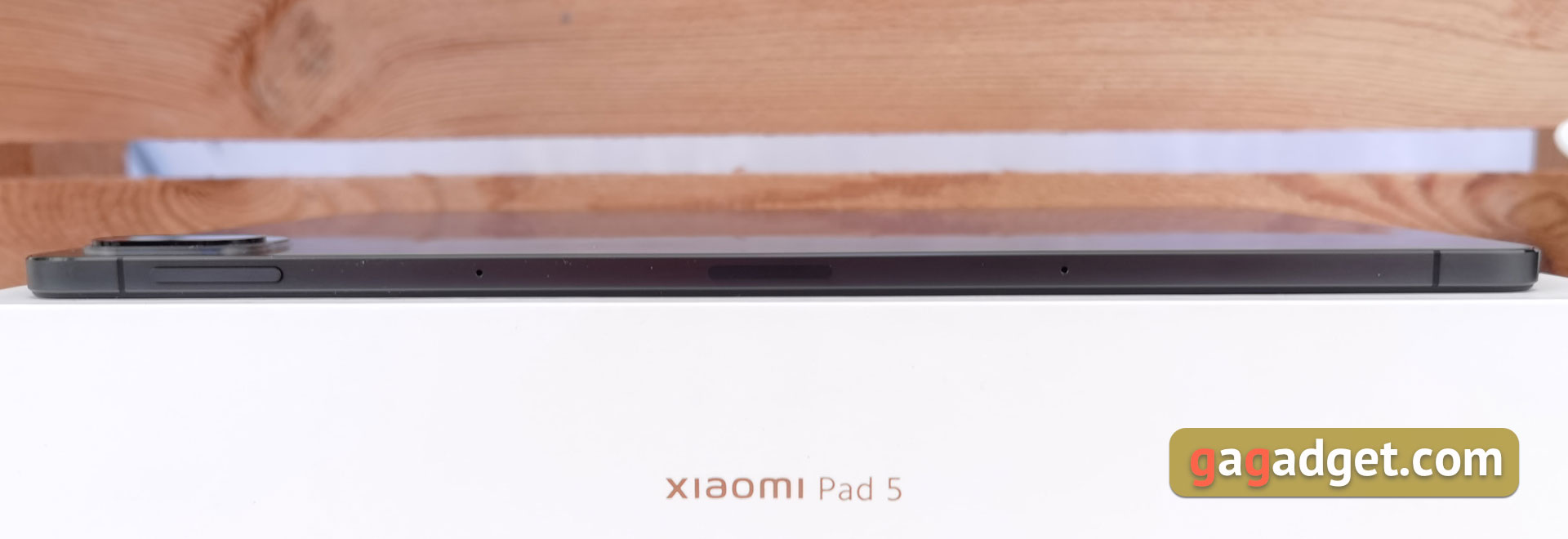
On the left there is another microphone, a pair of speakers, a power button and a logo Dolby Vision Atmos:

On the opposite side there is also one microphone and a pair of speakers, as well as a USB Type-C connector:
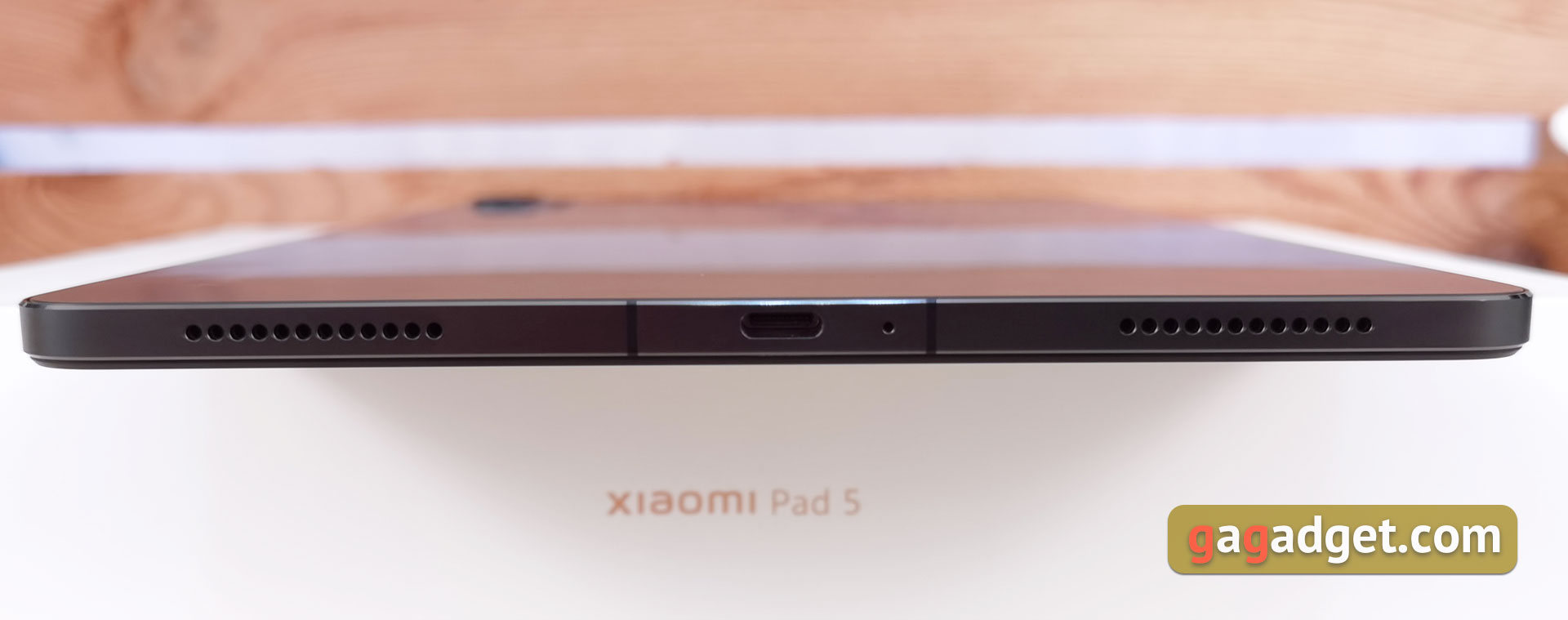
The entire back cover is made of plastic with a very nice matte finish. In our case, the backdrop is dark gray, it looks very solid. And traces of use are almost invisible thanks to the matte finish. The rear camera block is made in the style of the company's current smartphones: a rectangular shape with rounded corners. The rear camera has a flash.

The tablet is quite large: 254.7x166.25 mm, which is not surprising with a screen diagonal of 11 inches. At the same time, very thin: 6.85 mm. The weight is impressive: 511 g, so holding the tablet with one hand for a long time is not very convenient.
The Screen

The Xiaomi Pad 5 has an 11-inch IPS display. The aspect ratio is 16:10 and the resolution is WQHD + (2560x1600), pixel density - 275 ppi, which is quite enough for a tablet. The manufacturer promises a maximum brightness of 500 cd / m2, there is support for HDR10 and Dolby Vision, and the color gamut corresponds to the DCI-P3 color space. The display is capable of displaying more than 1 billion colors. The display refresh rate is 120 Hz. In the settings there is dark mode with the ability to work on a schedule, reading mode, font size, choice of refresh rate (60 or 120 Hz, no adaptive mode), color display modes with color temperature adjustment, as well as adaptive adjustment depending on ambient light.
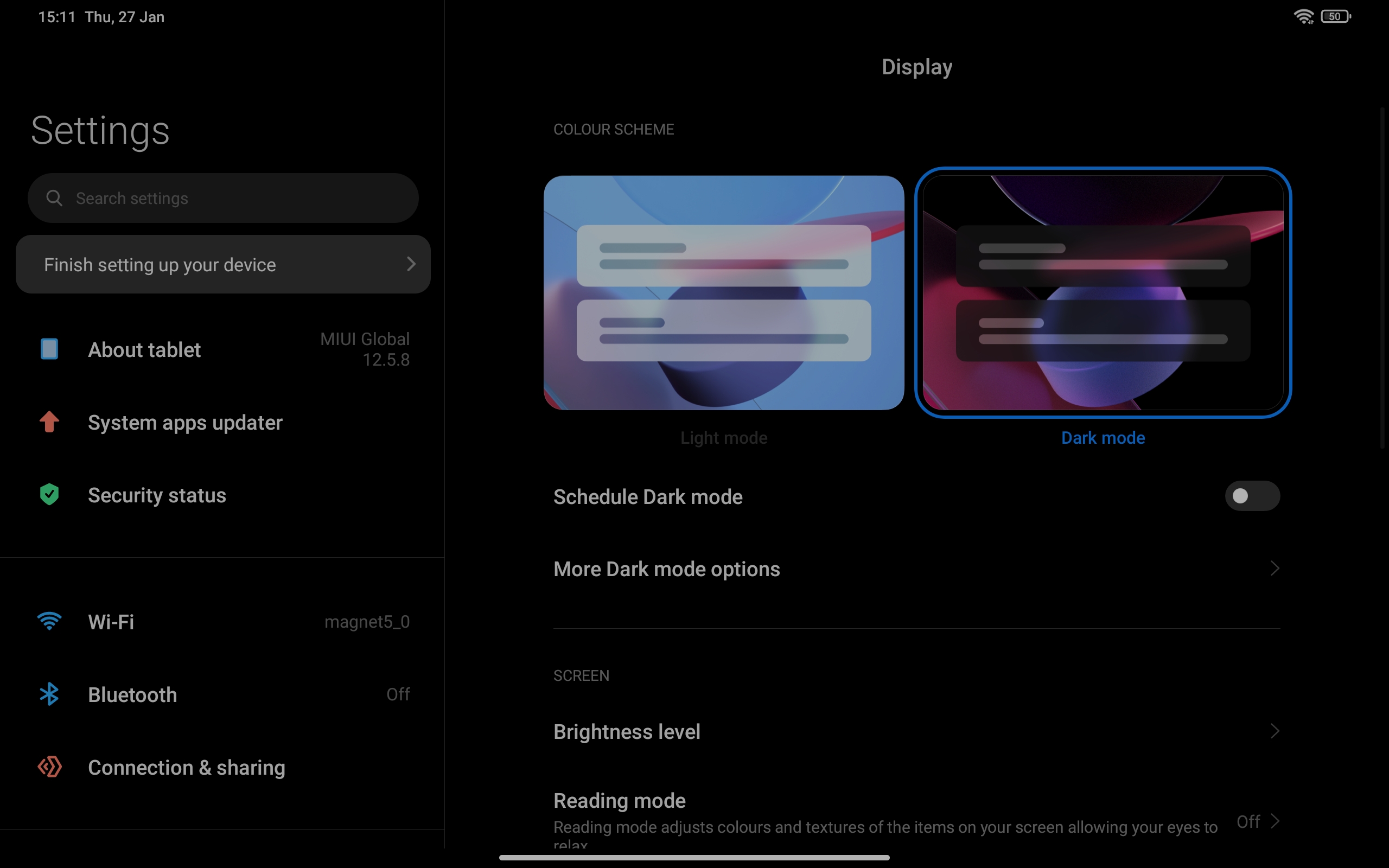

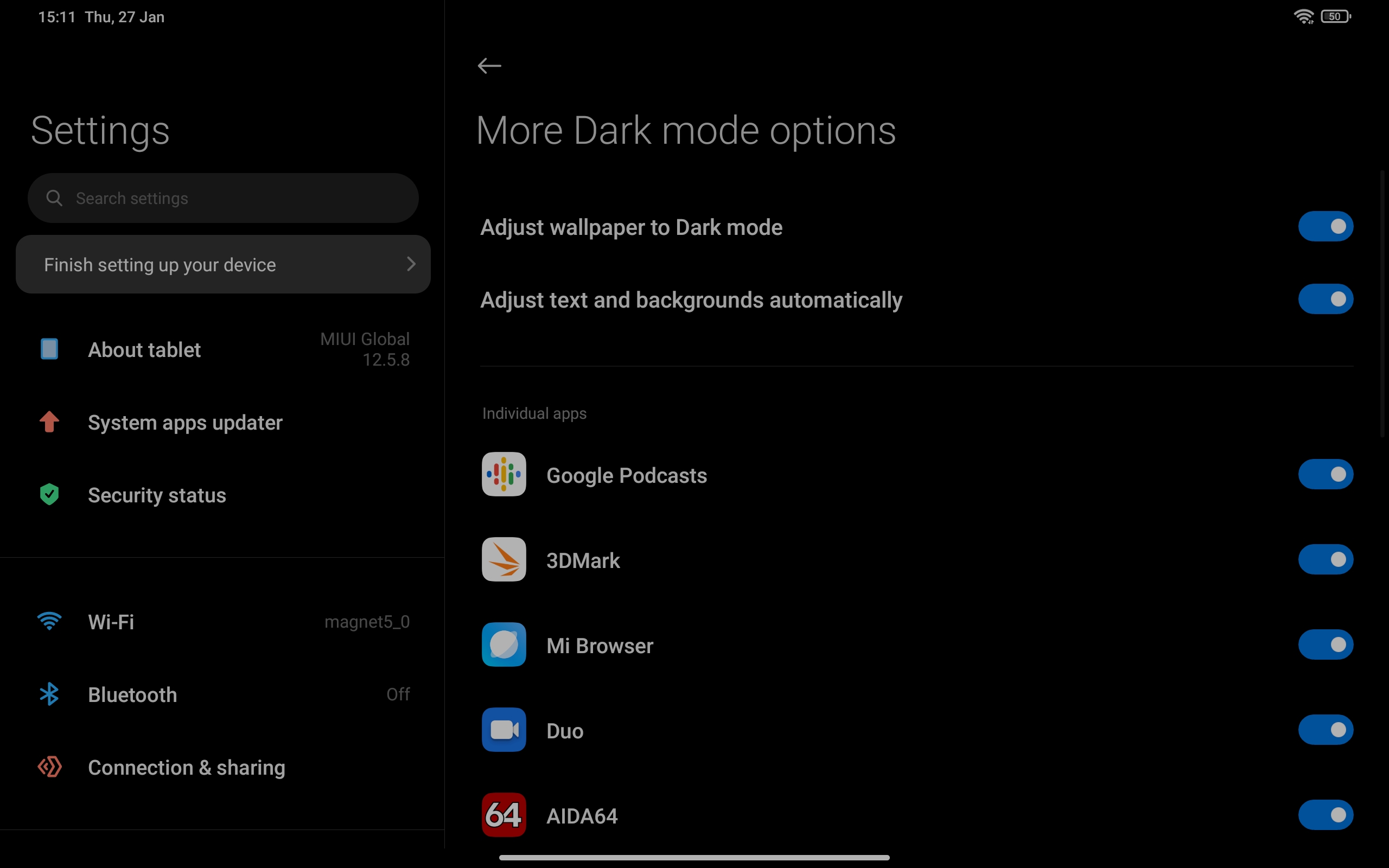
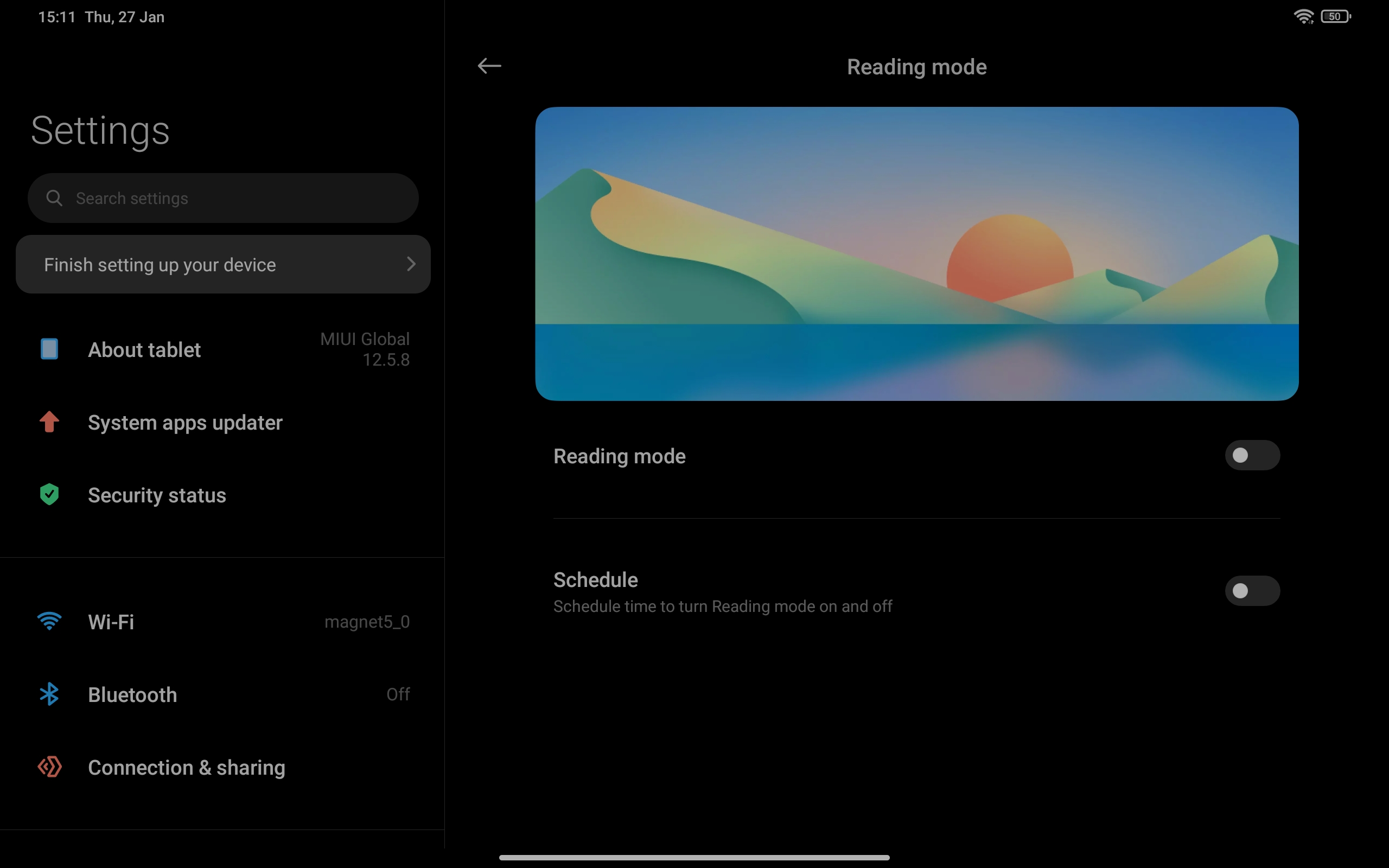
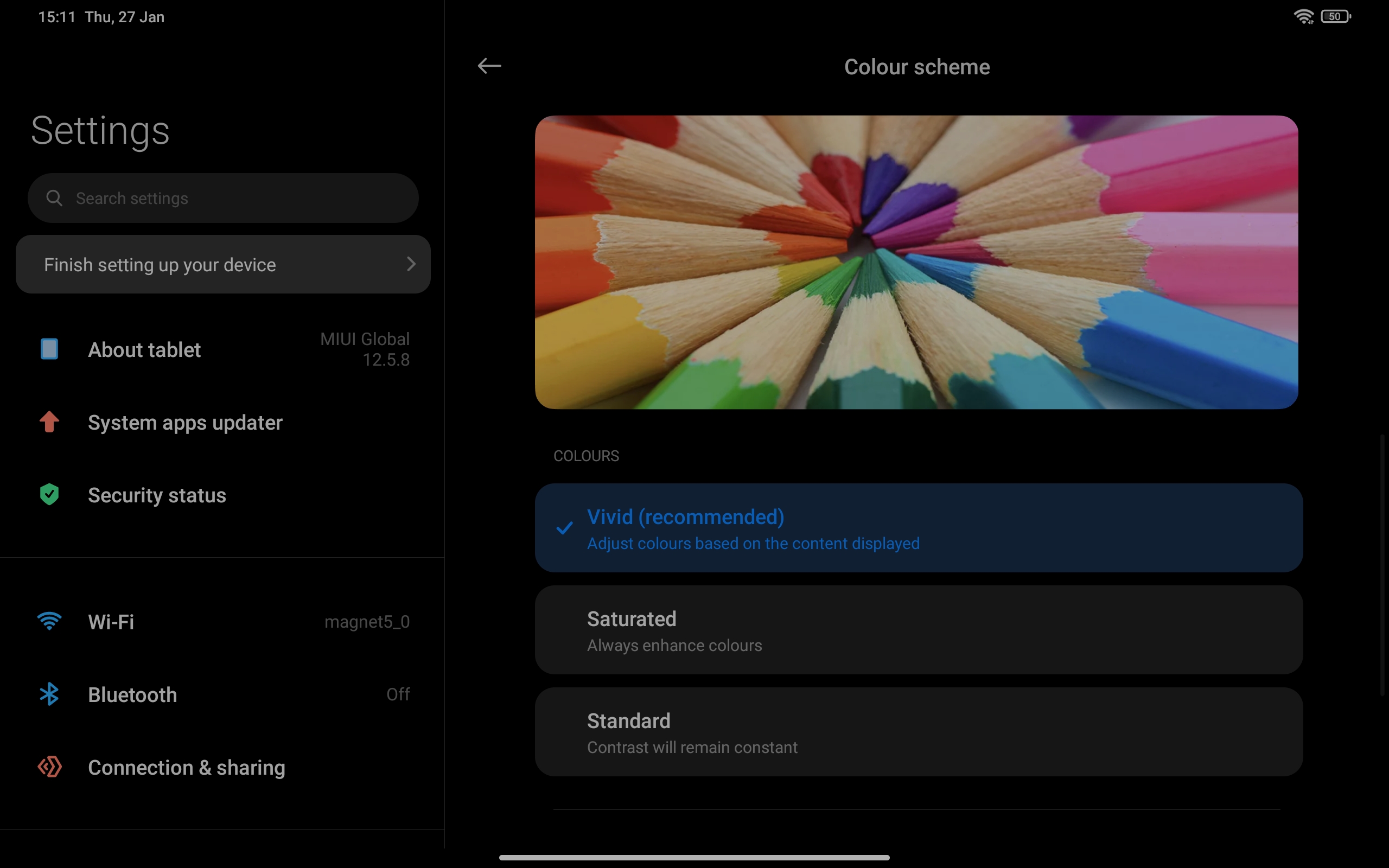

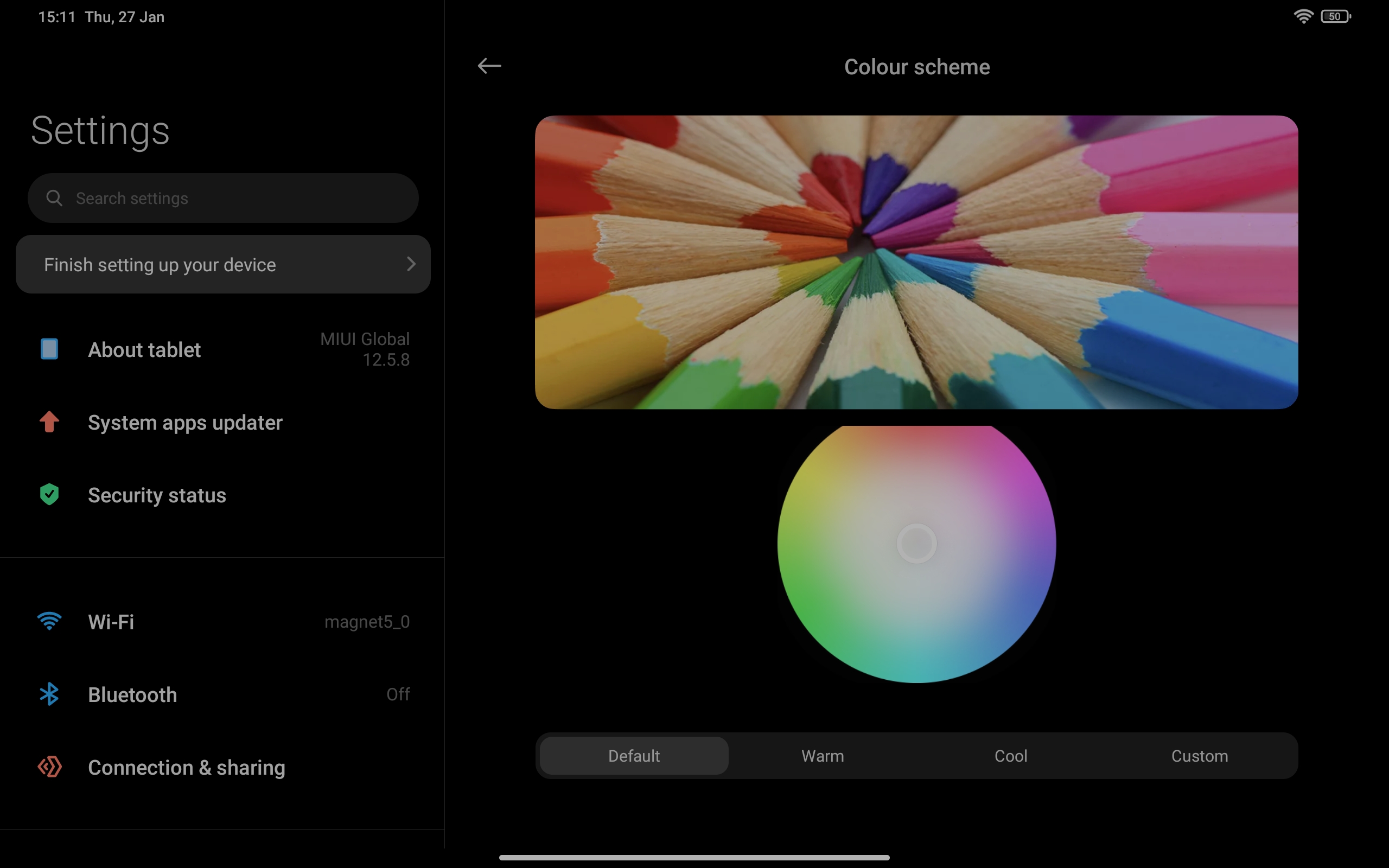
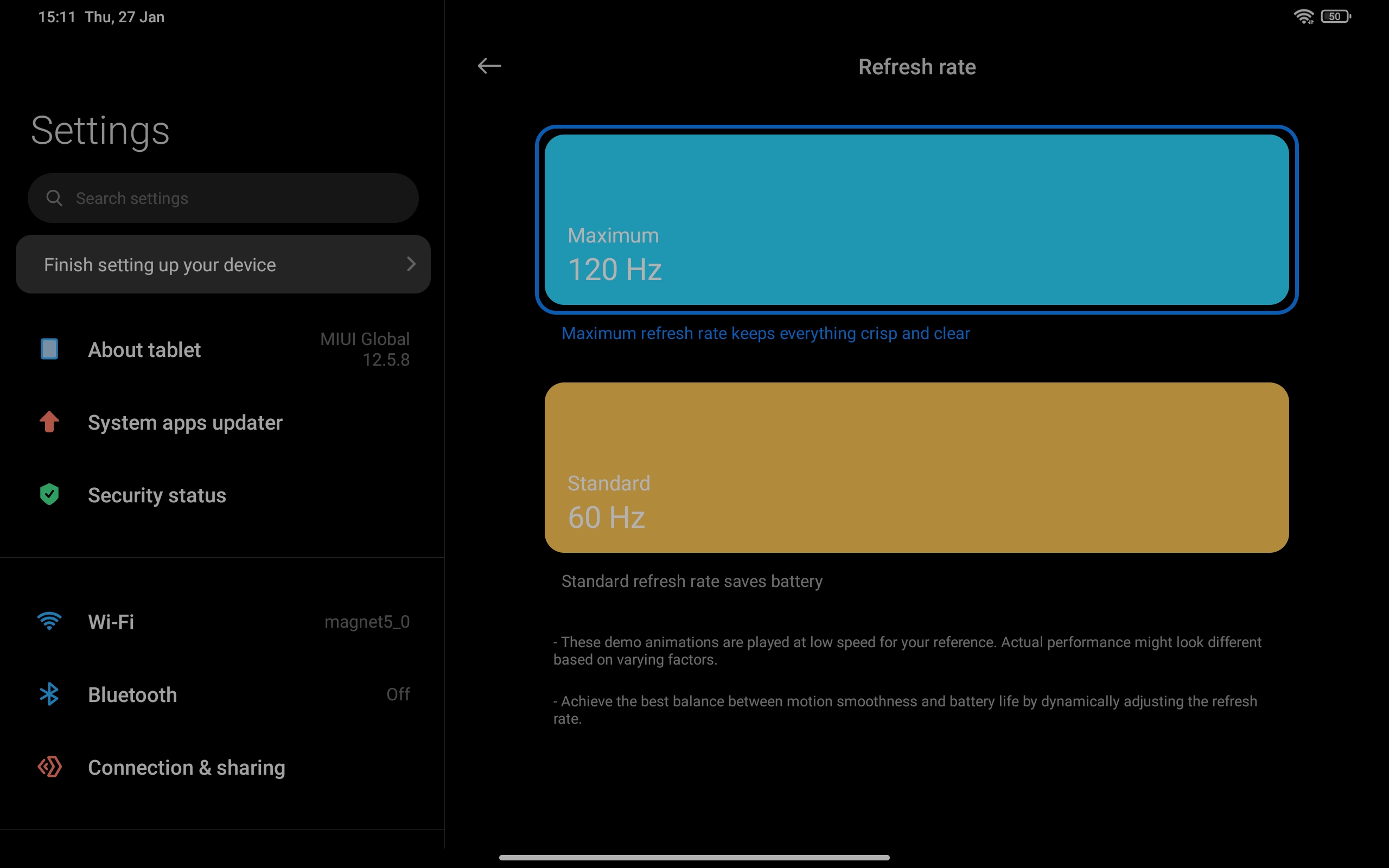








The Xiaomi Pad 5 screen makes a very good impression, both in terms of brightness and picture quality. Yes, the blacks are not as deep as on AMOLED and the contrast is lower. But everything else is very good. In "Bright" mode, the maximum brightness was 447.328 cd/m2. The color gamut is much wider than sRGB. In fact, the company promised DCI-P3. At the same time, there is a rather noticeable bias towards cold shades, the color temperature is about 8500K (with the reference 6500K). You can adjust it in the settings if you want.


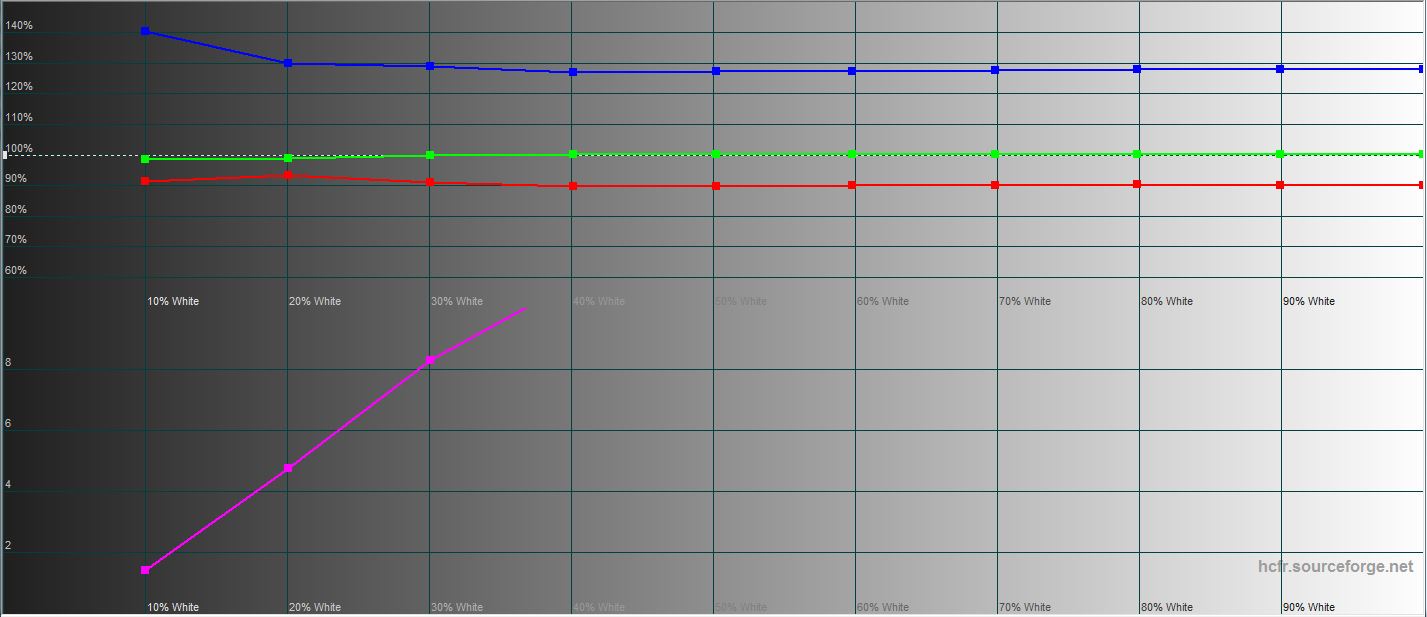
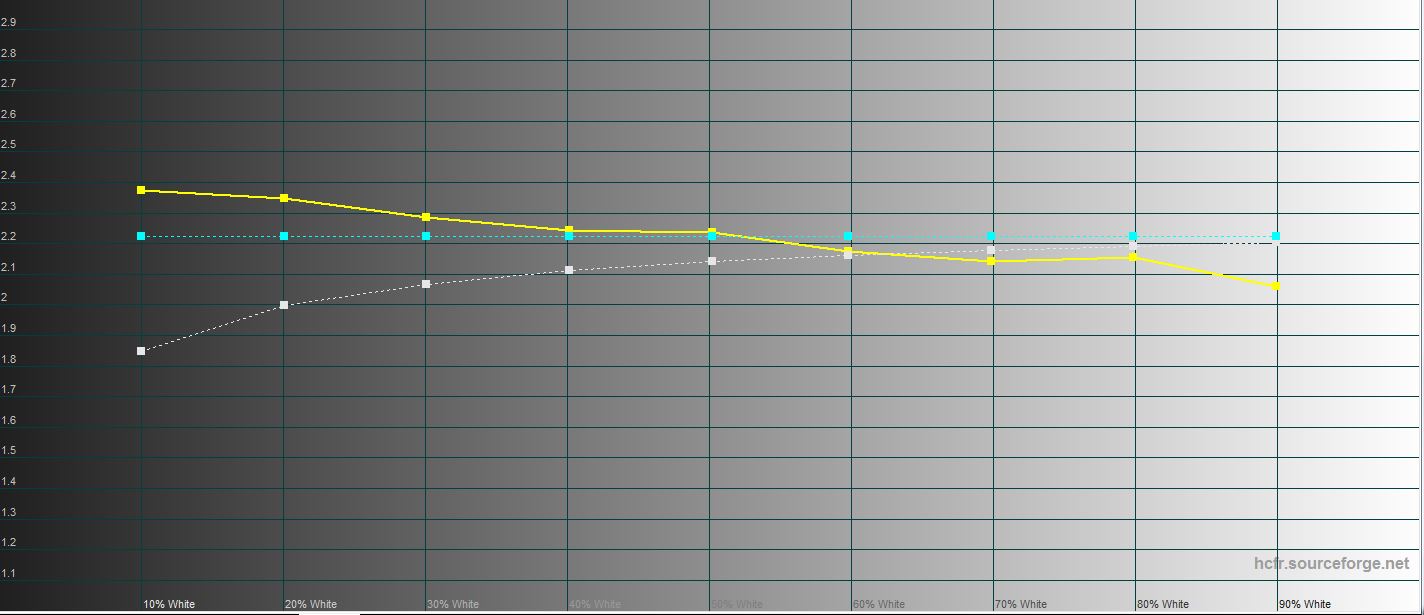






In the "Standard" mode, the color gamut is closer to the standard sRGB, and the color reproduction is more accurate, with less skew towards cool shades. At the same time, the maximum brightness was 431.631 cd/m2.
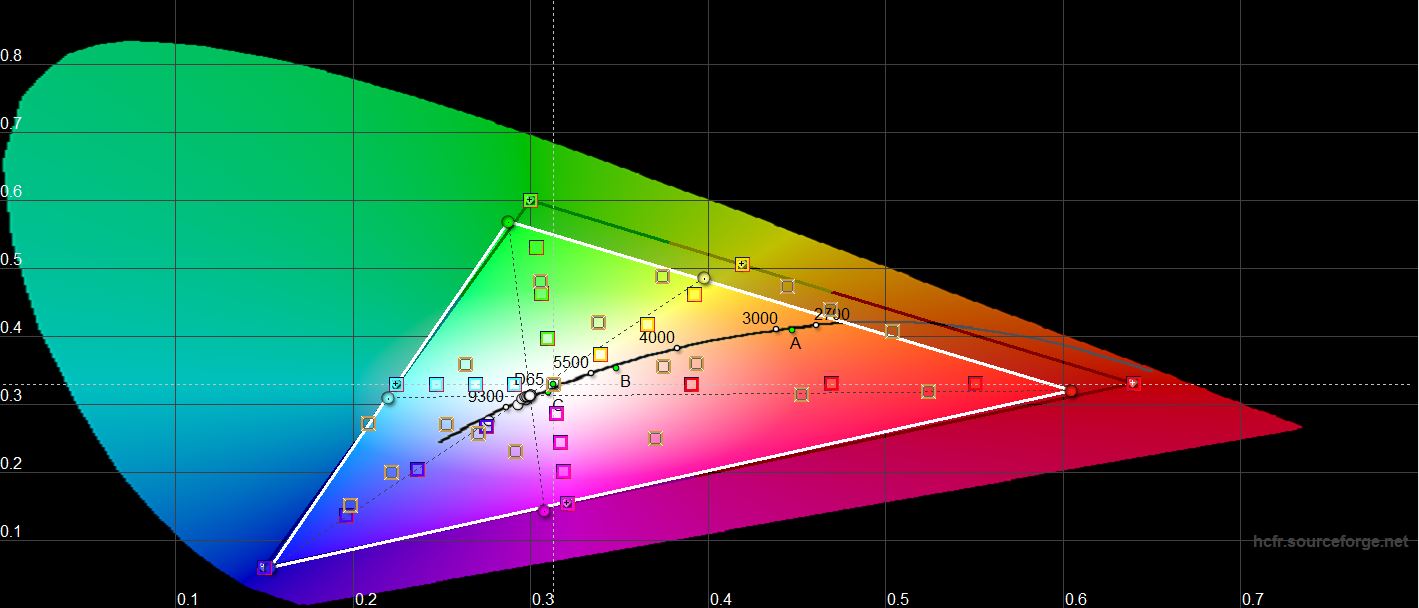
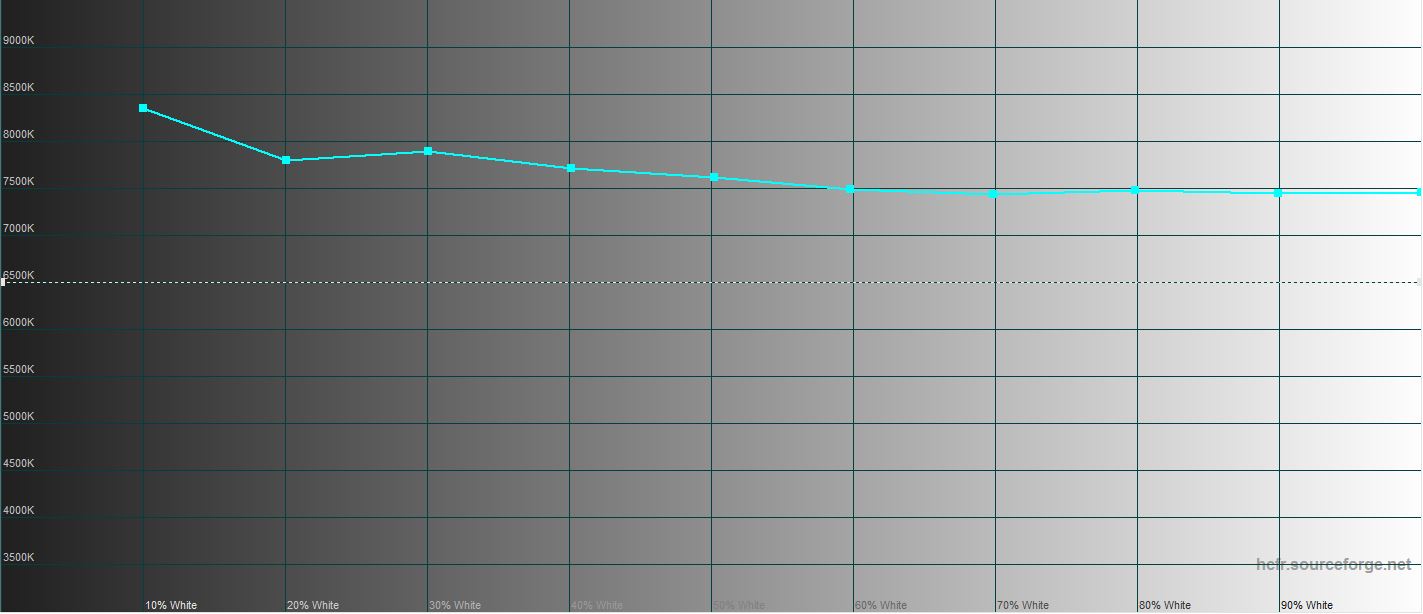

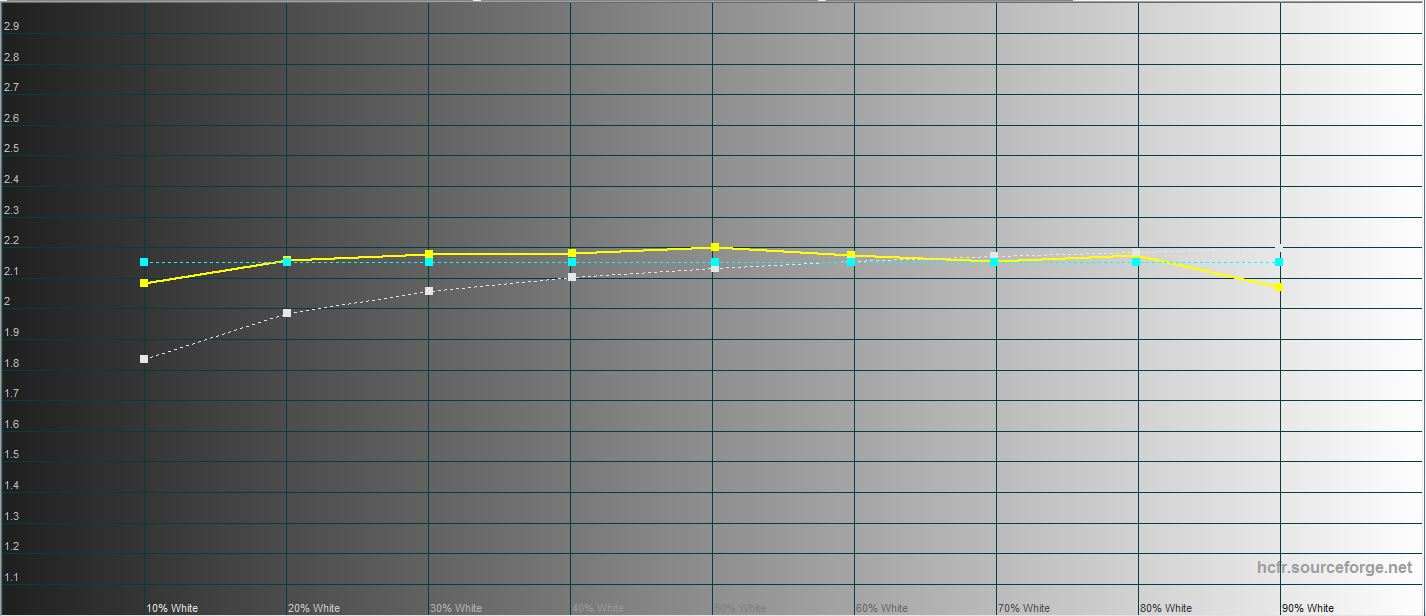






The Unlock Methods
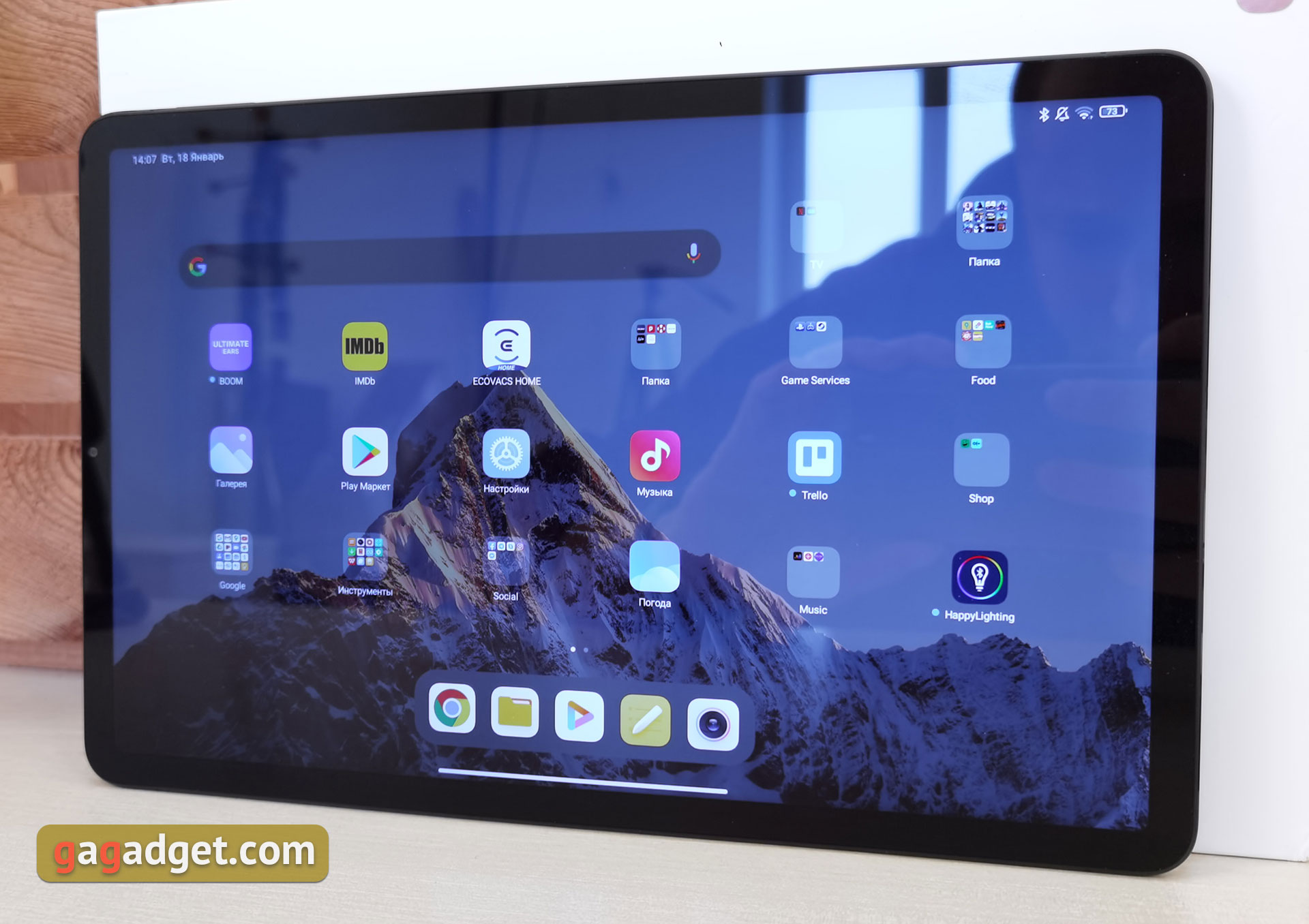
Unfortunately, with the ways to protect the device, everything is rather modest. A standard set of codes, passwords and graphic keys, to which they added face recognition using the front camera without additional sensors. Yes, face recognition is fast, but it is difficult to call this option ultra-reliable. Perhaps a fingerprint scanner in the power button would be very handy.
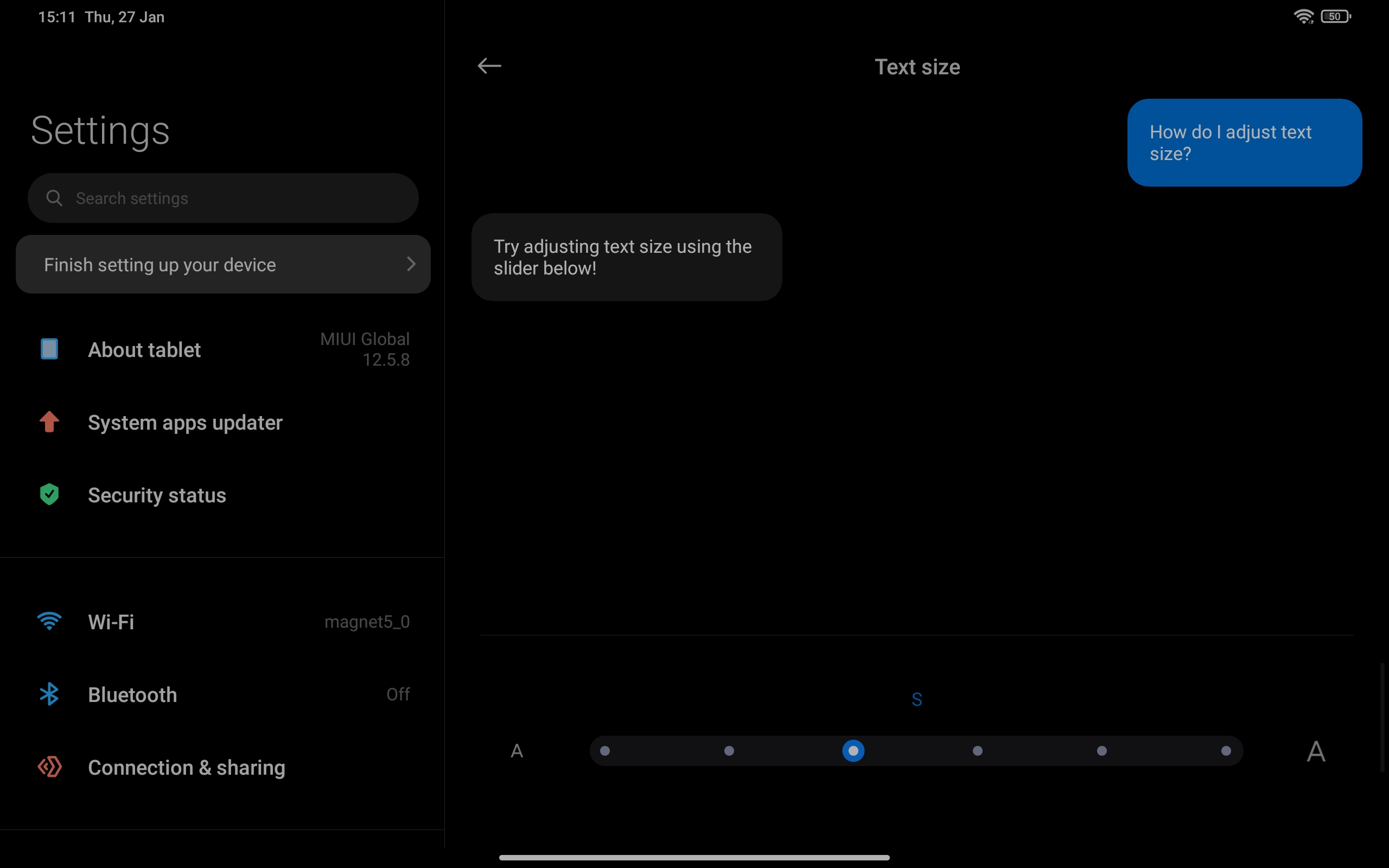
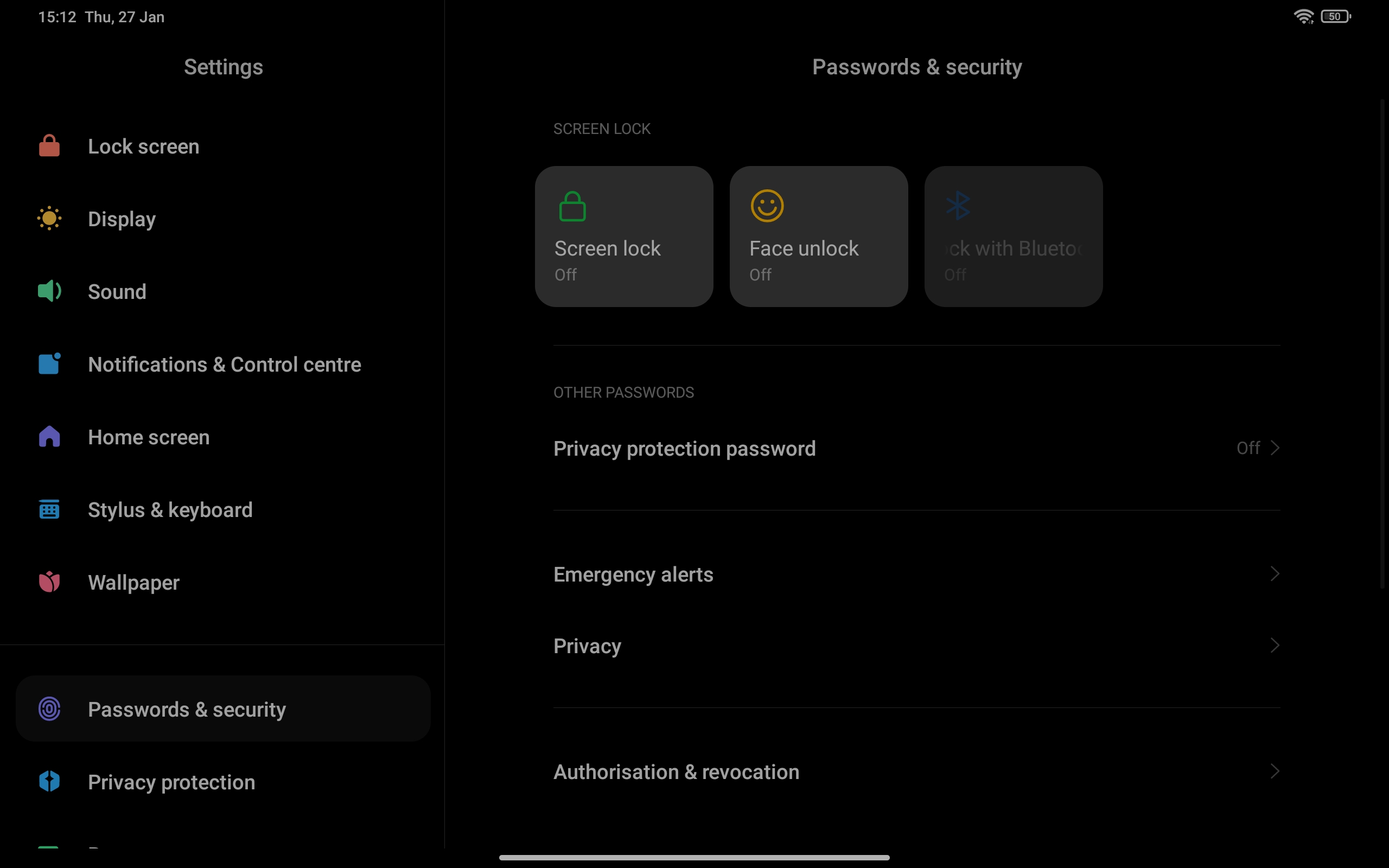
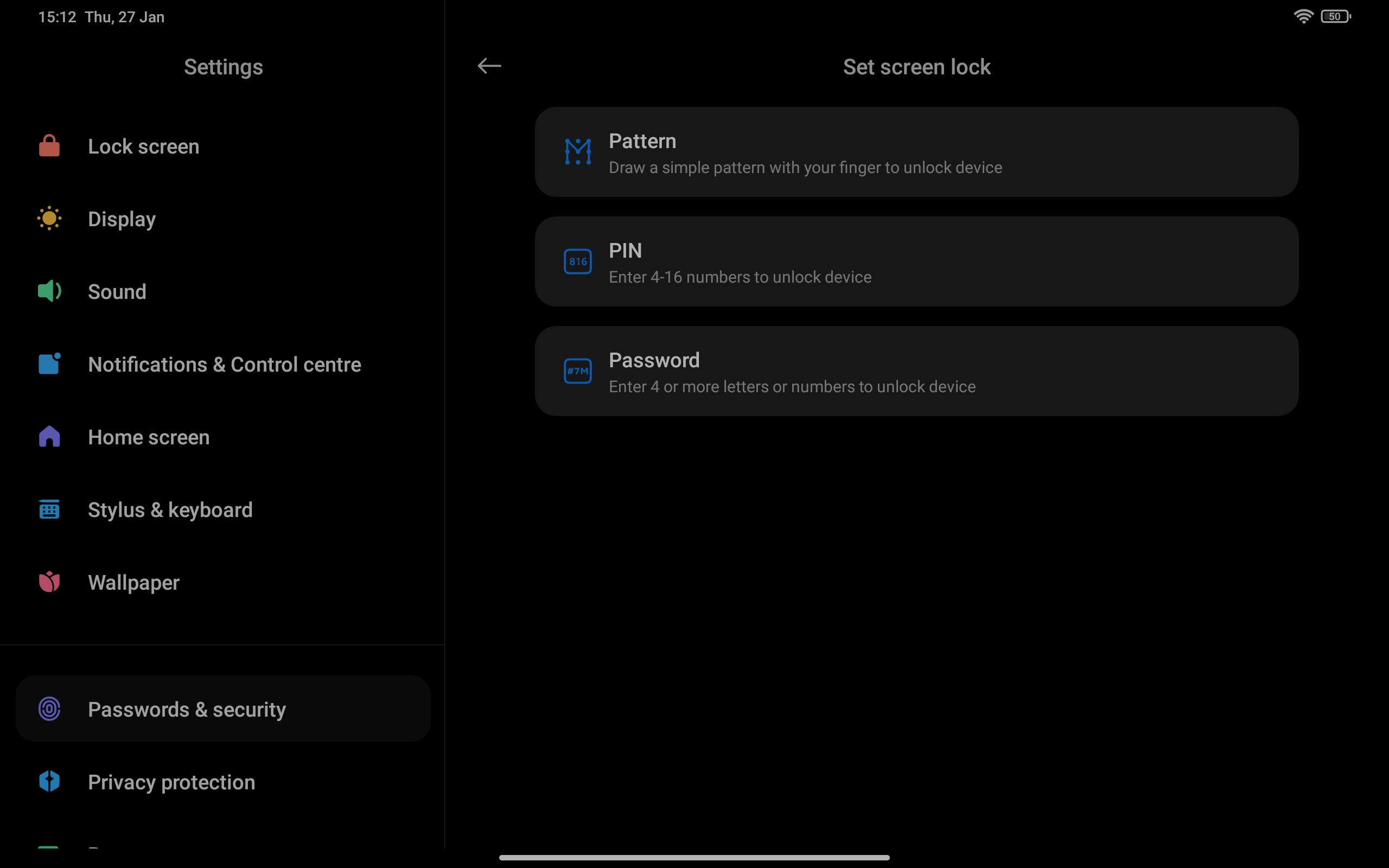
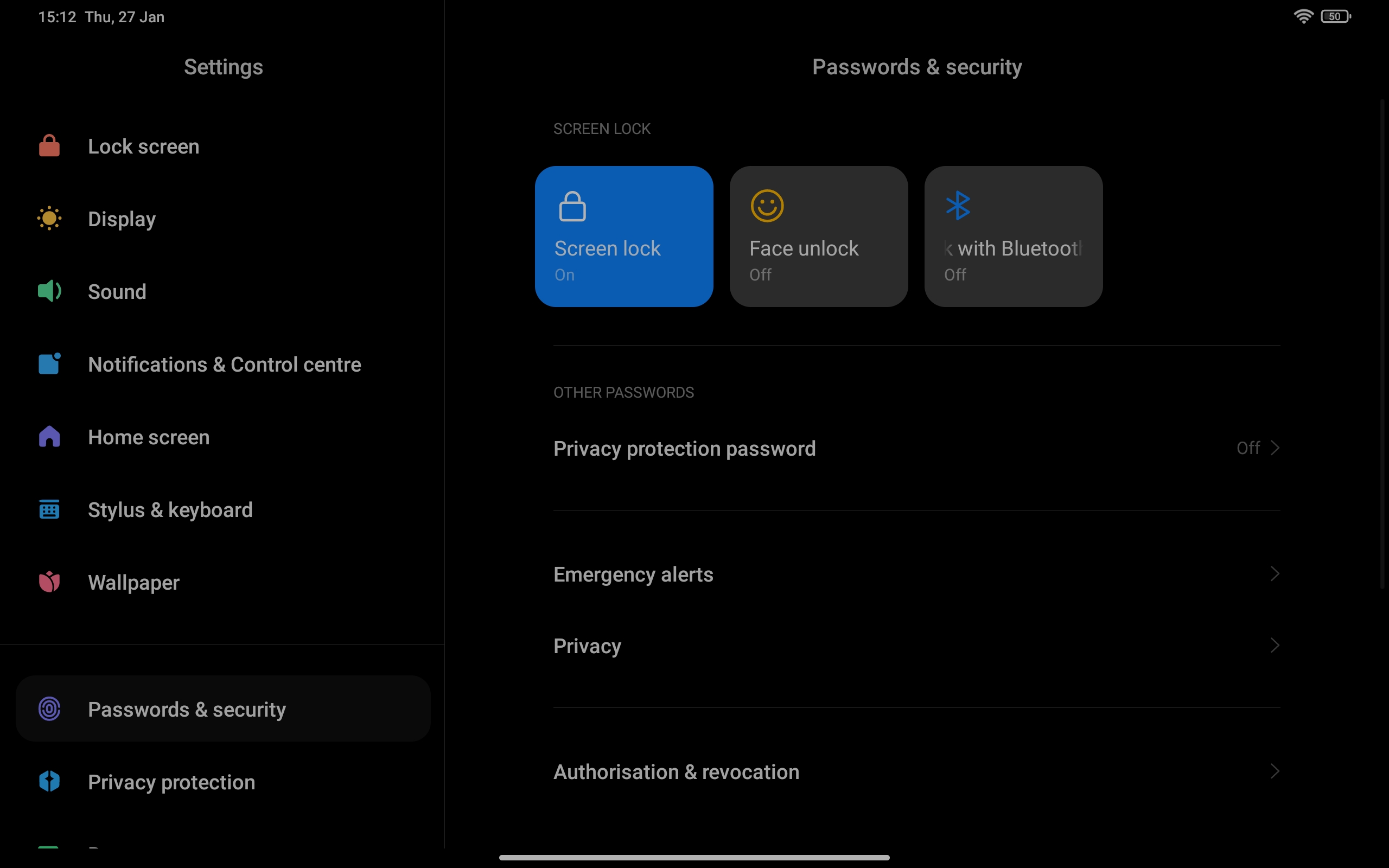
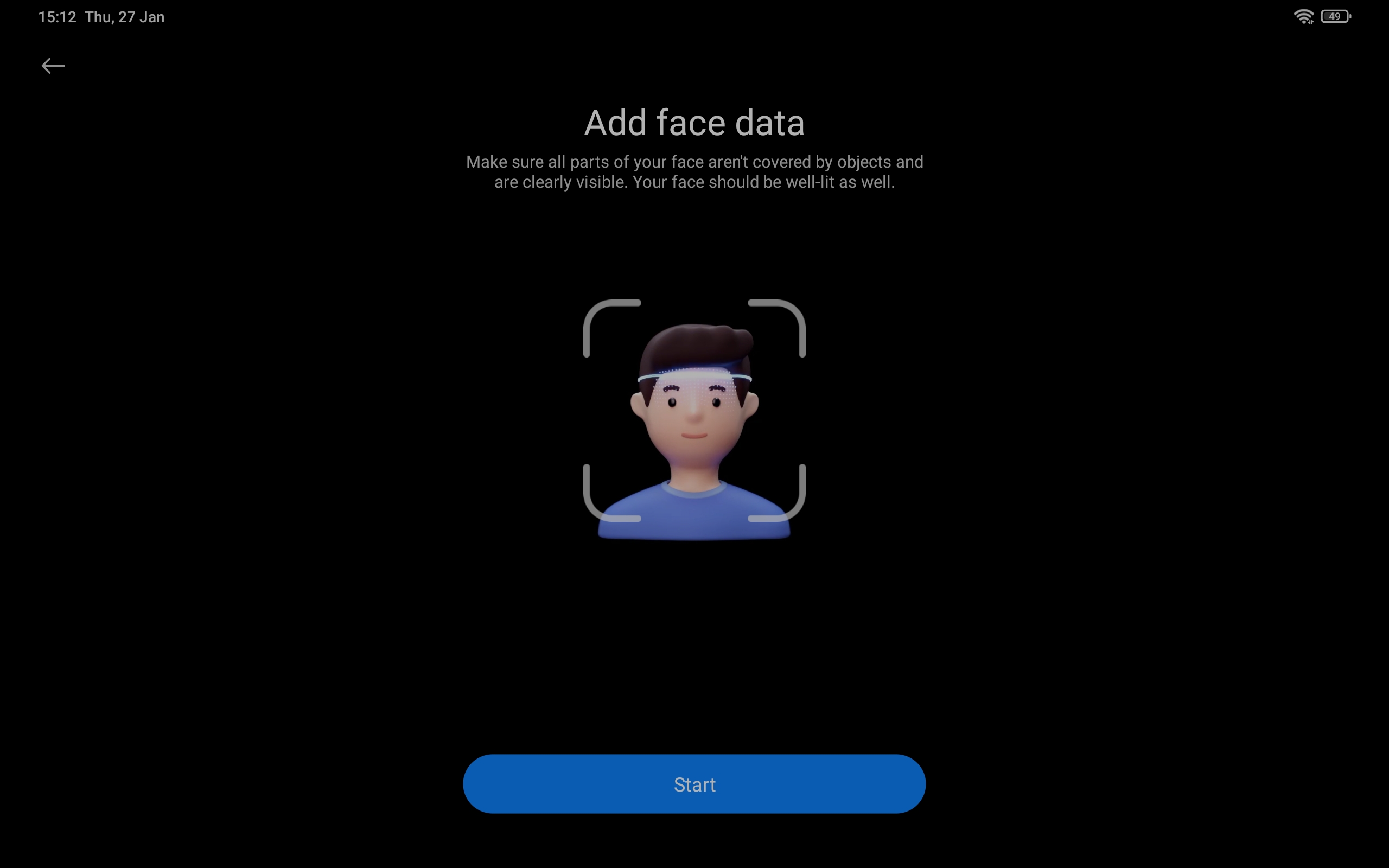
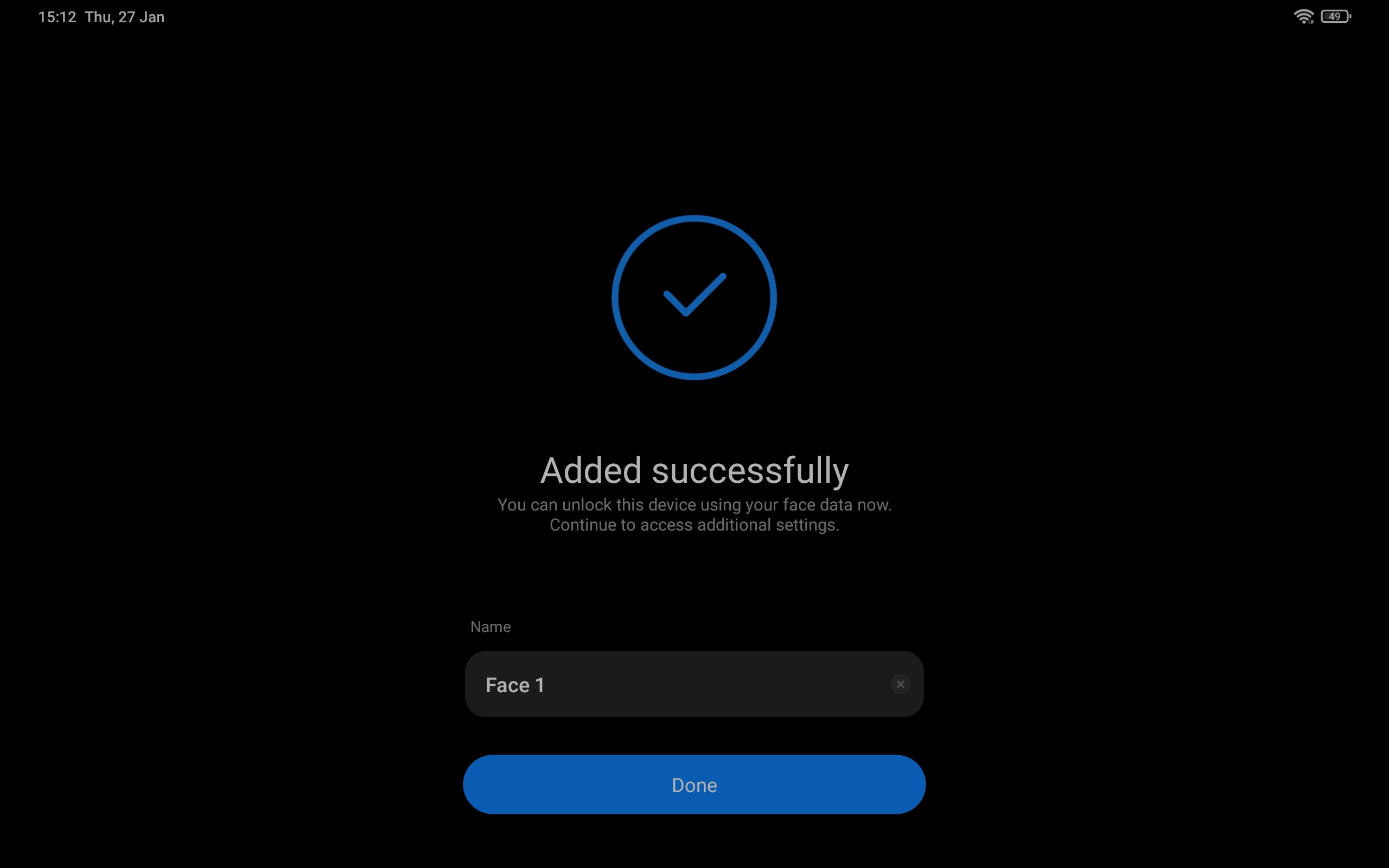

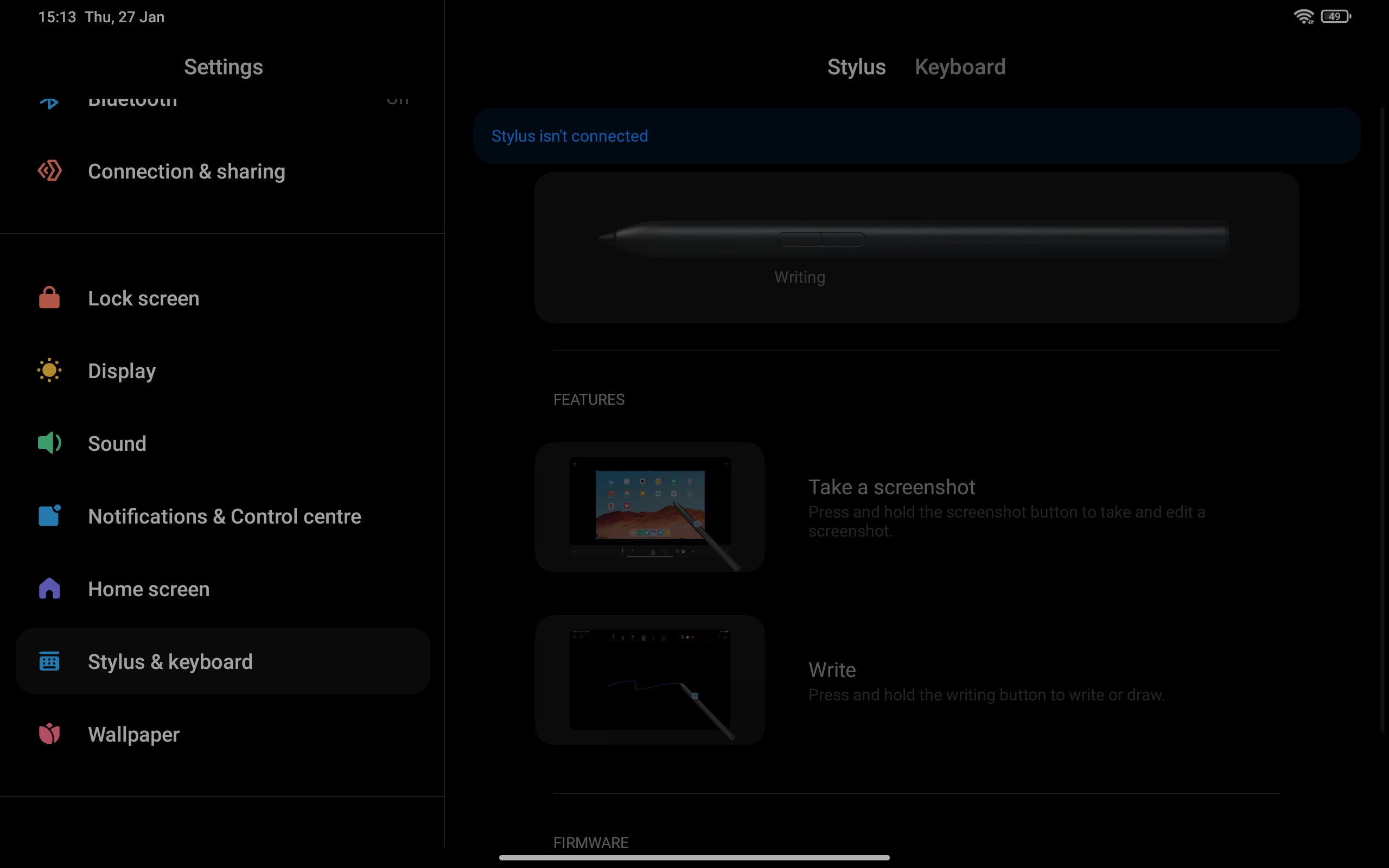
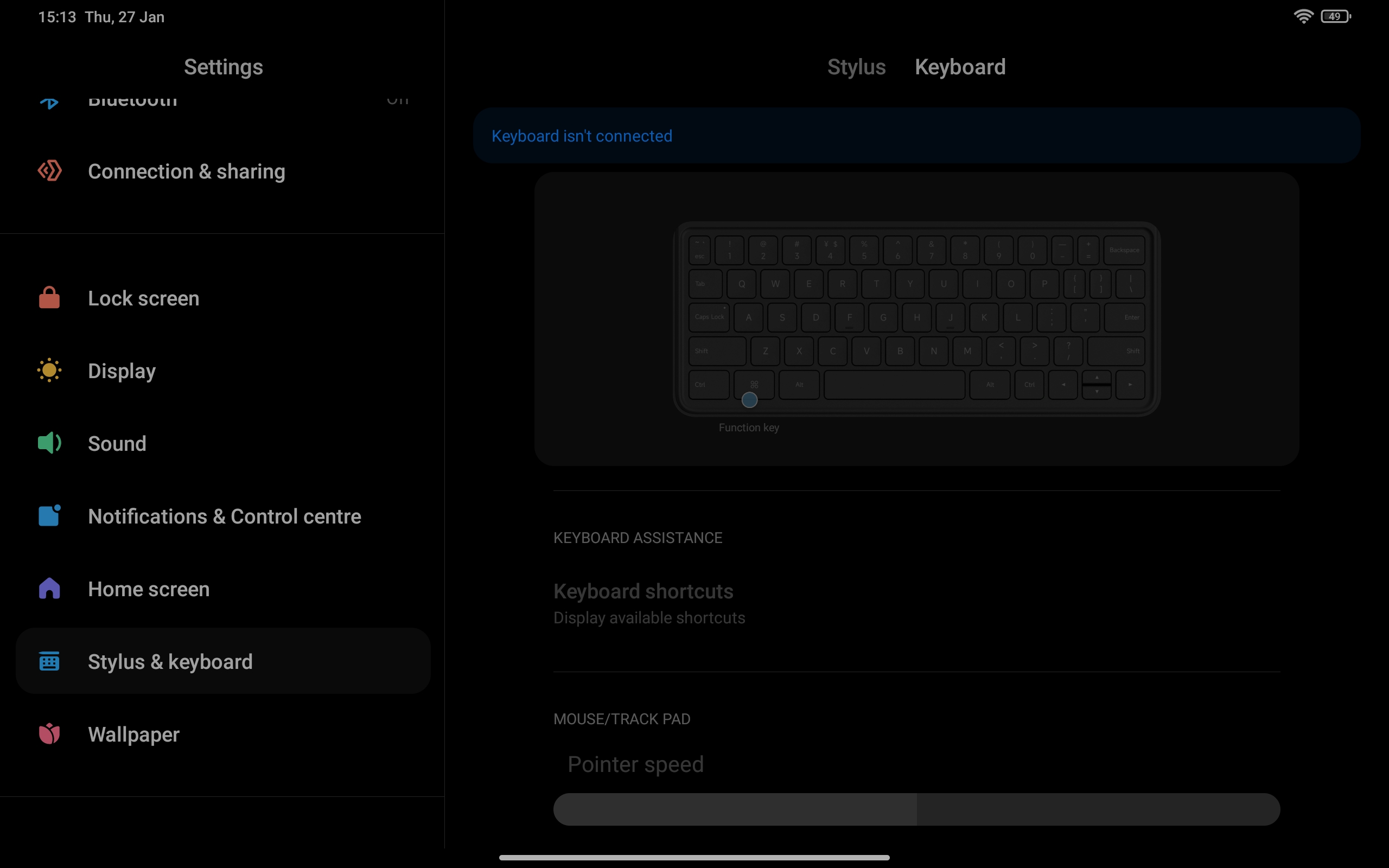
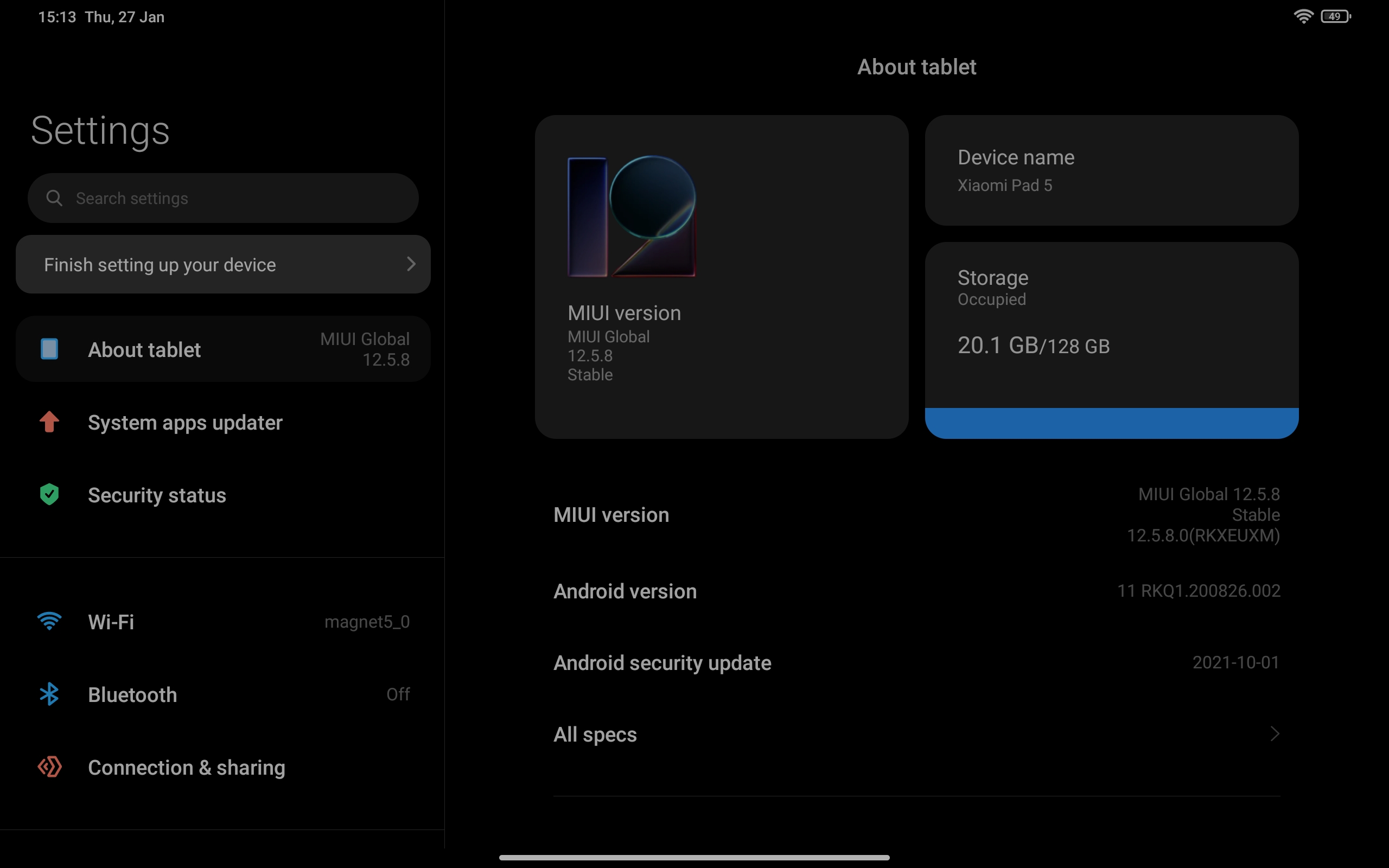










Performance, Memory, Sound and Battery Life
Xiaomi Pad 5 is equipped with Qualcomm Snapdragon 860 chipset, albeit not a top-end, but very productive one. This is an eight-core 7-nanometer processor, which includes one Kryo 485 Gold core at 2.96 GHz, three Kryo 485 Gold at 2.42 GHz and four energy-efficient Kryo 485 Silver at 1.78. The Adreno 640 accelerator is responsible for the graphics. The RAM is 6 GB LPDDR4X, and the built-in memory is 128 or 256 GB UFS 3.1. The slot for memory cards is not provided. On the one hand, we are used to streaming movies and music from the web. On the other hand, if you buy a tablet for watching movies and videos while traveling, then you should think about buying an older version. In synthetic tests, the tablet demonstrates not top-end, but very impressive results. The performance is enough for smooth operation of the interface, and for heavy applications, as well as modern games:
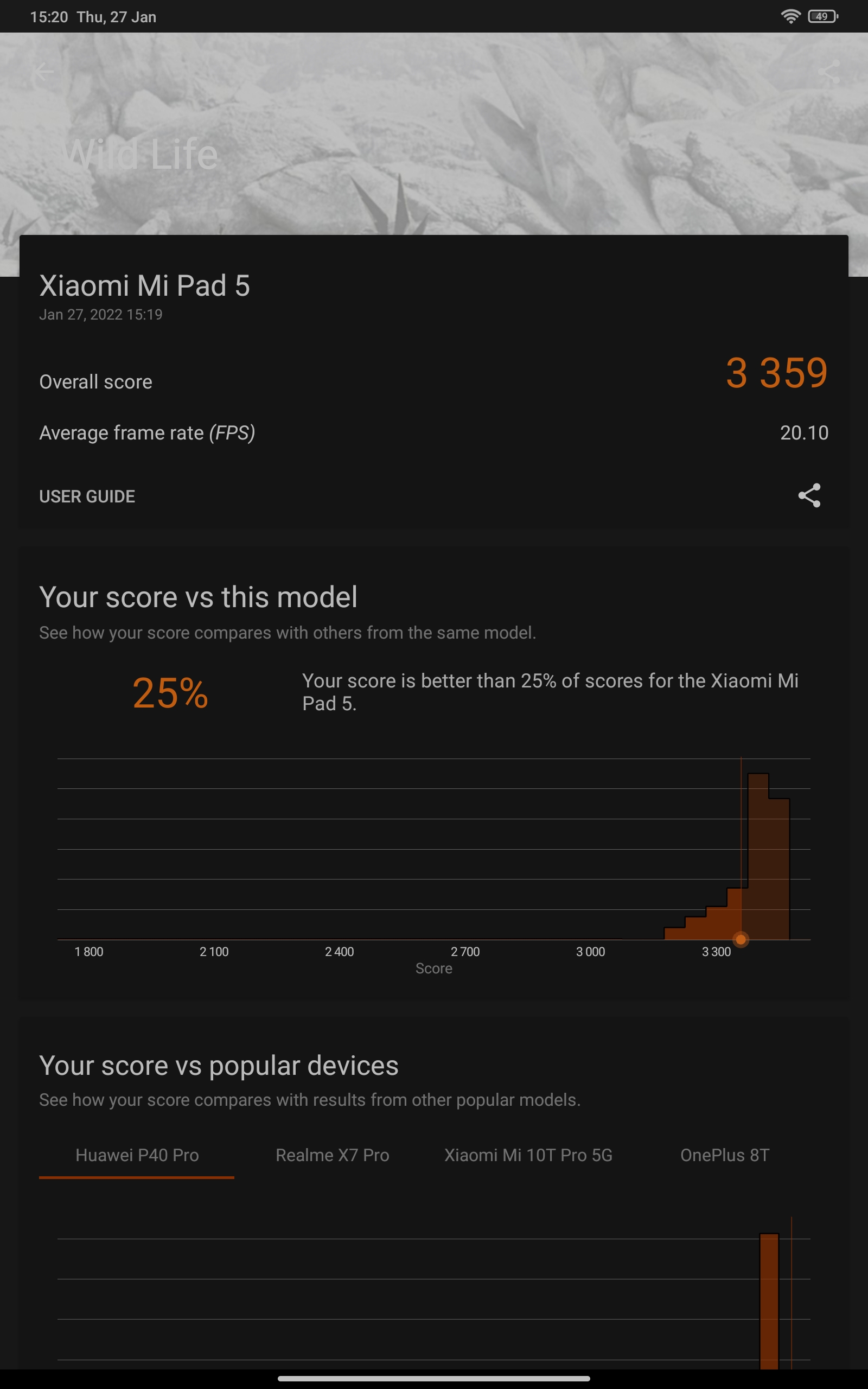
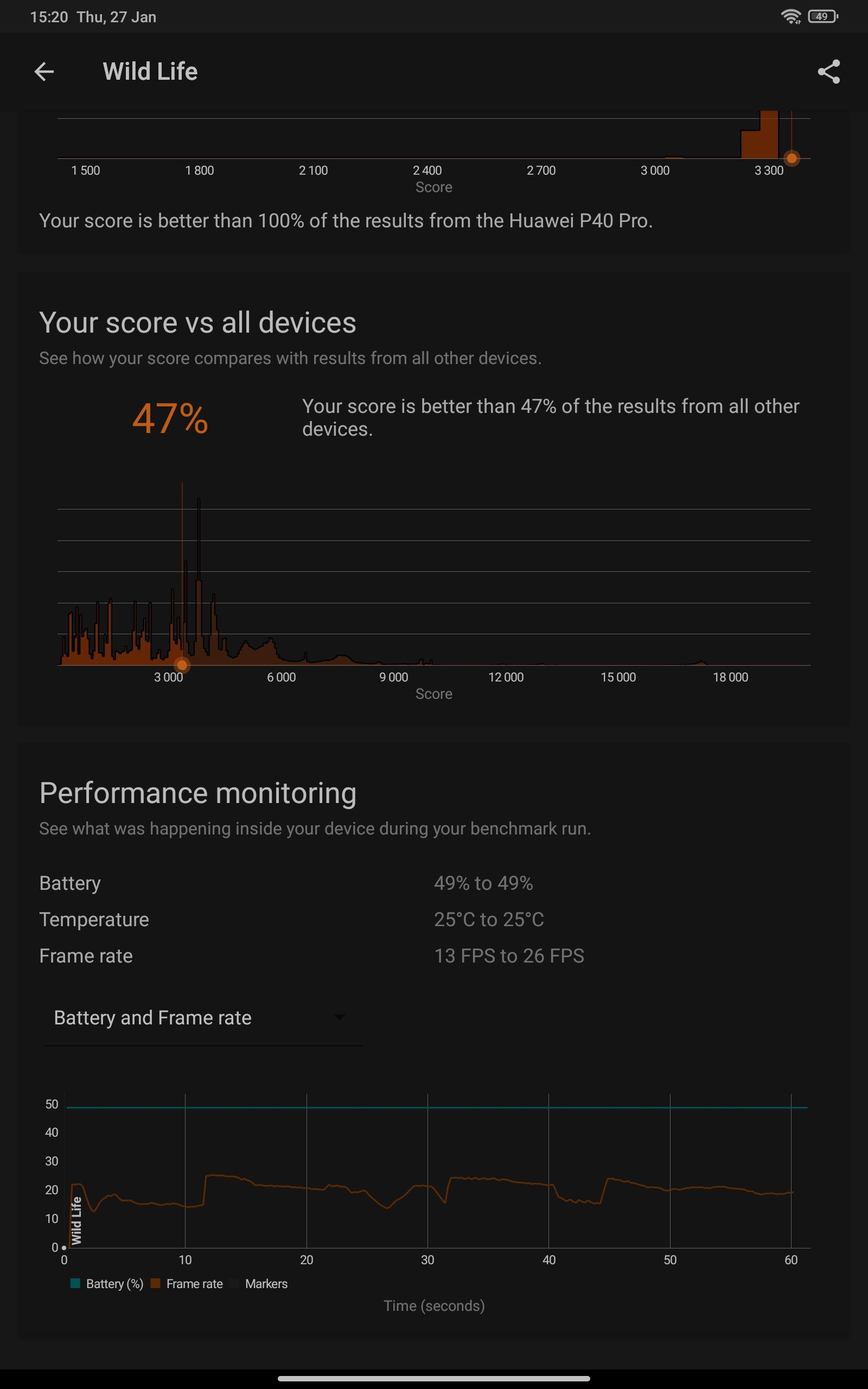

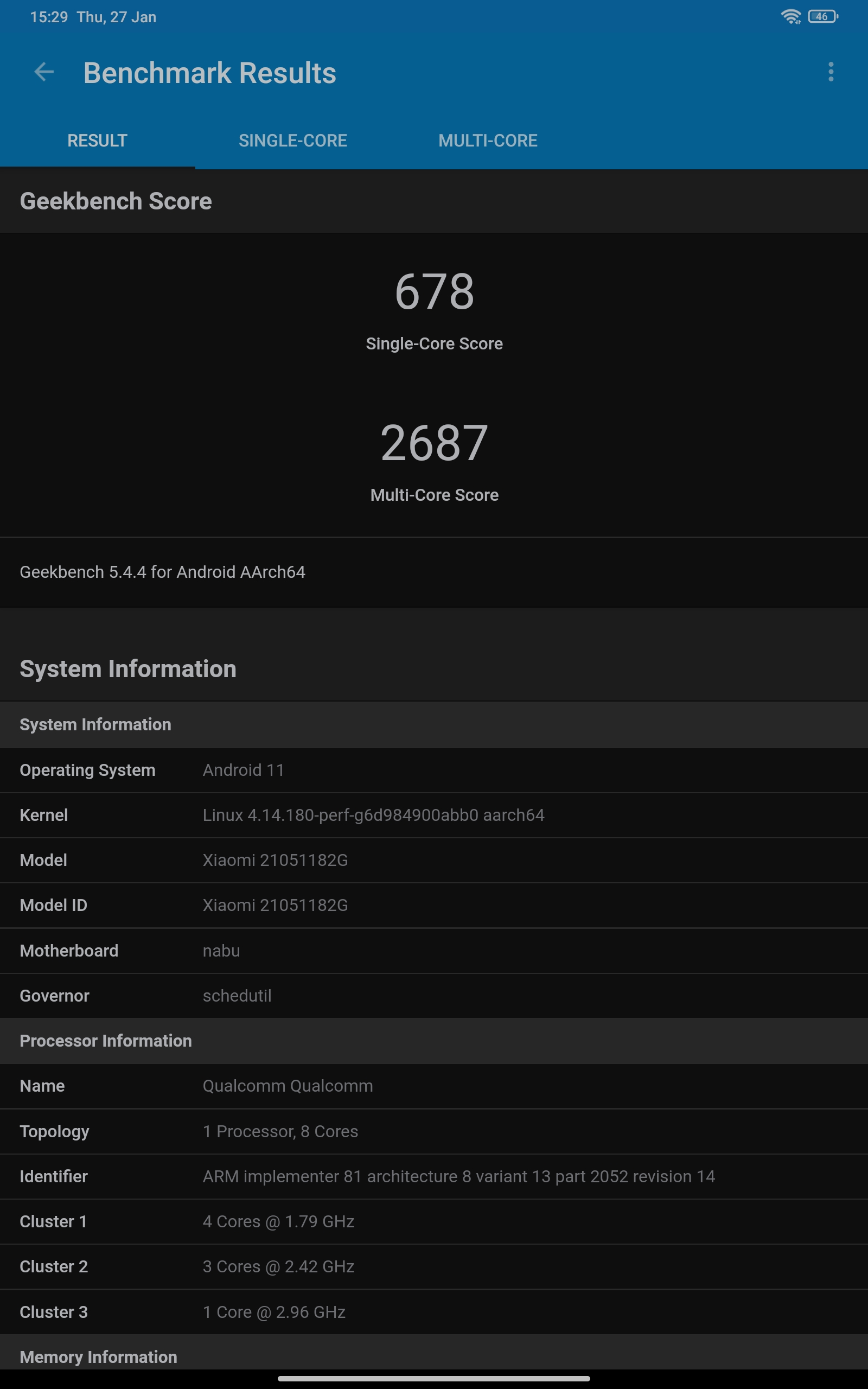
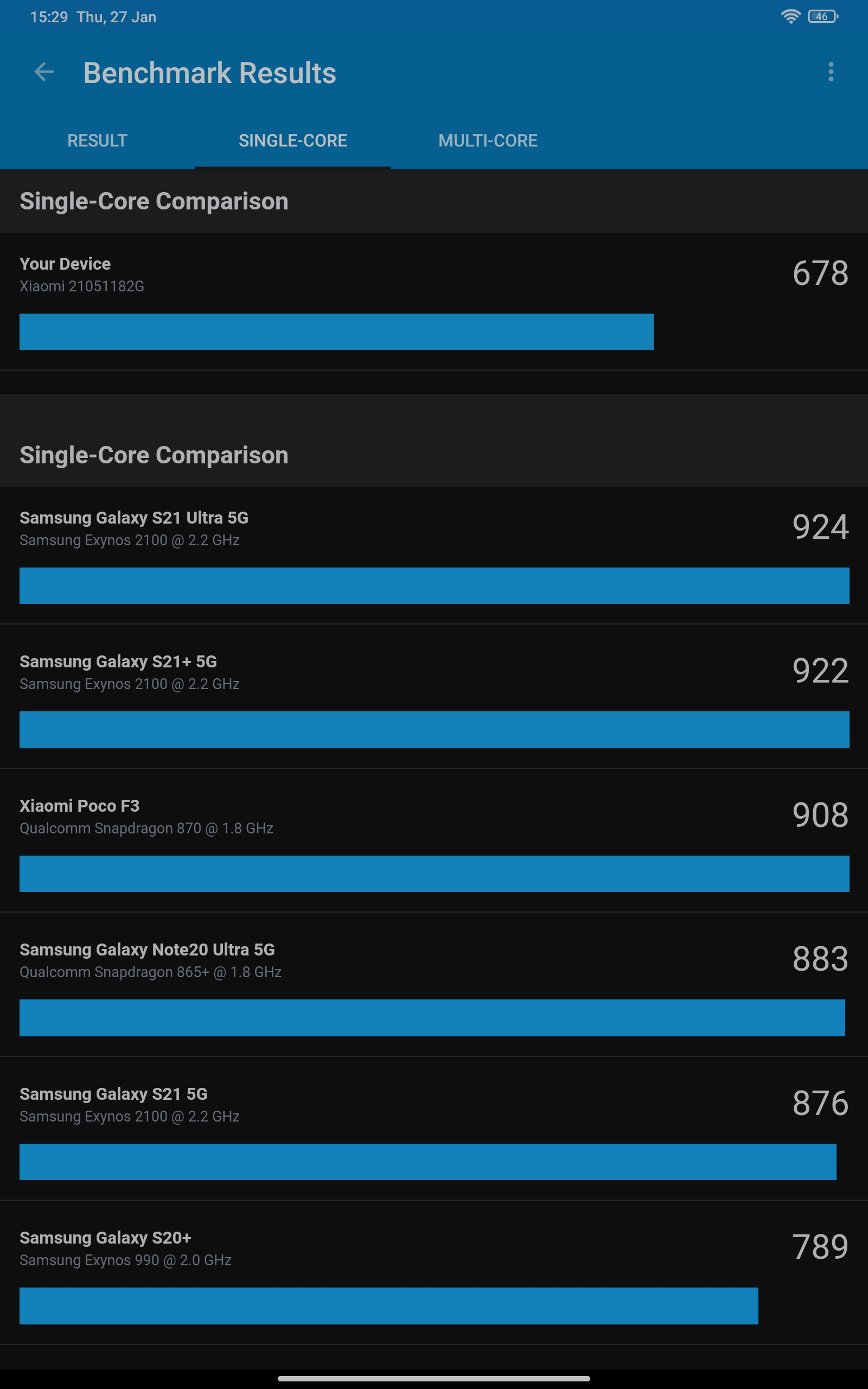
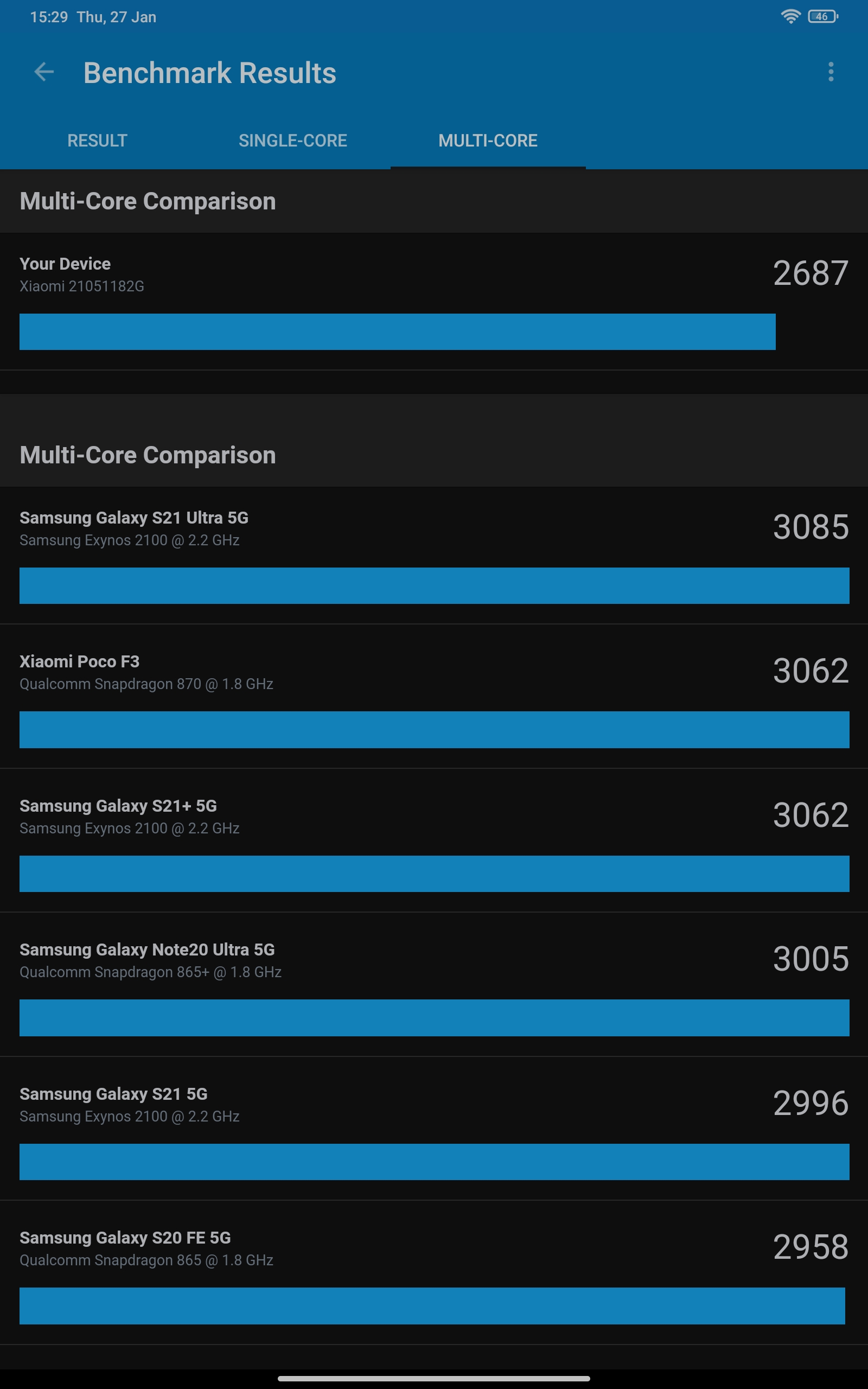
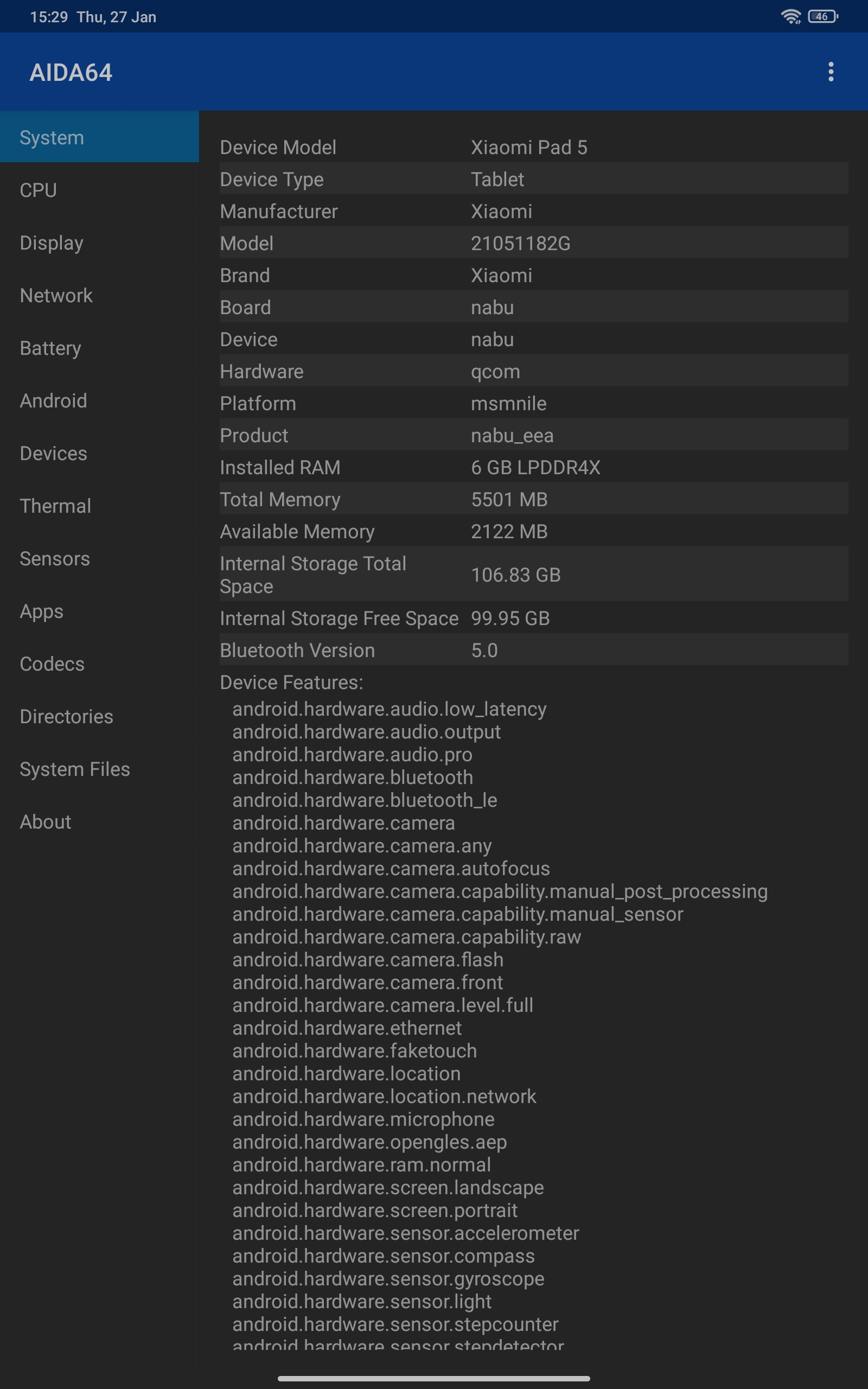
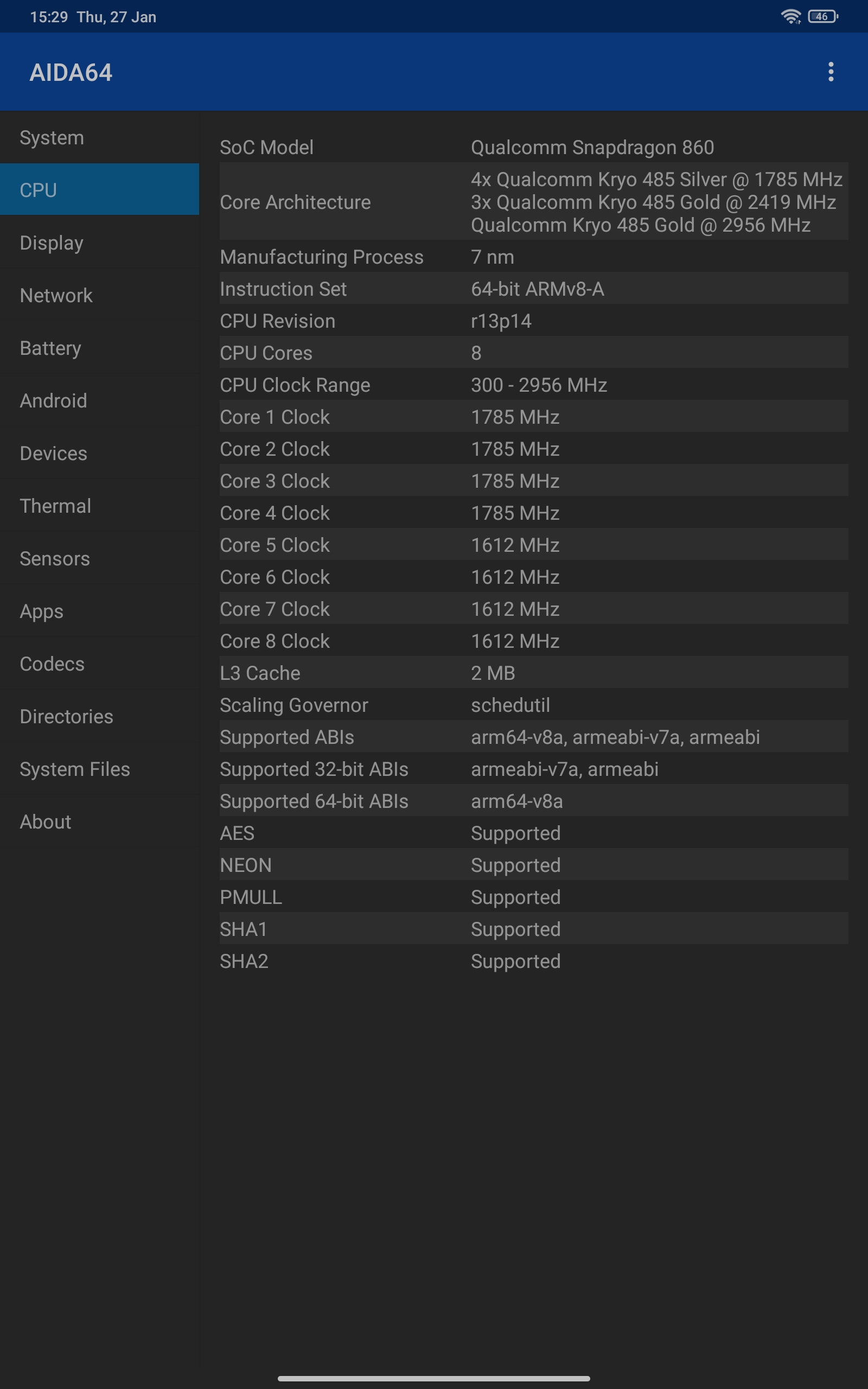
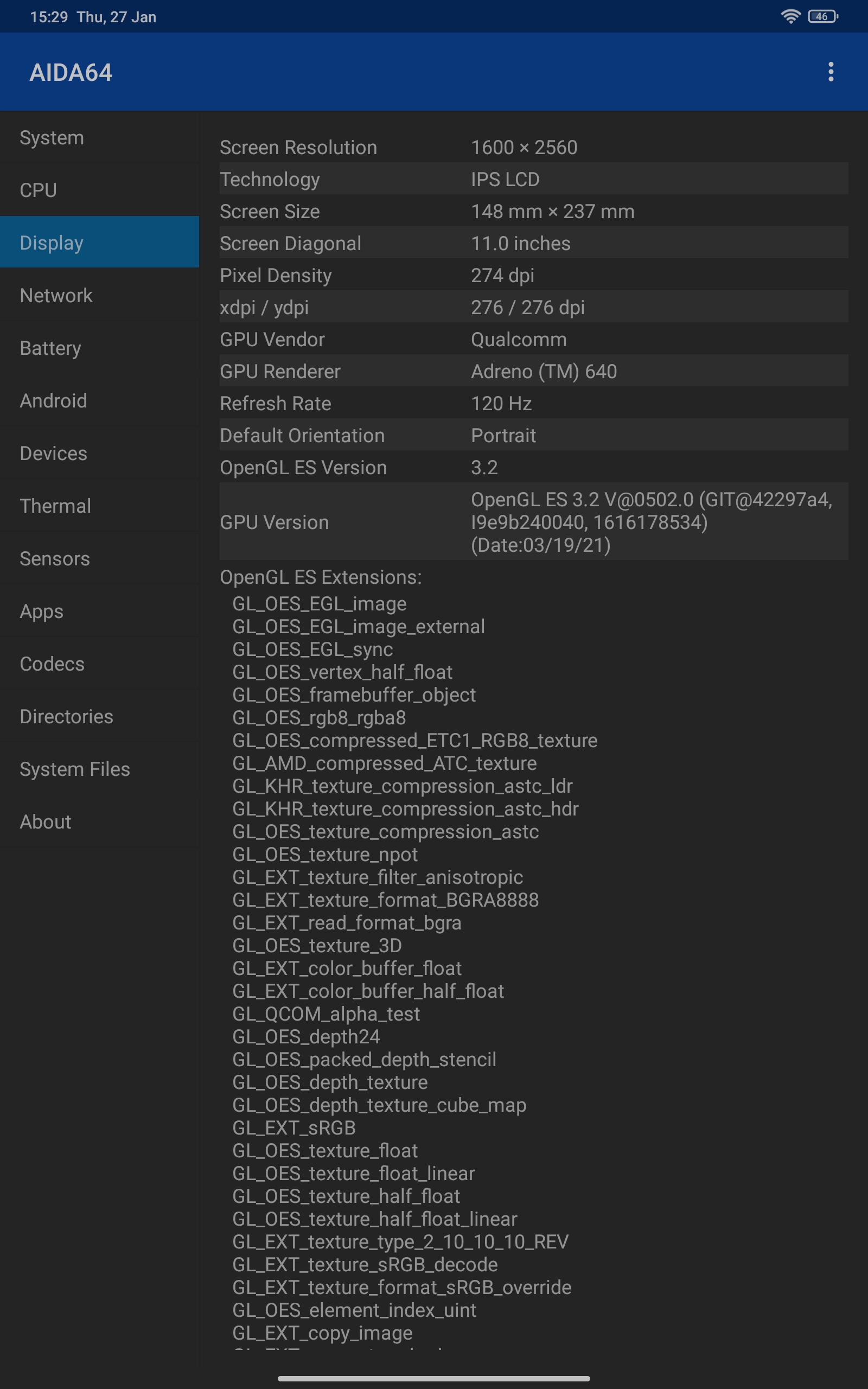
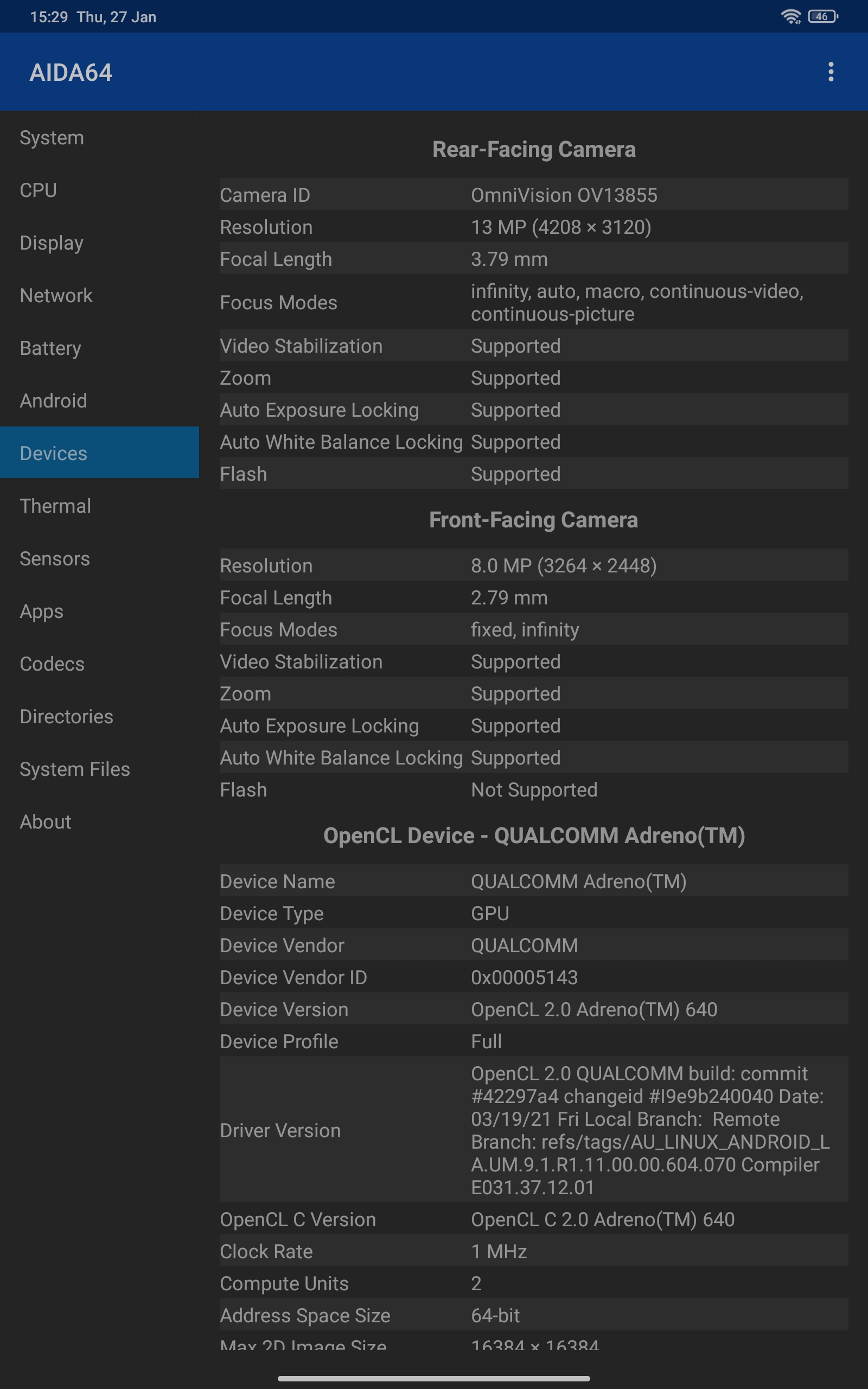
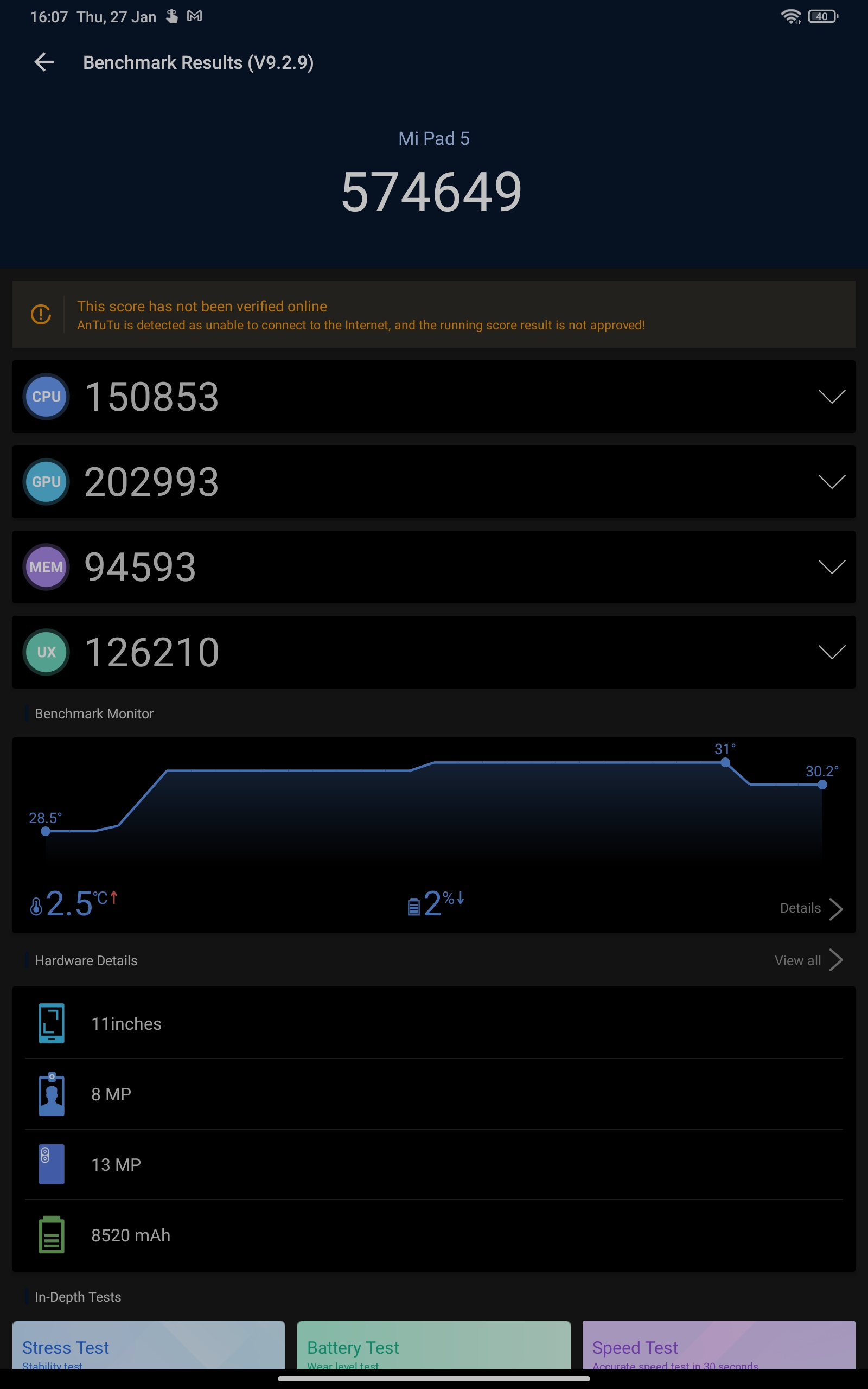
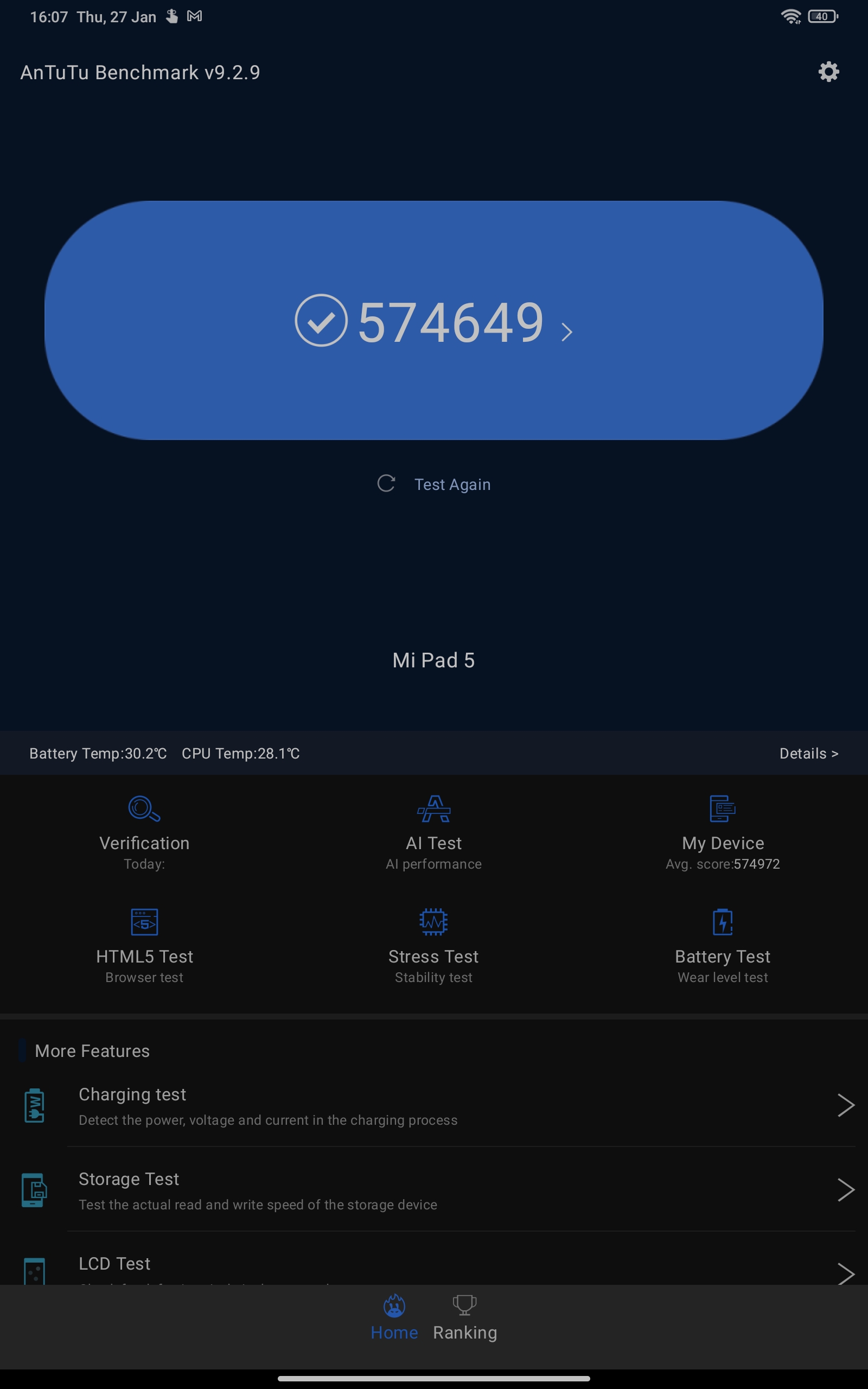
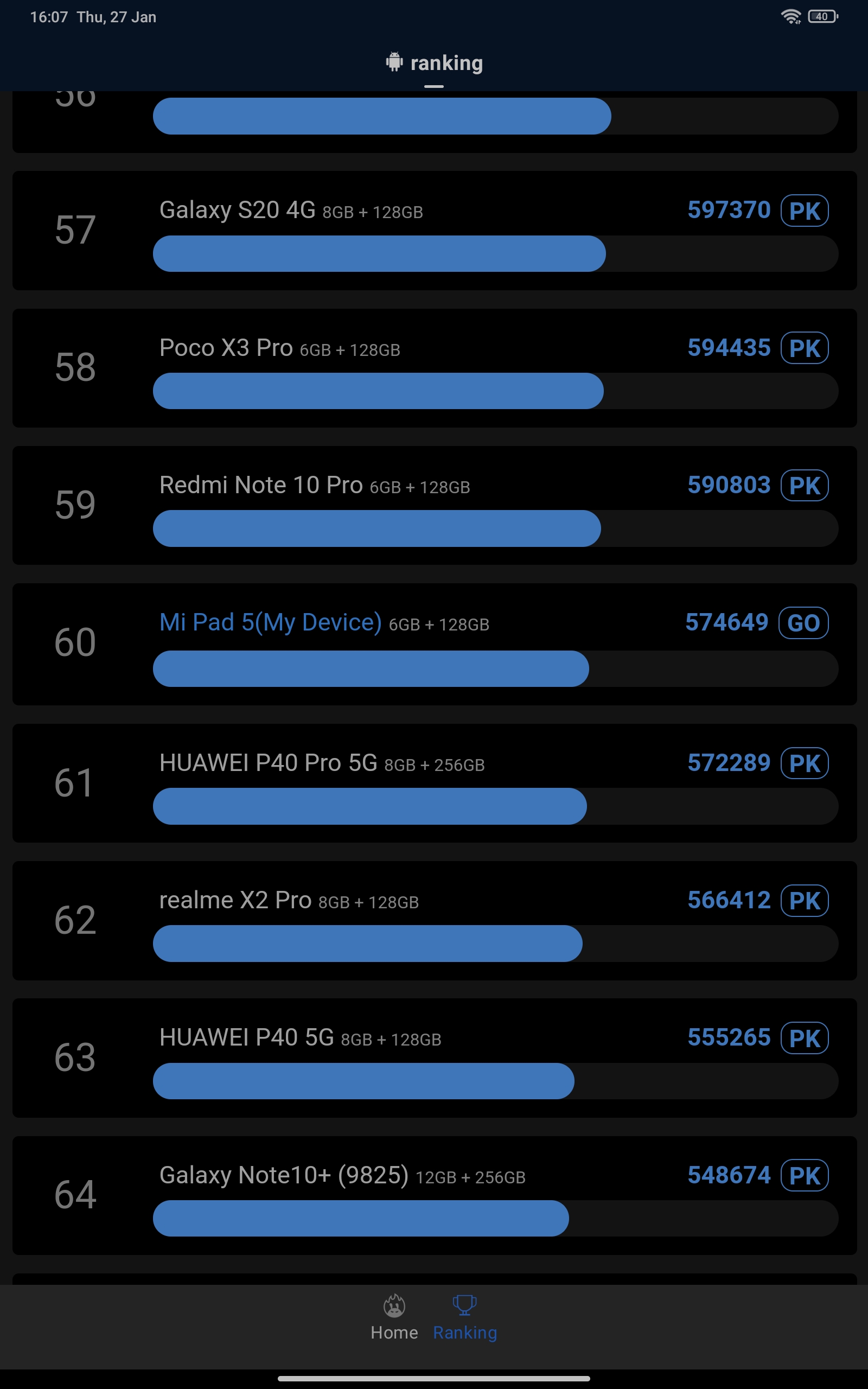


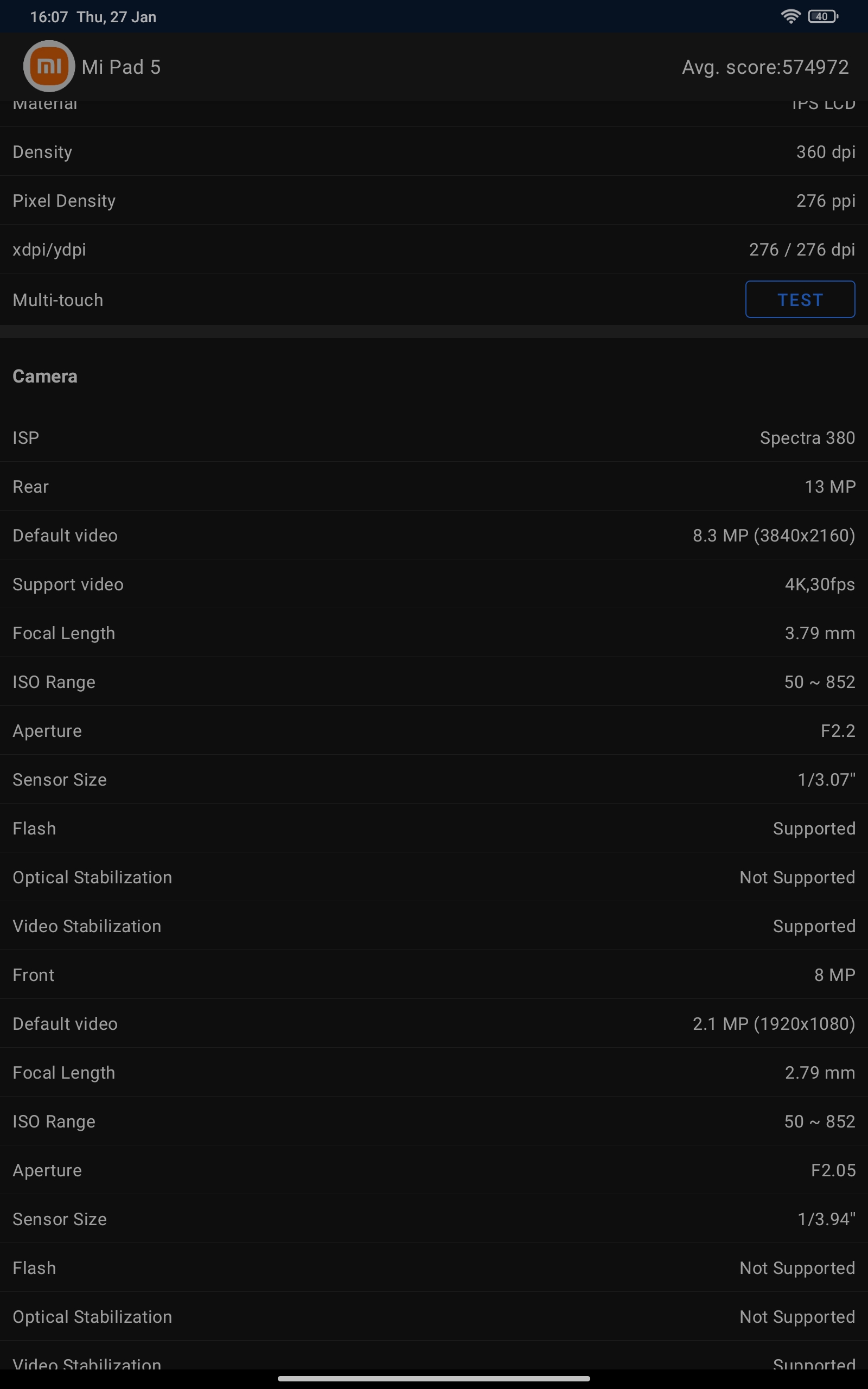





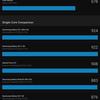












The CPU Throttling Test stress test showed that the tablet works quite stably even with prolonged maximum loads, the performance drops to 91%, which is quite normal. At the same time, the tablet itself becomes only slightly warm.
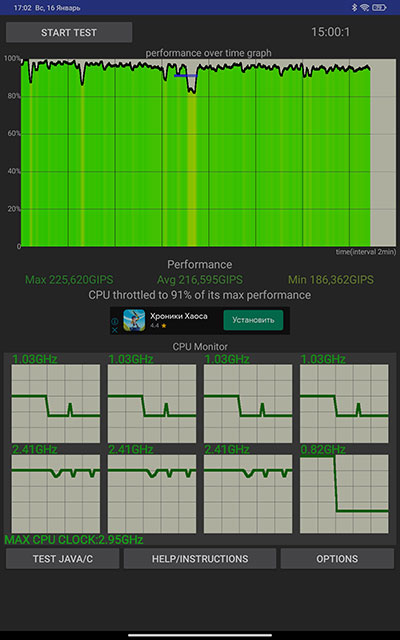
The tablet copes with modern games without any problems. At the same time, frame rates up to 120 Hz are supported. In Shadowgun Legends, at maximum graphics settings, the frame rate fluctuates between 90-120 Hz. In Call of Duty Mobile - about 60 FPS.

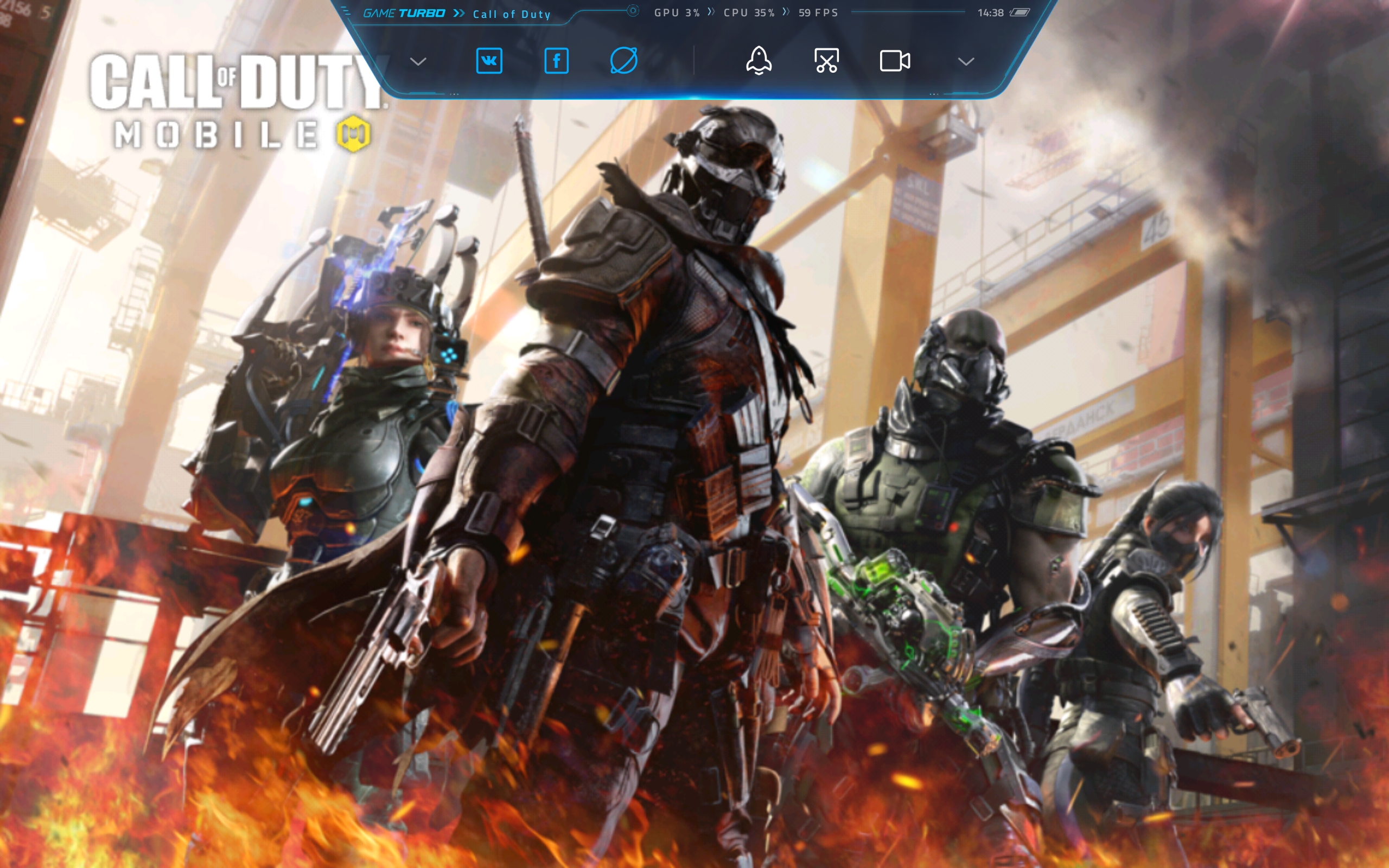


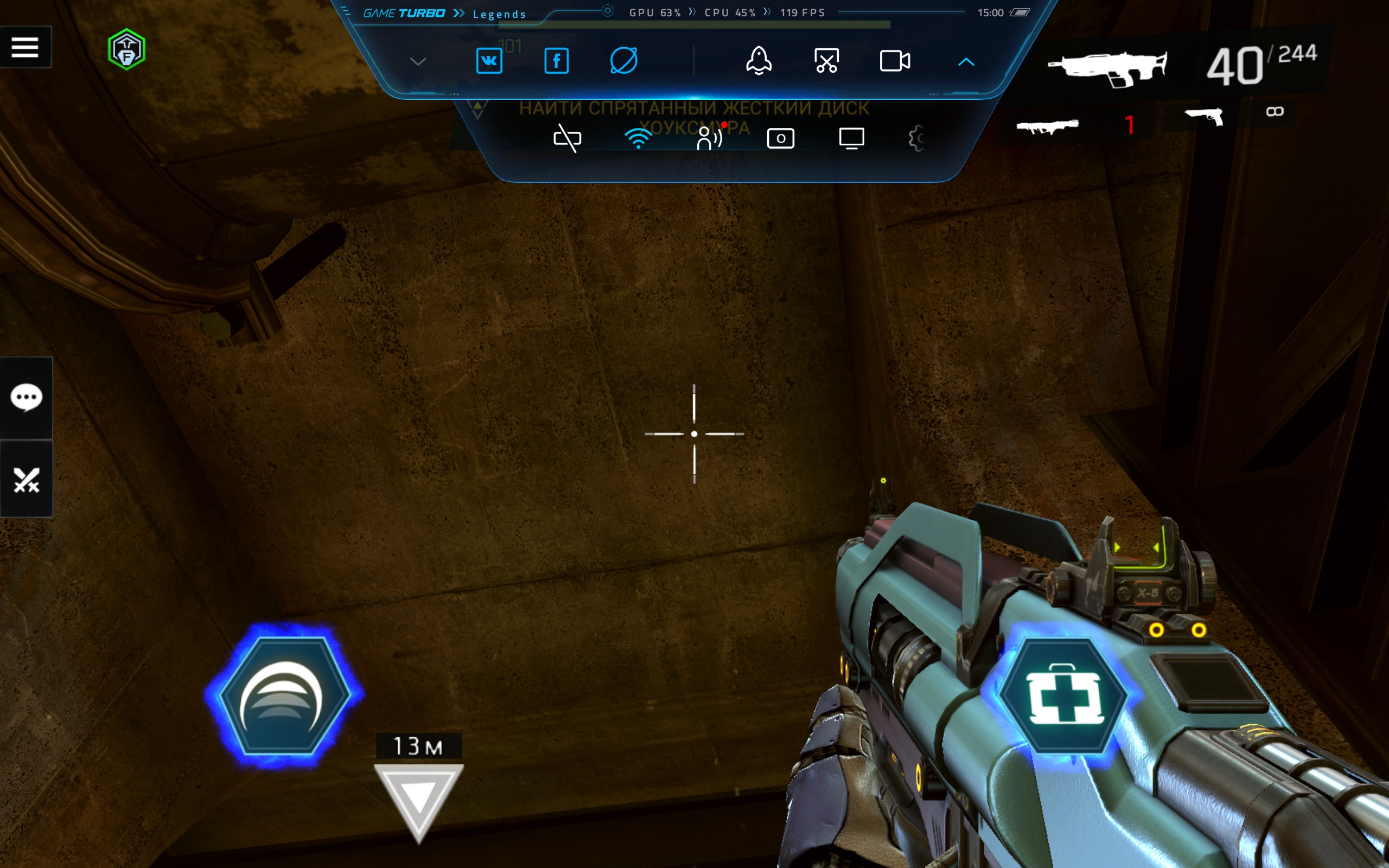
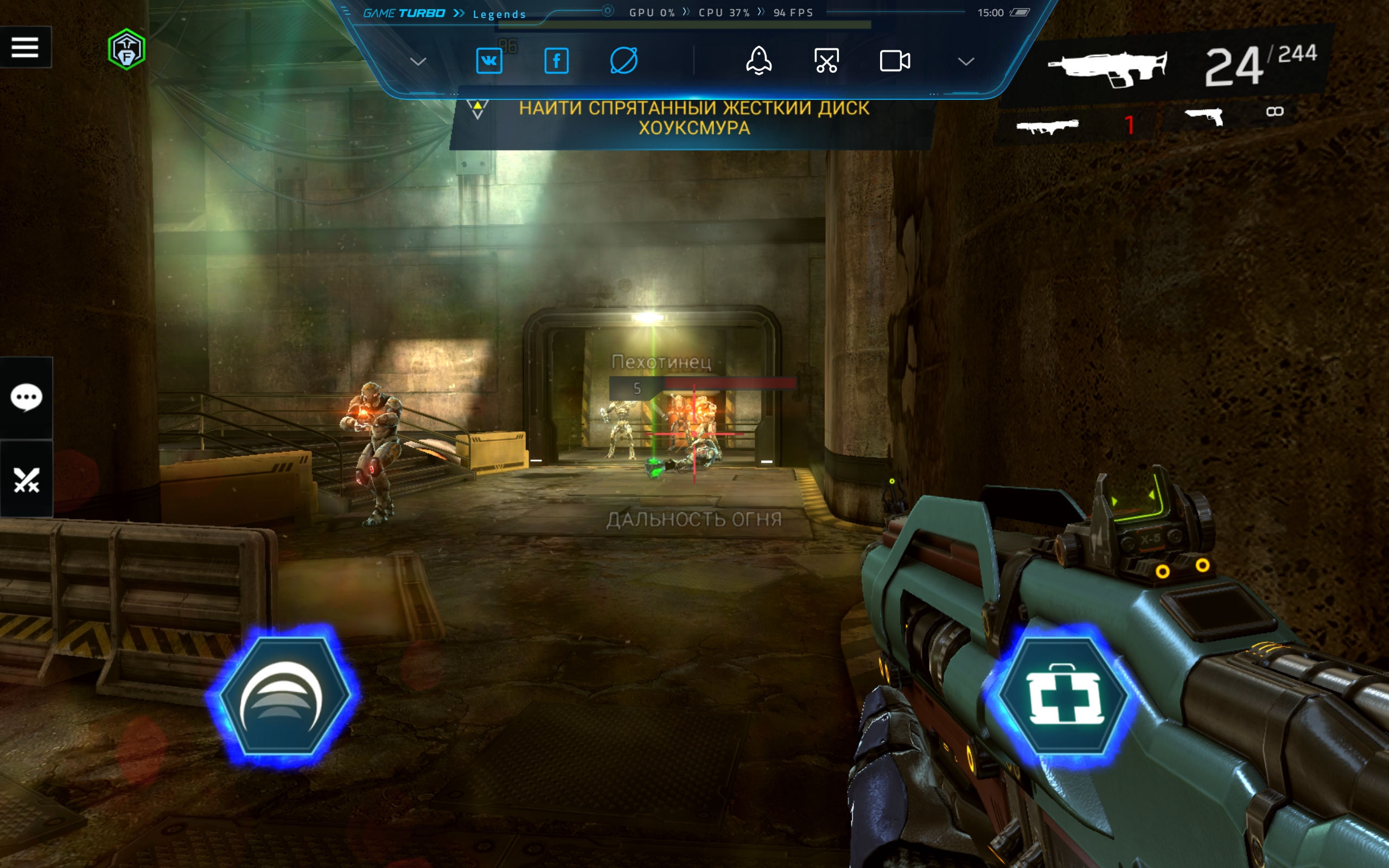







On wireless interfaces, the tablet is very modest. Dual-band Wi-Fi 802.11 a/b/g/n/ac 2.4 GHz and 5 GHz (no Wi-Fi 6 support) and Bluetooth 5.0 LE. There is no GPS module in the tablet, in case someone wanted to use the tablet in the car as a navigator. And there are no versions with support for mobile networks either. But what pleased me was the sound quality. The tablet has four speakers with Dolby Atmos certification. And they sound really loud and high quality (as far as it is possible in this form factor). There is even a hint of low frequencies.
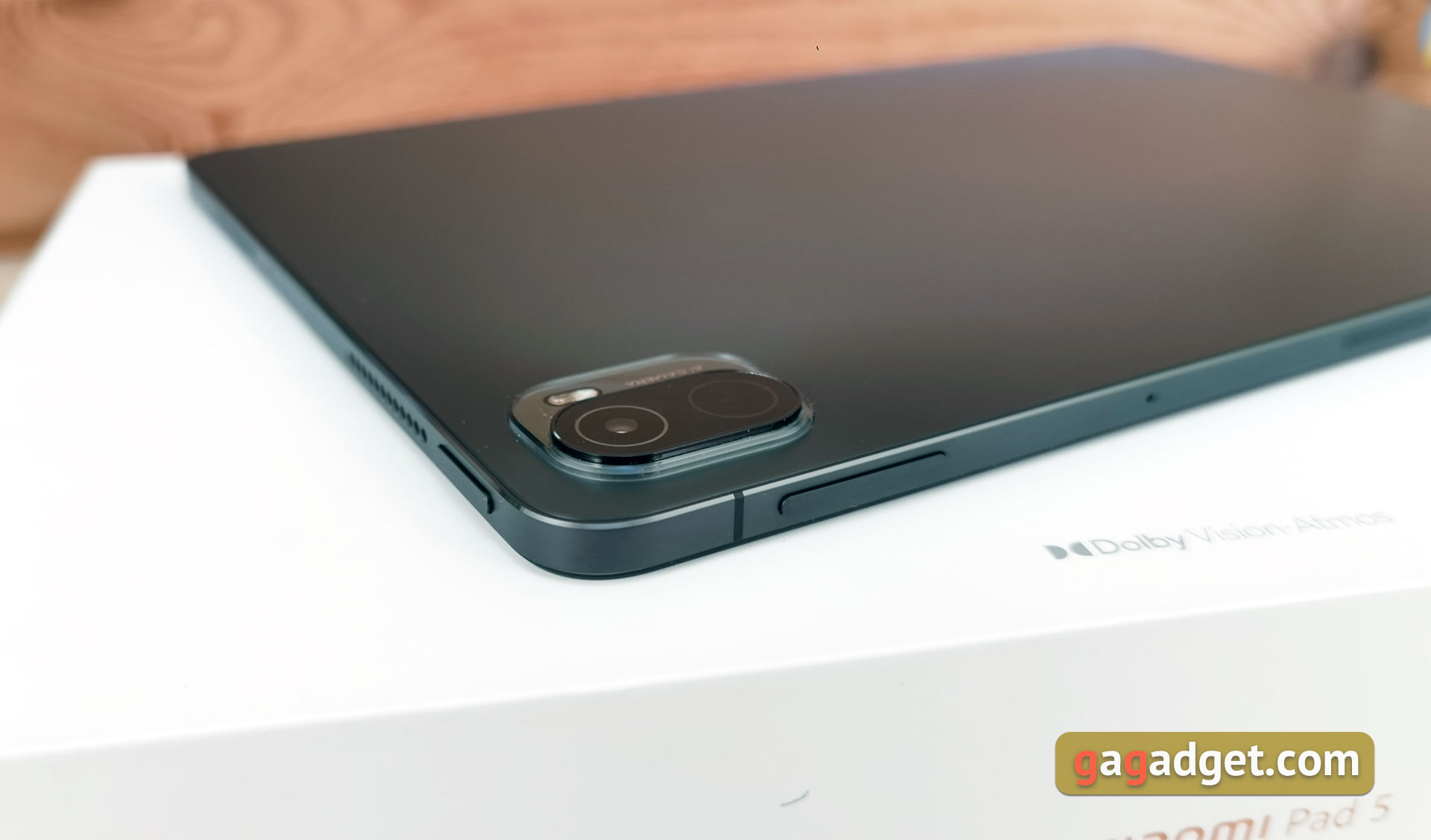
Xiaomi Pad 5 has a very impressive 8720 mAh battery. The tablet comes with a 22.5W power supply, although the tablet itself supports fast charging up to 33W. From a complete PSU, the tablet charges for about 2 hours. Tablet battery life is very dependent on usage scenarios. But, in any case, the tablet showed itself very well in this indicator. It can spin FullHD-video from a single charge for about 15 hours, and heavy games land about 5% in half an hour.
The Interface
The tablet runs on Android 11 OS with a proprietary filmware MIUI 12.5. The 13th version on Android 12 has so far only been released in China. There are no significant differences from the smartphone filmware. The interface was "stretched" to a large screen and adapted for portrait and landscape modes. There are options with placing everything on desktops and the option to enable a separate application menu. Navigation button or gesture. Of the unusual chips, it is worth noting the curtain. Swiping down from the right side of the top edge of the screen brings up a toggle bar. From the left side - notifications. The only thing missing is the "desktop" mode, which is, for example, in Xiaomi Mi Mix Fold. Perhaps they will add with new firmware.
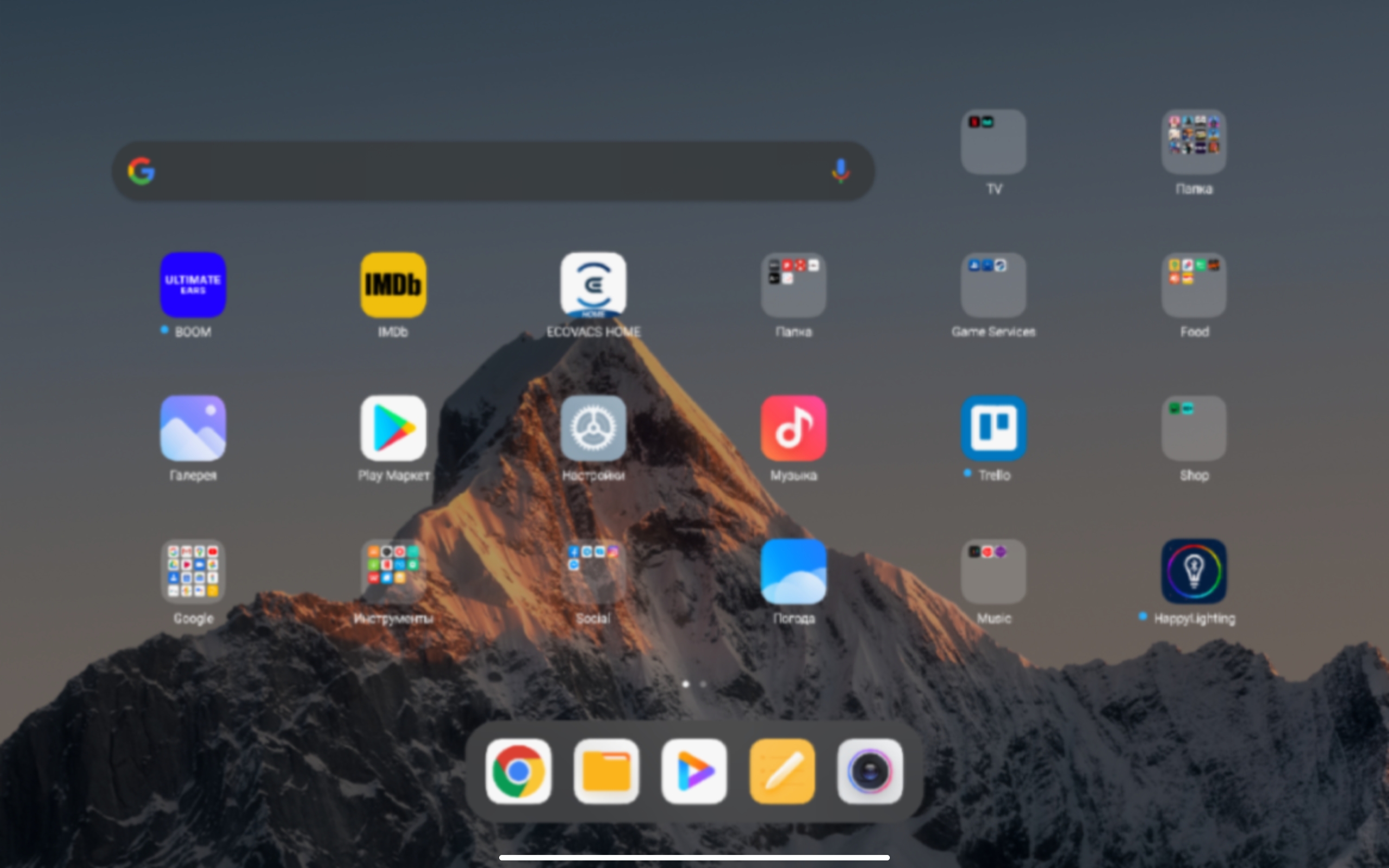
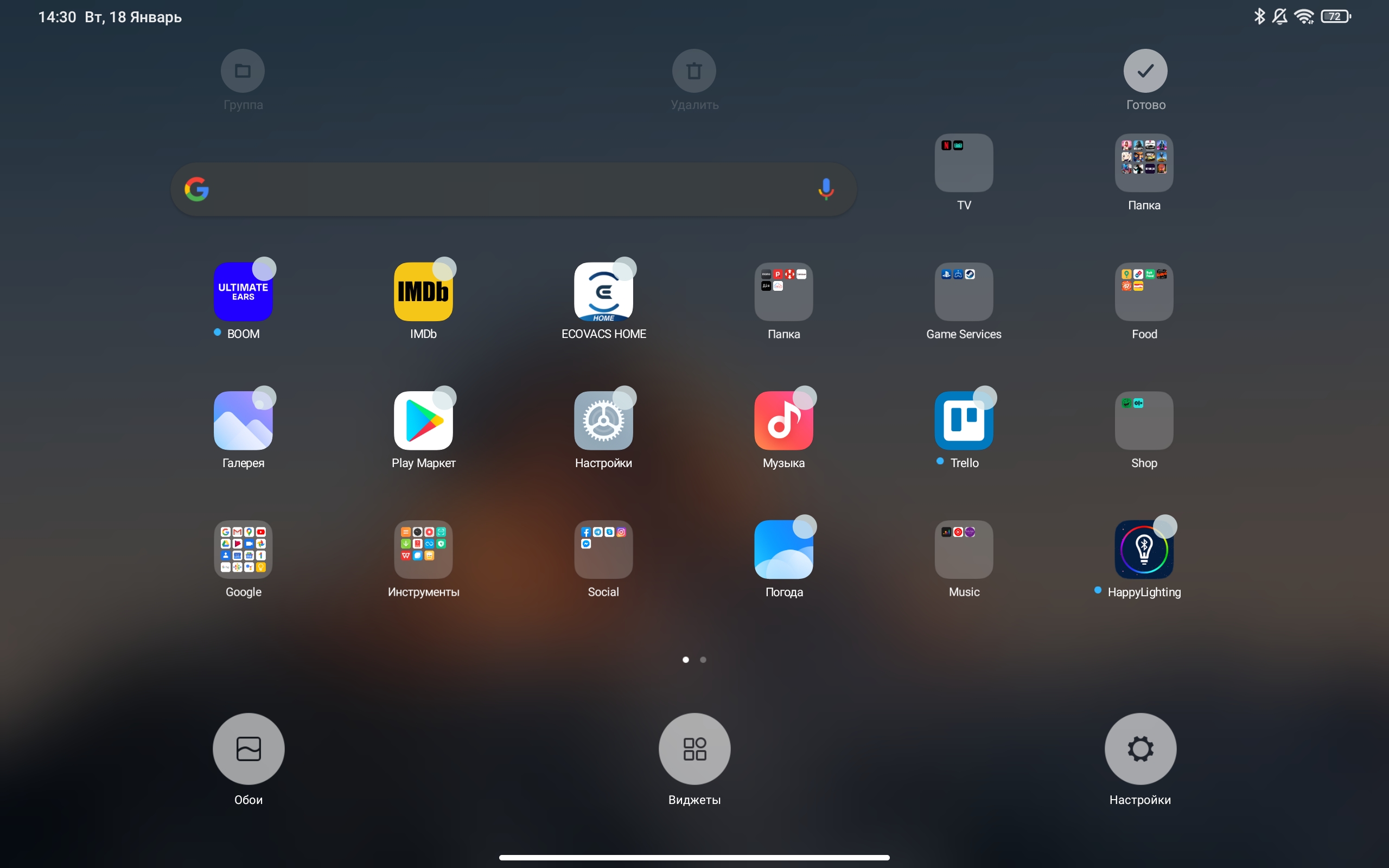

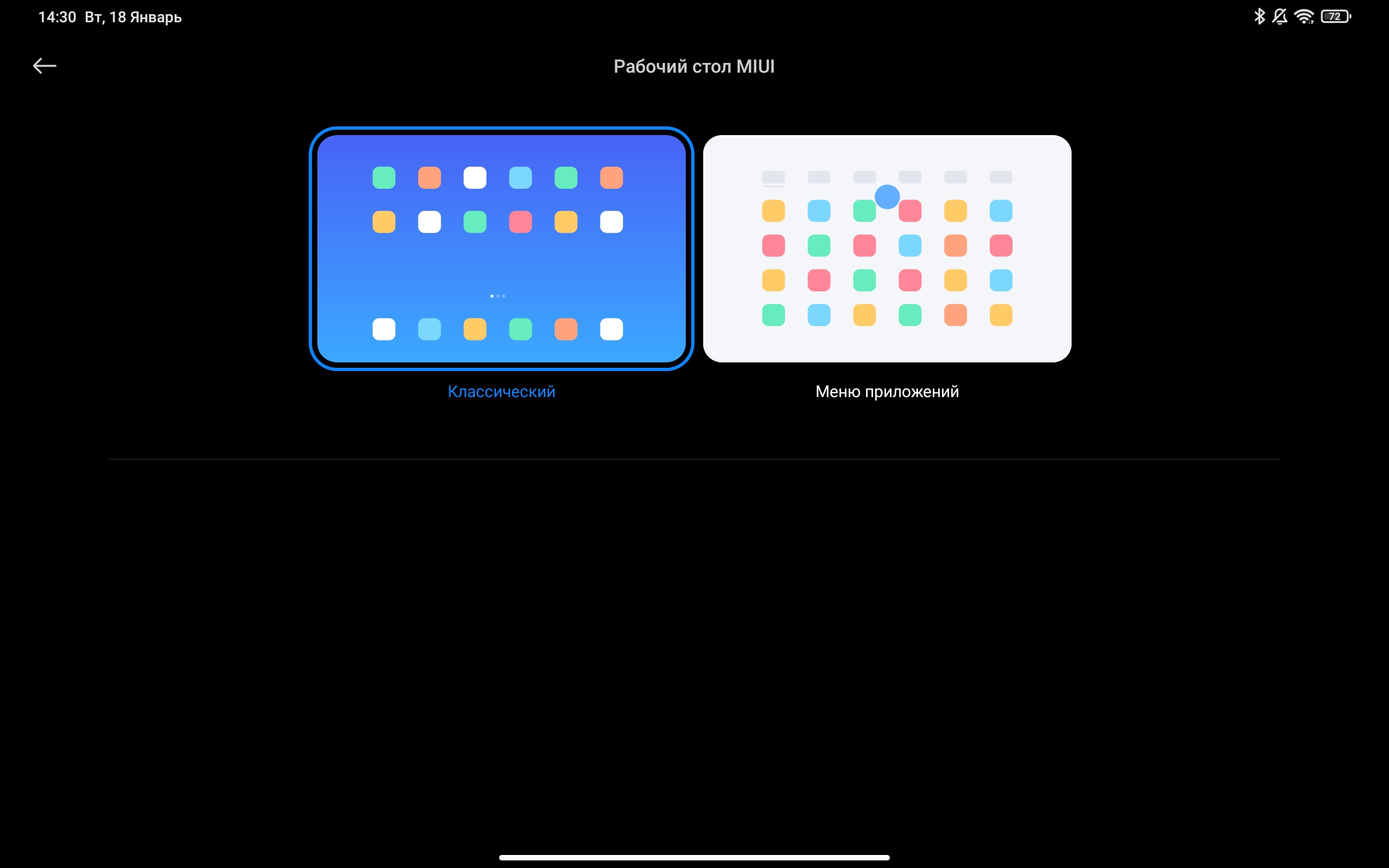
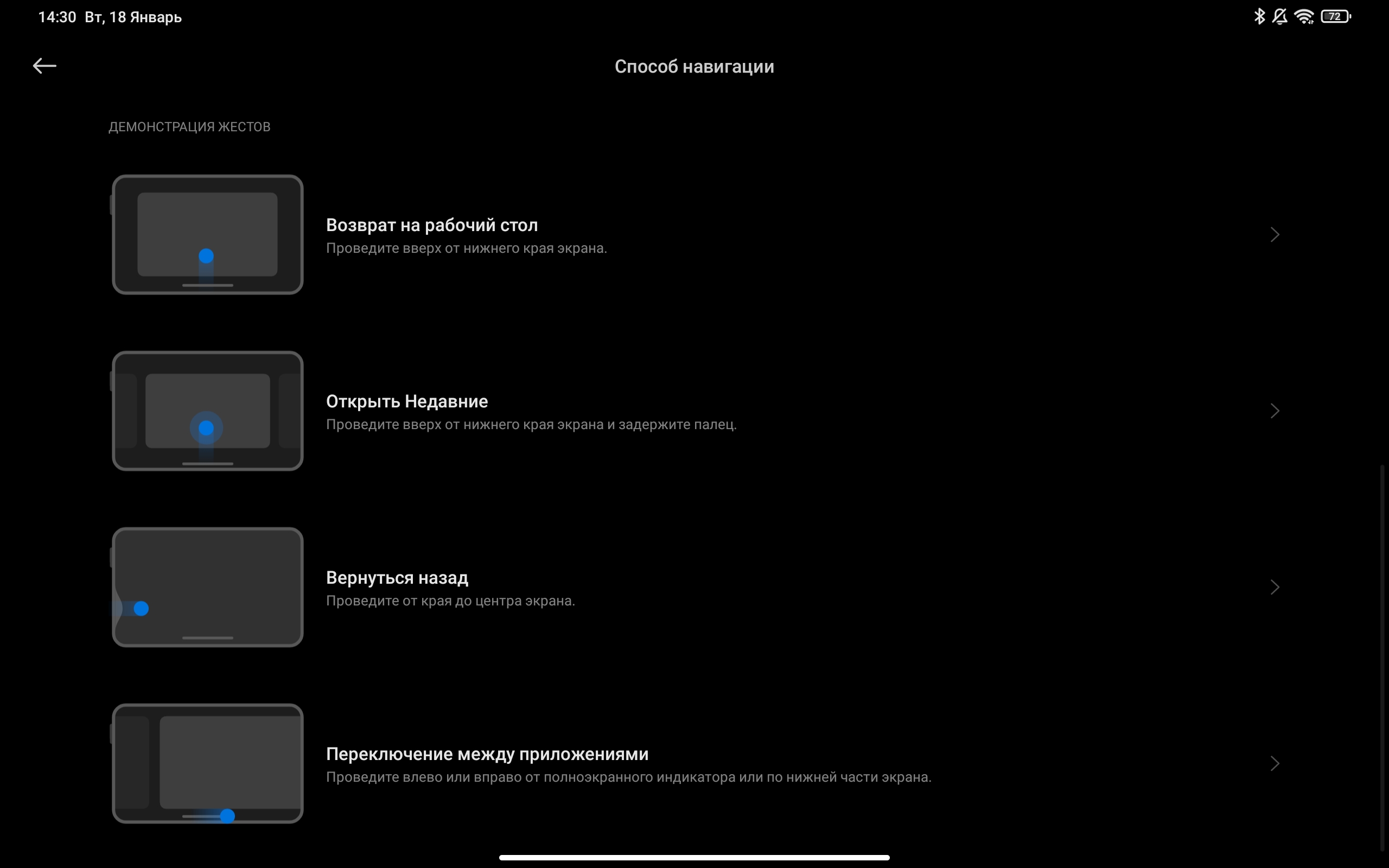

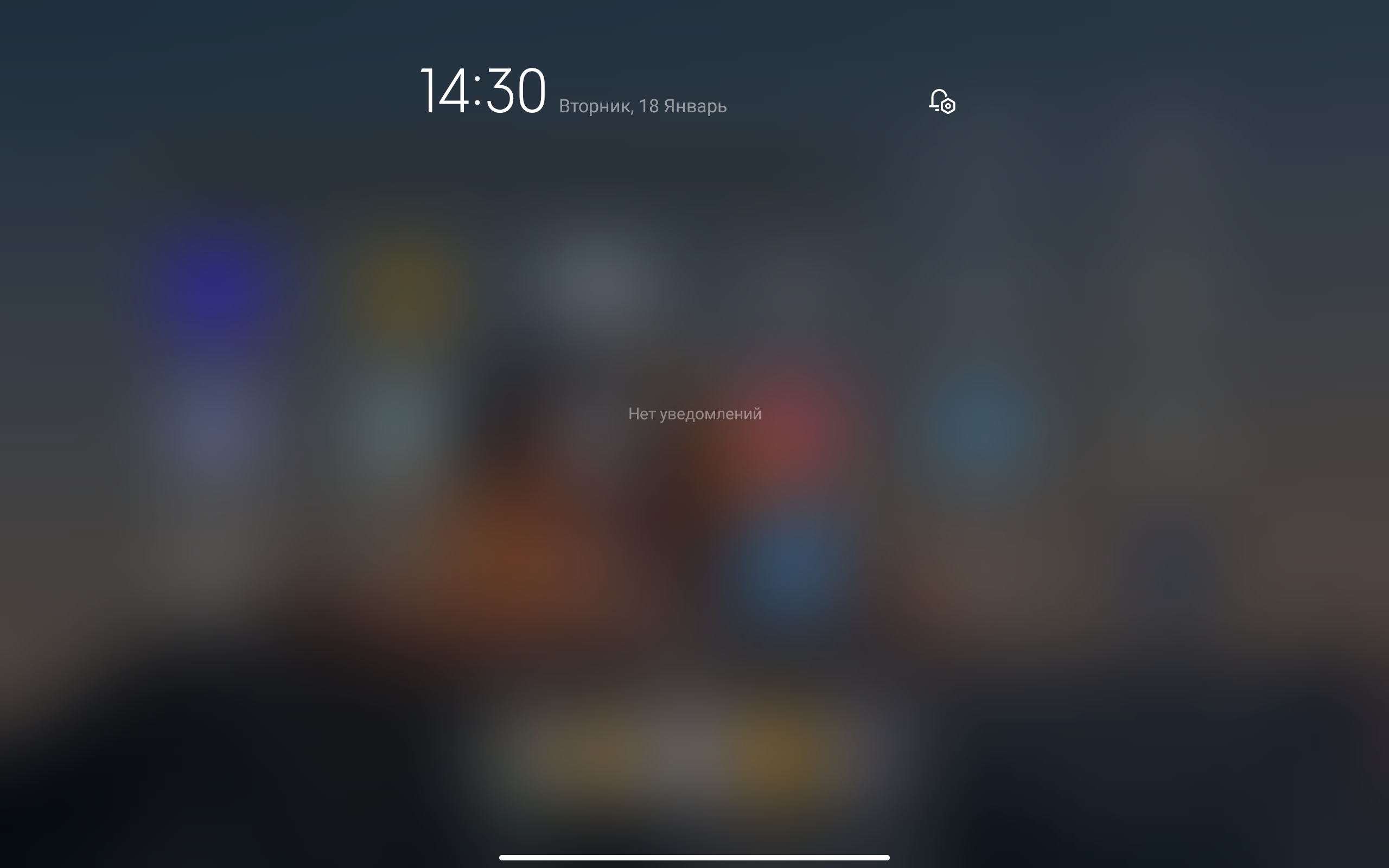







The application manager is made in the form of cards. You can open apps in split screen mode (not all apps are supported). Of the typical tablet chips, one can only distinguish the function of launching the application in mini-window mode. The app opens in a floating window on top of other apps. It can be moved as you like, or completely collapsed to a small thumbnail.
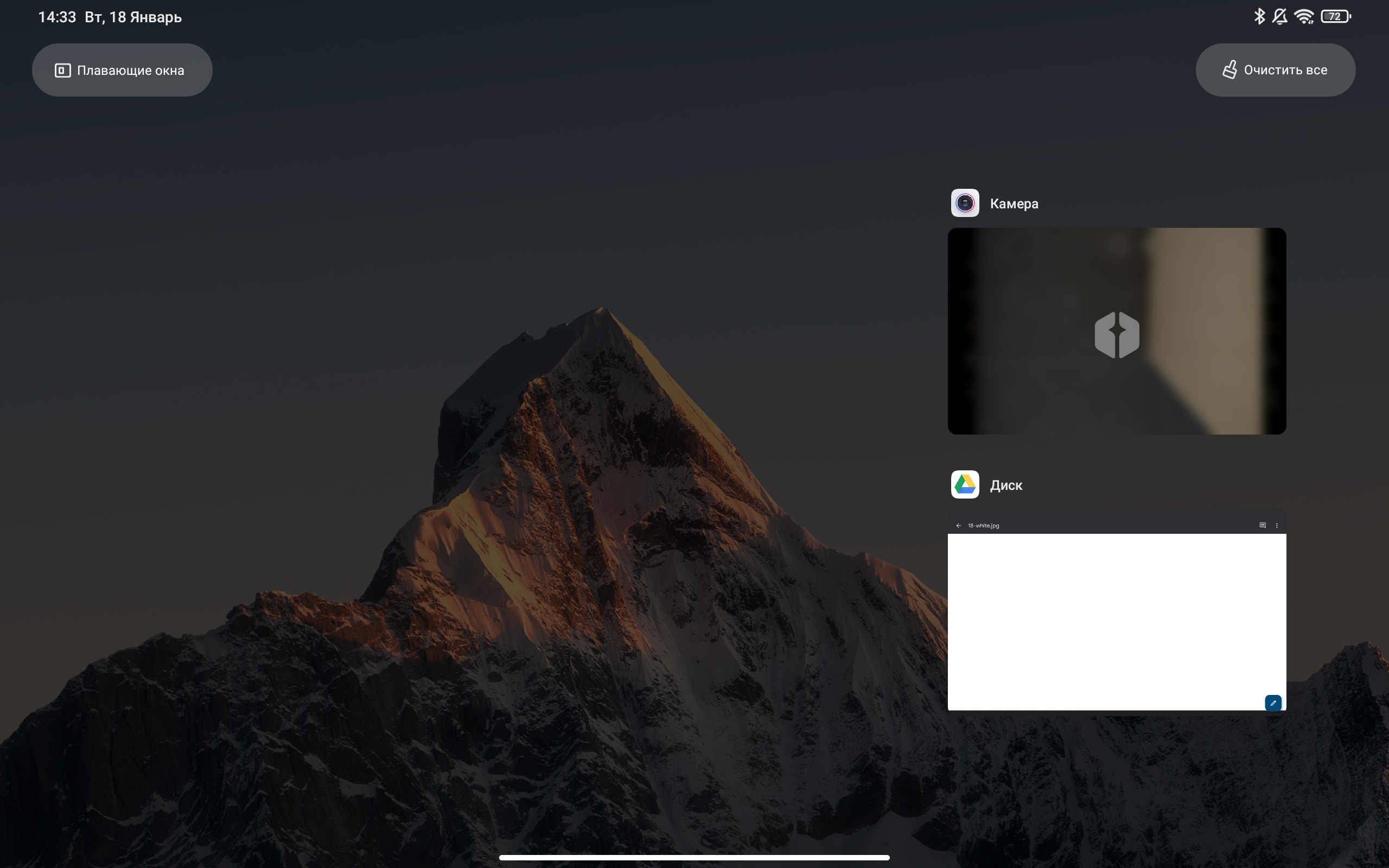
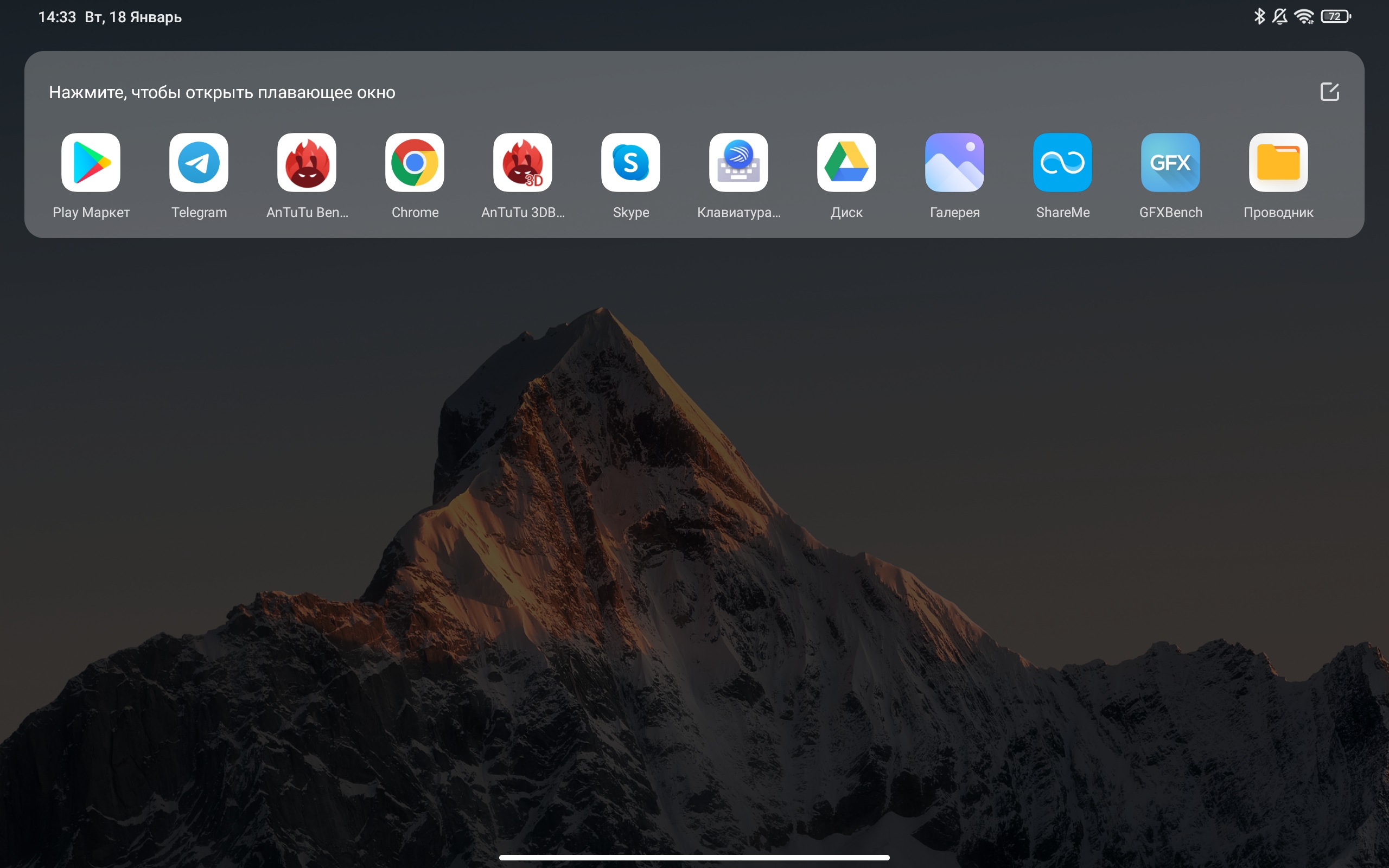
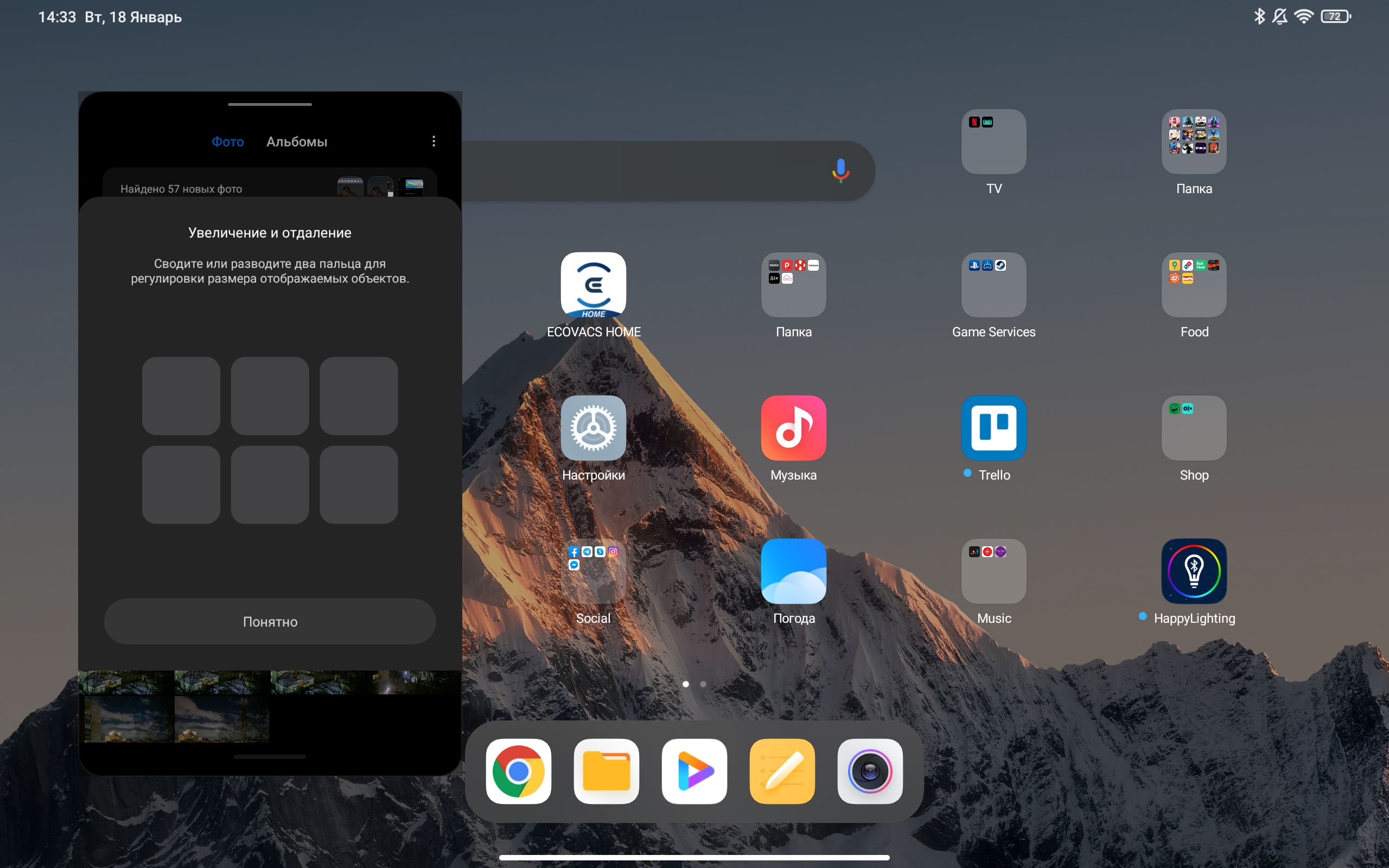
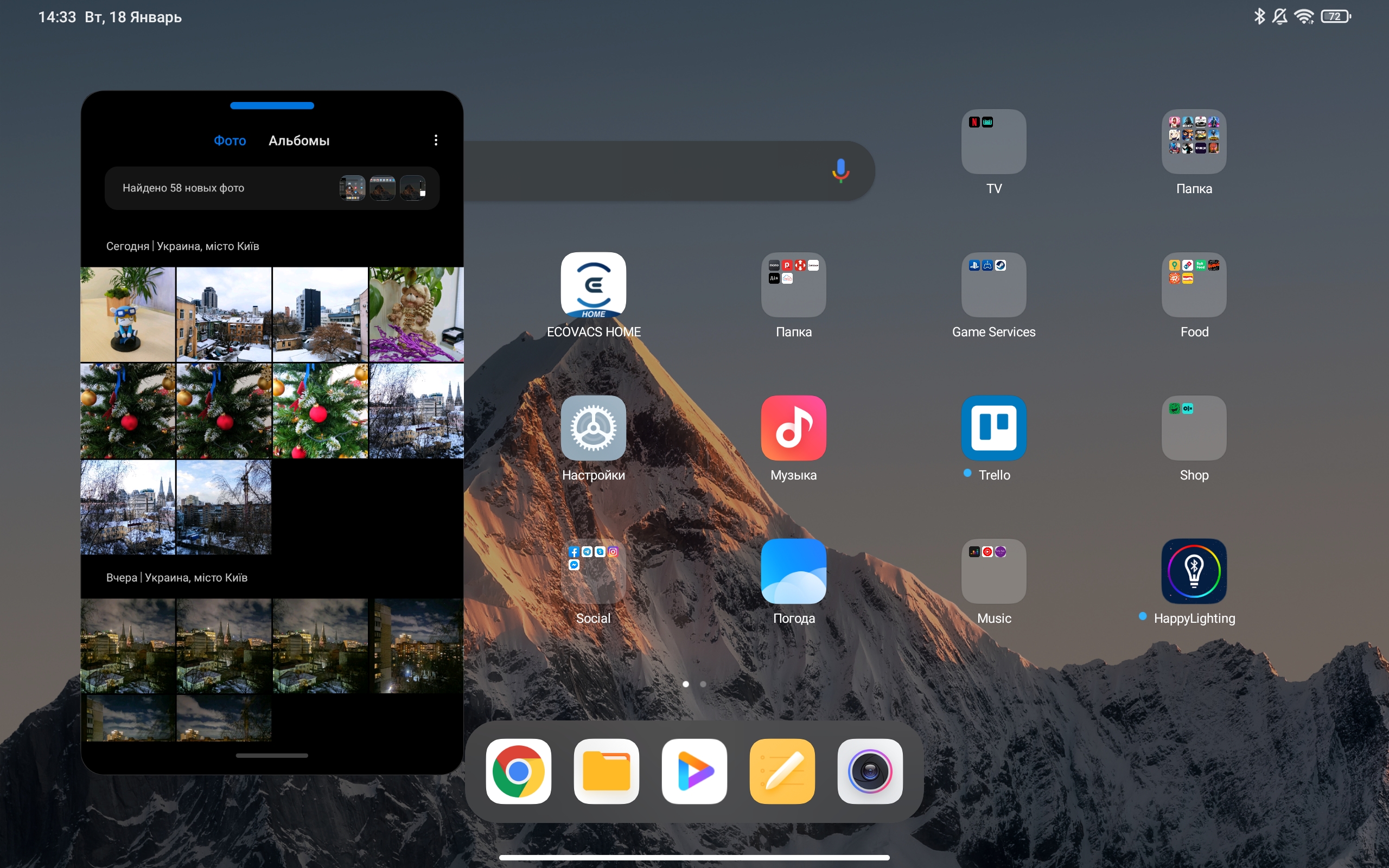
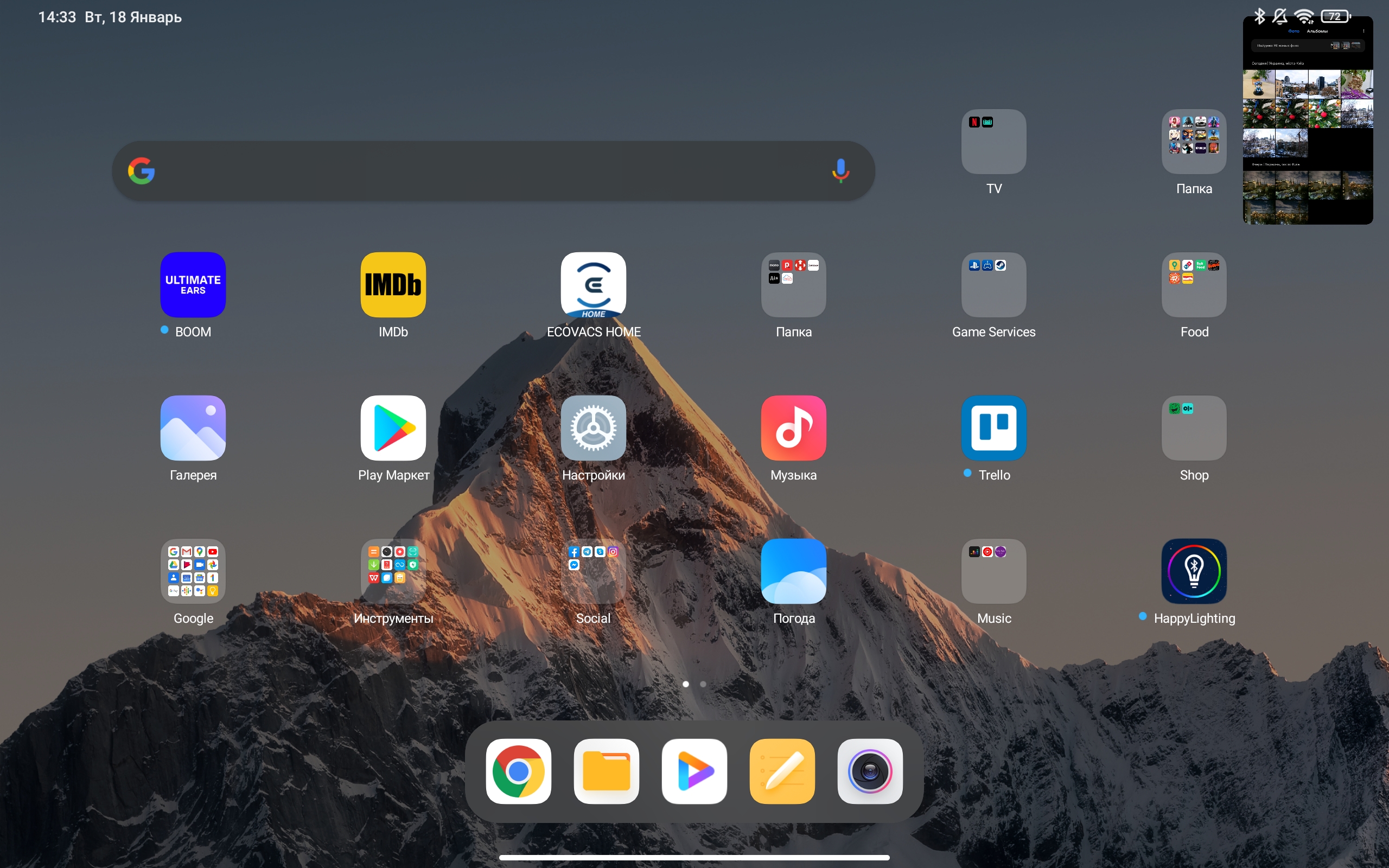
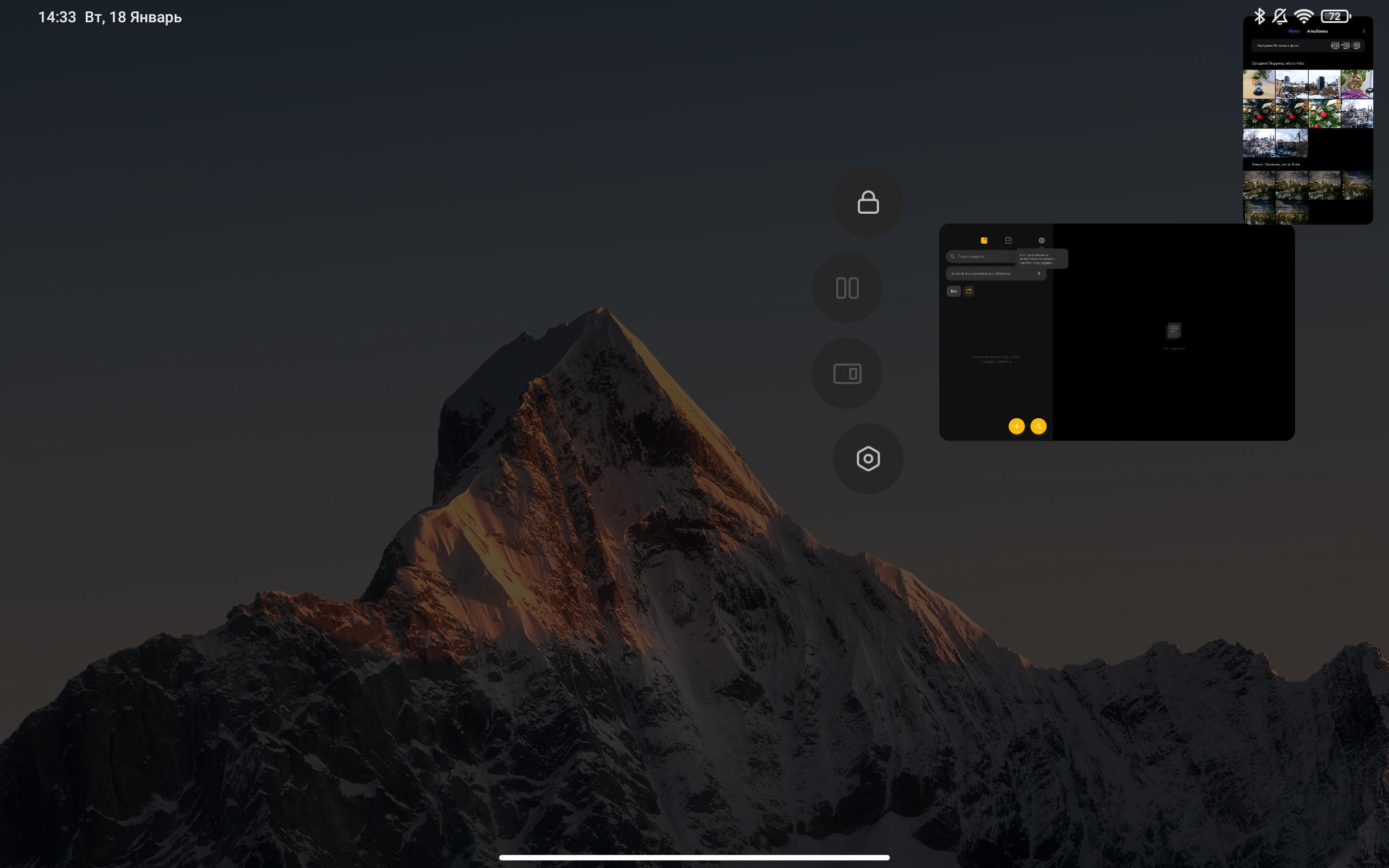
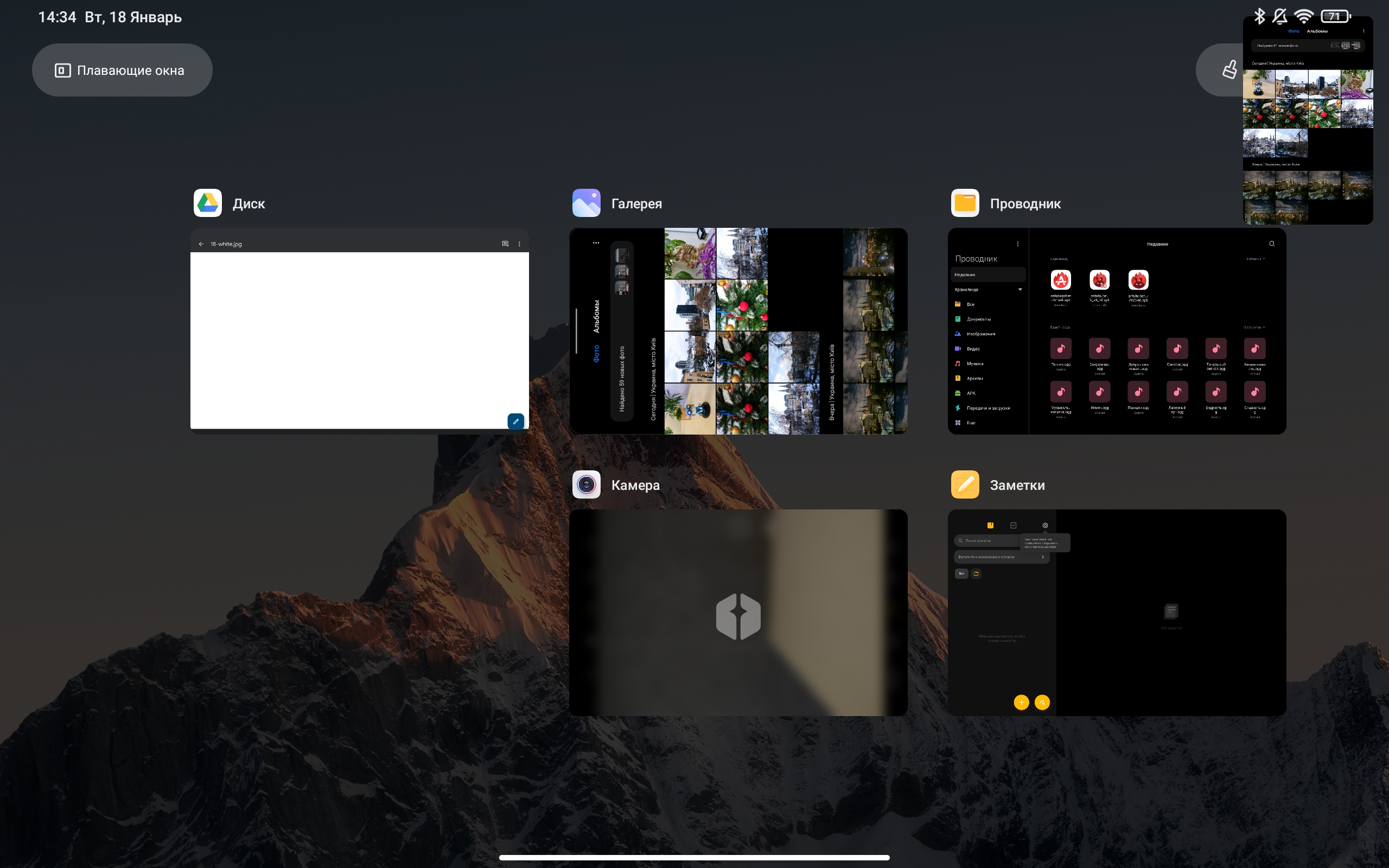
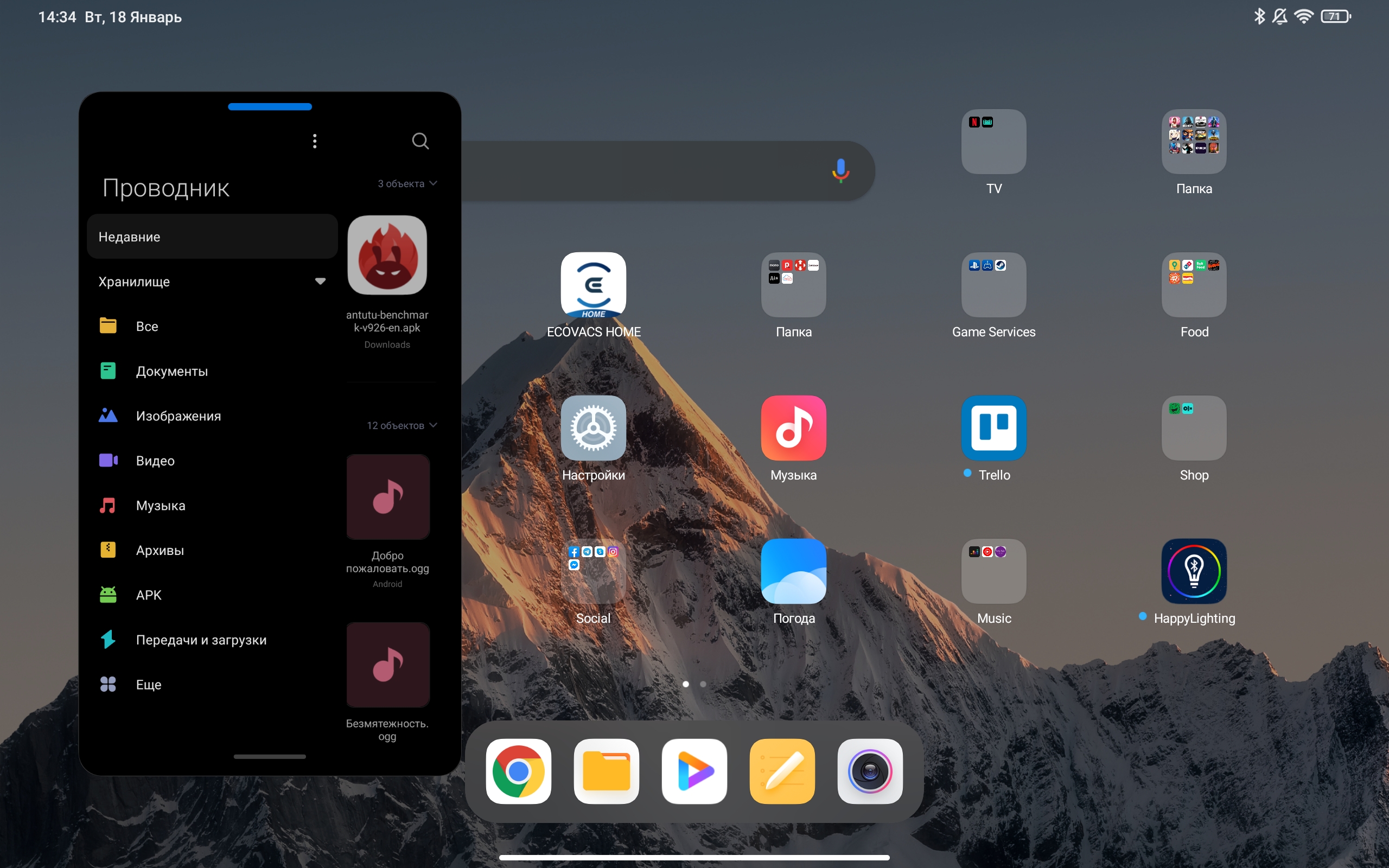
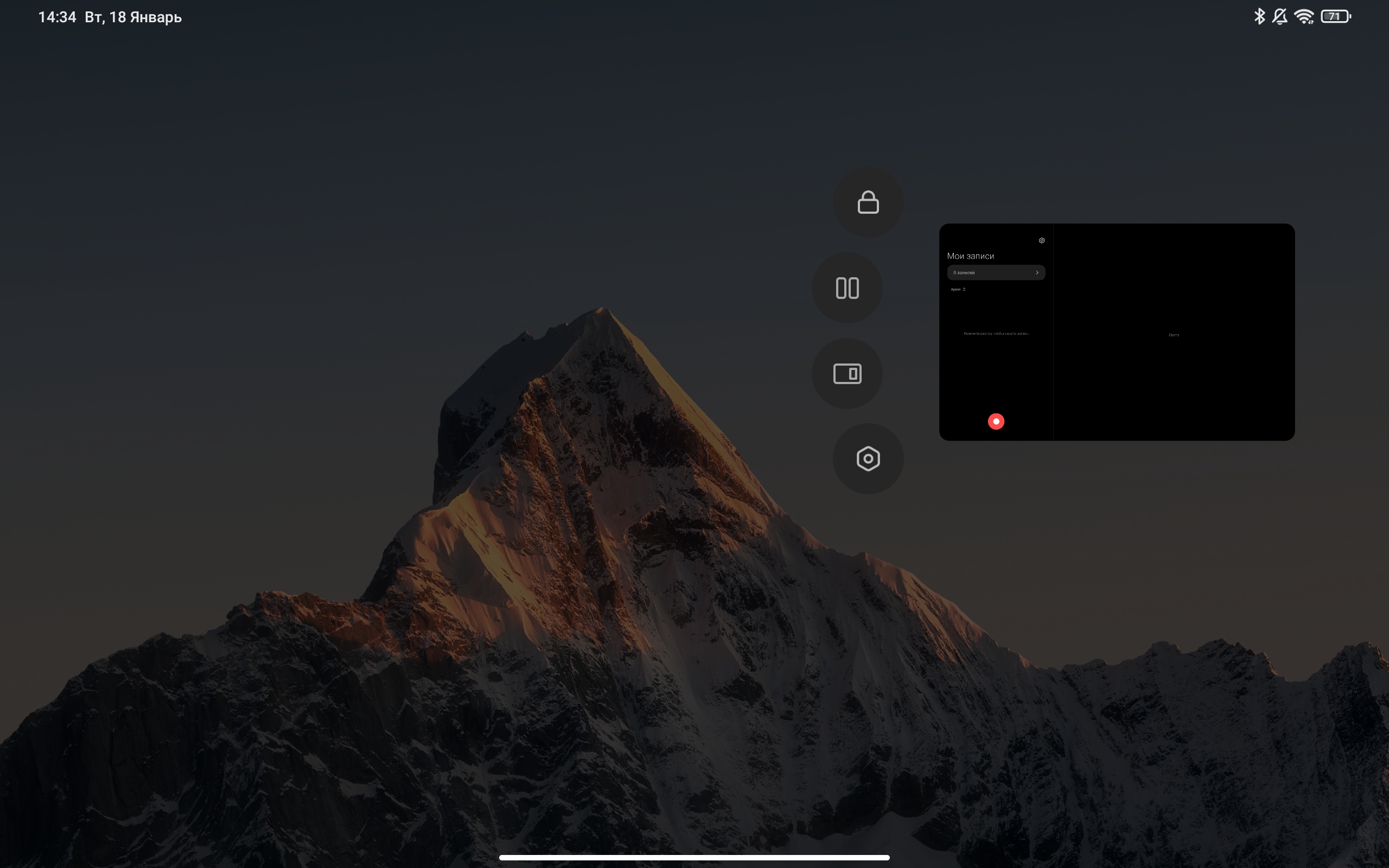









Of the non-standard functions in the settings, there is a section with a branded stylus and keyboard. There are settings for the stylus buttons and instructions for quick actions like handwriting or taking a screenshot with a long press. In view of the lack of a keyboard and stylus, in fact, it was not possible to check all this.
Standard pre-installed applications:
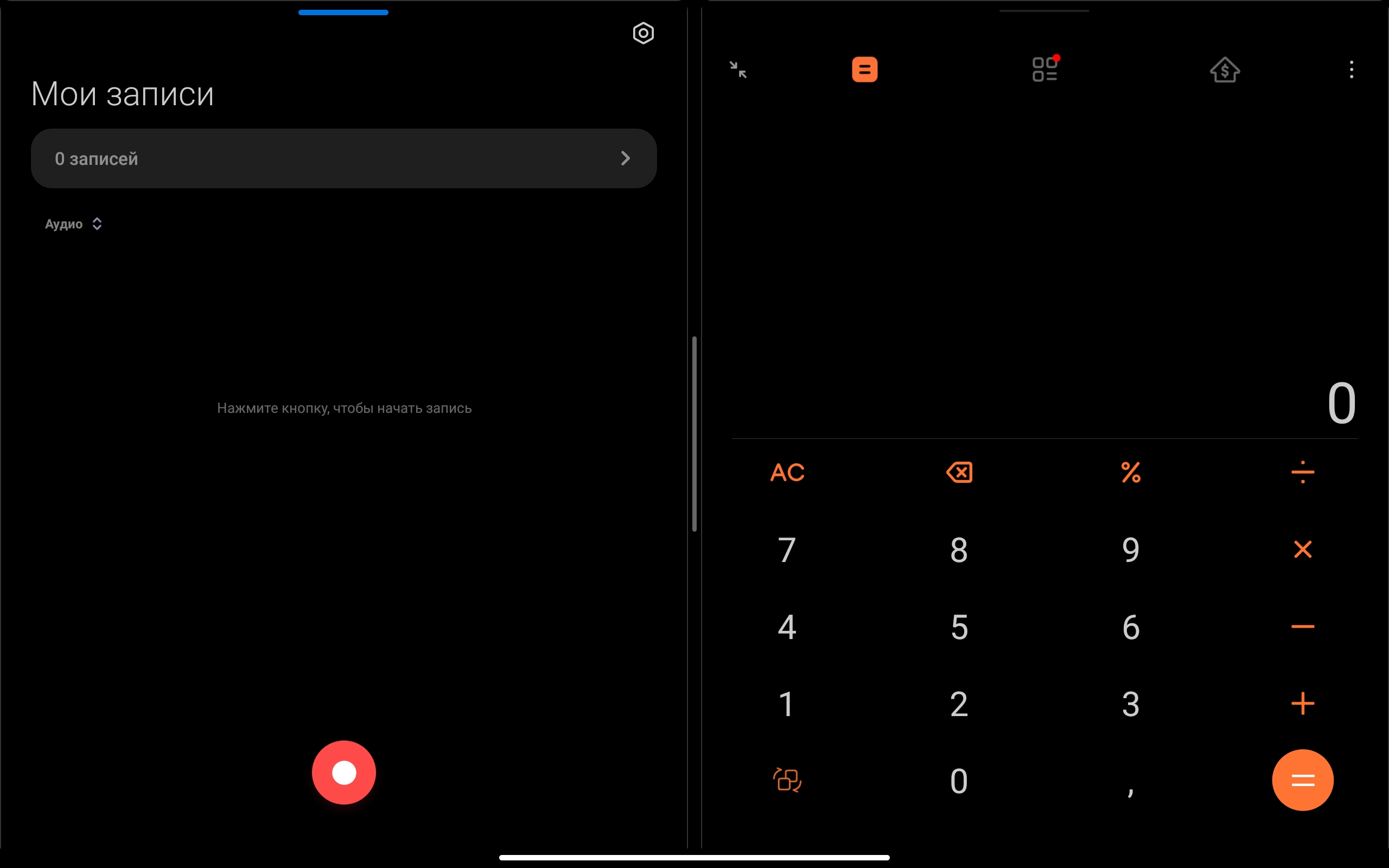
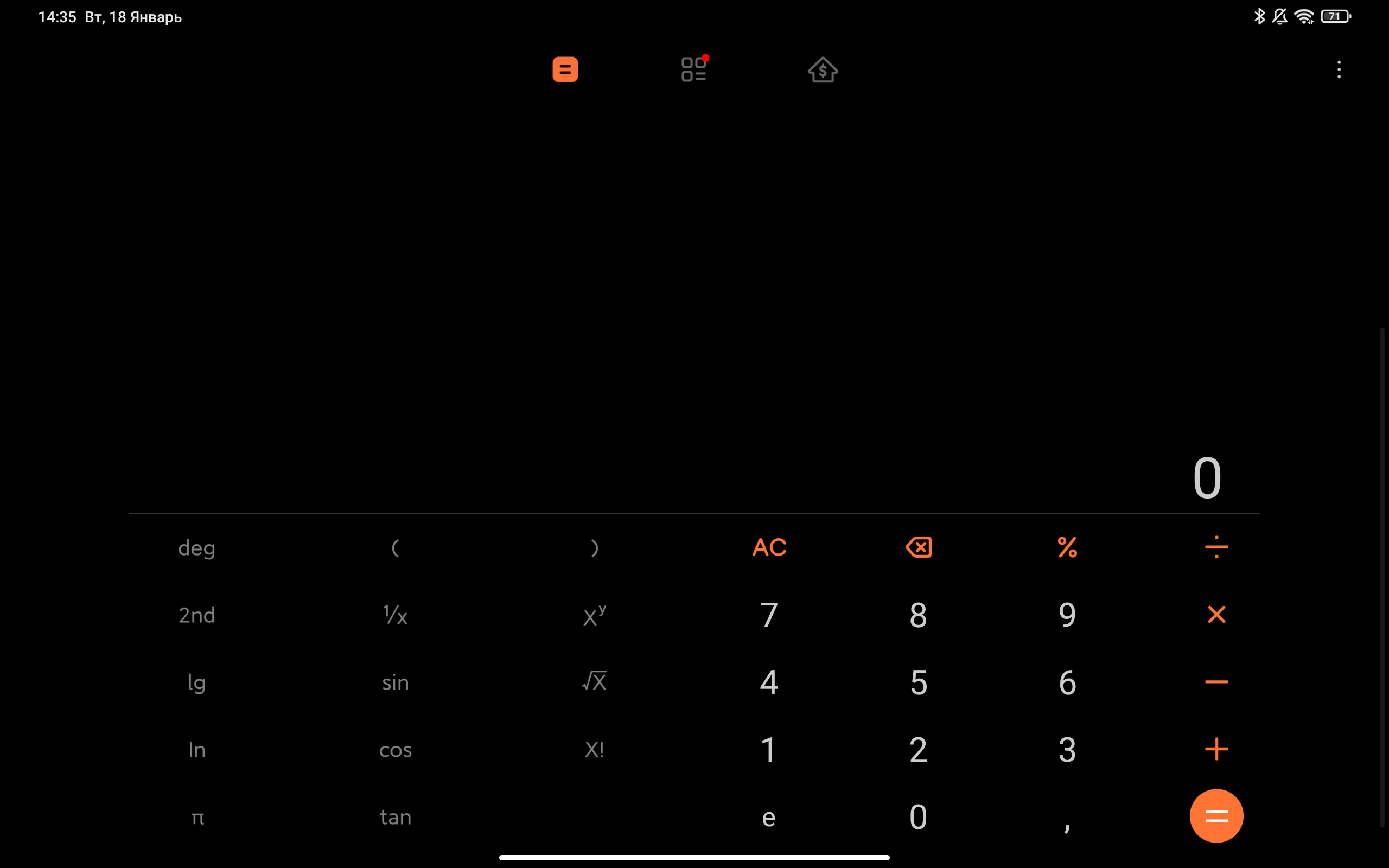

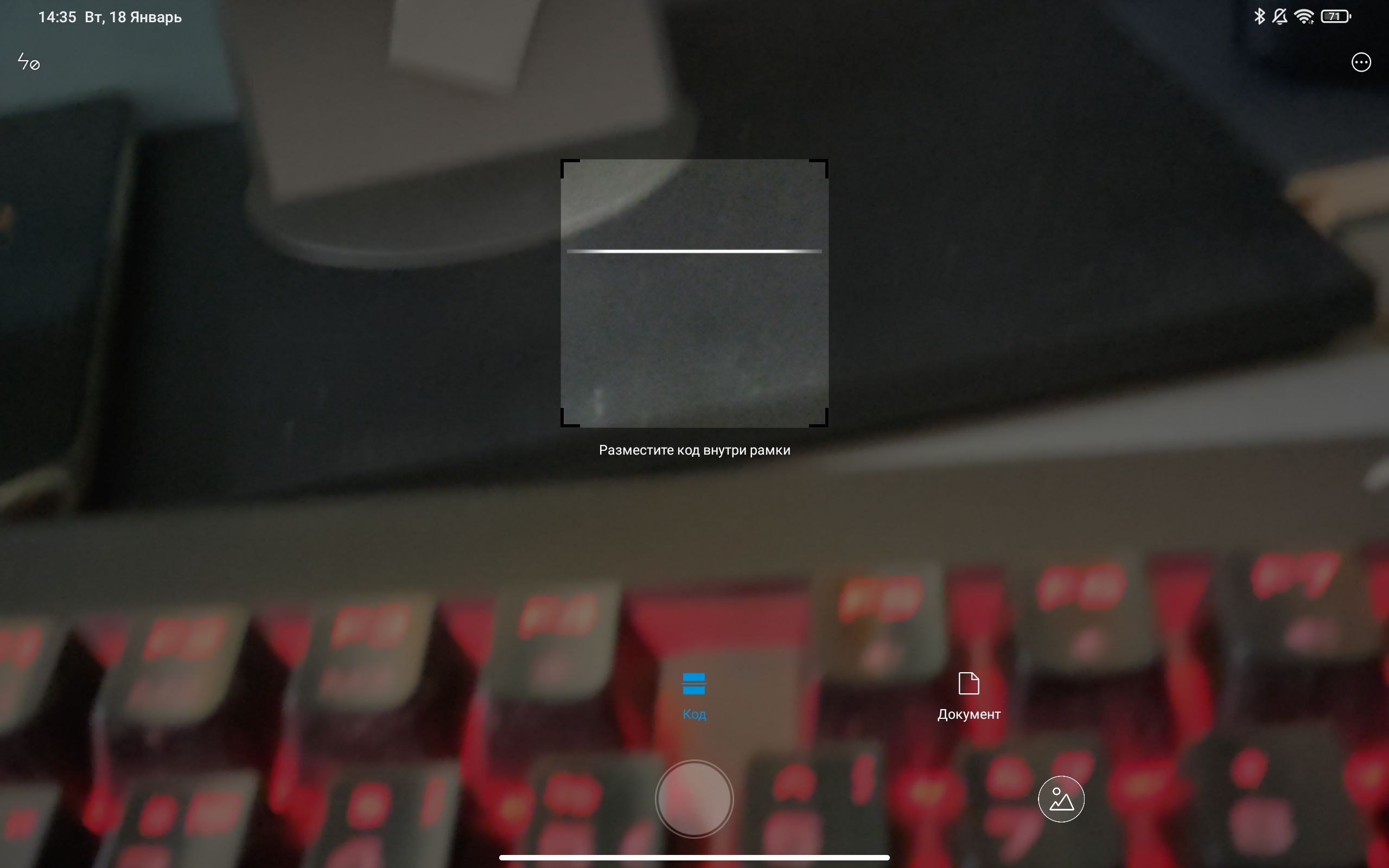
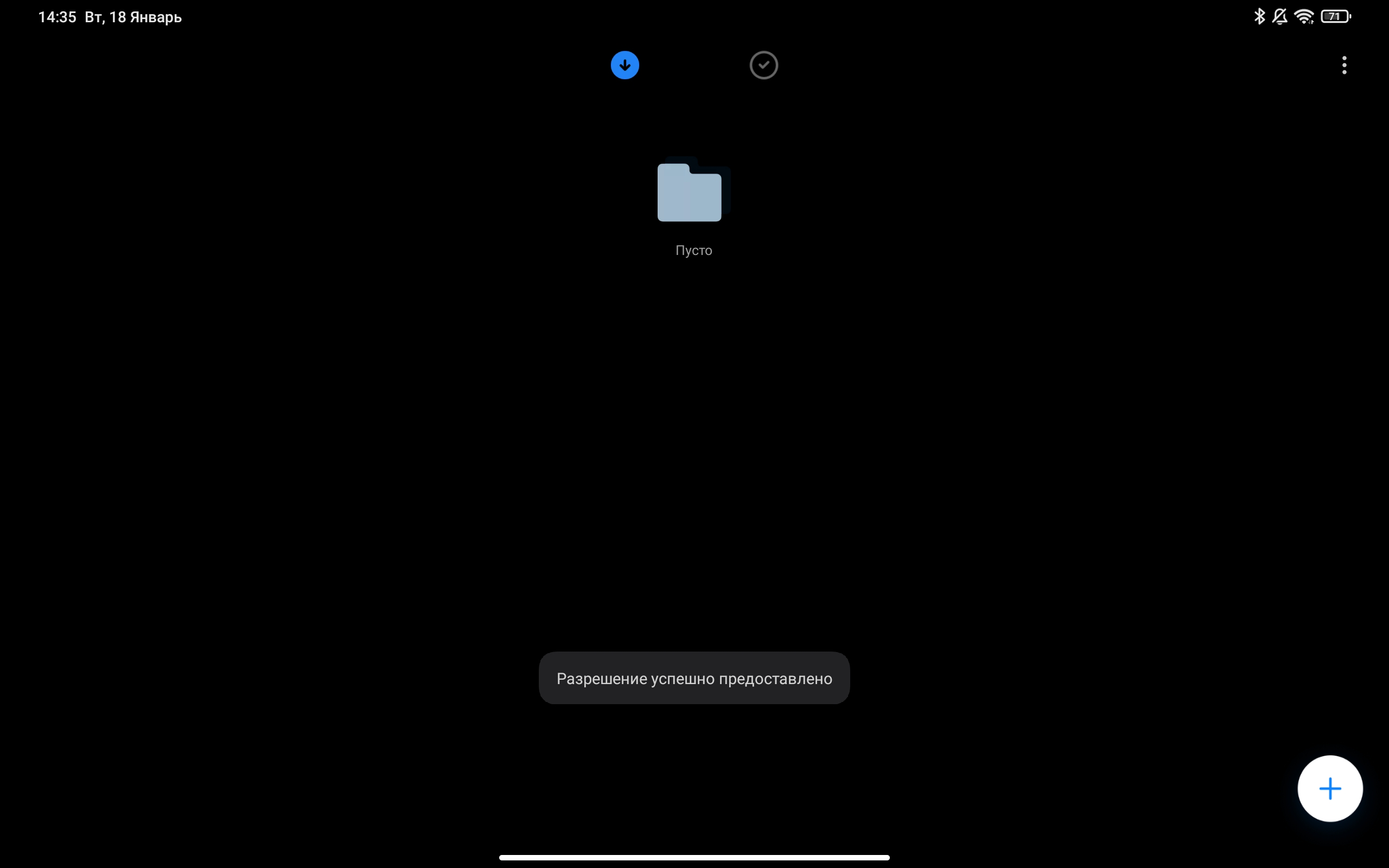
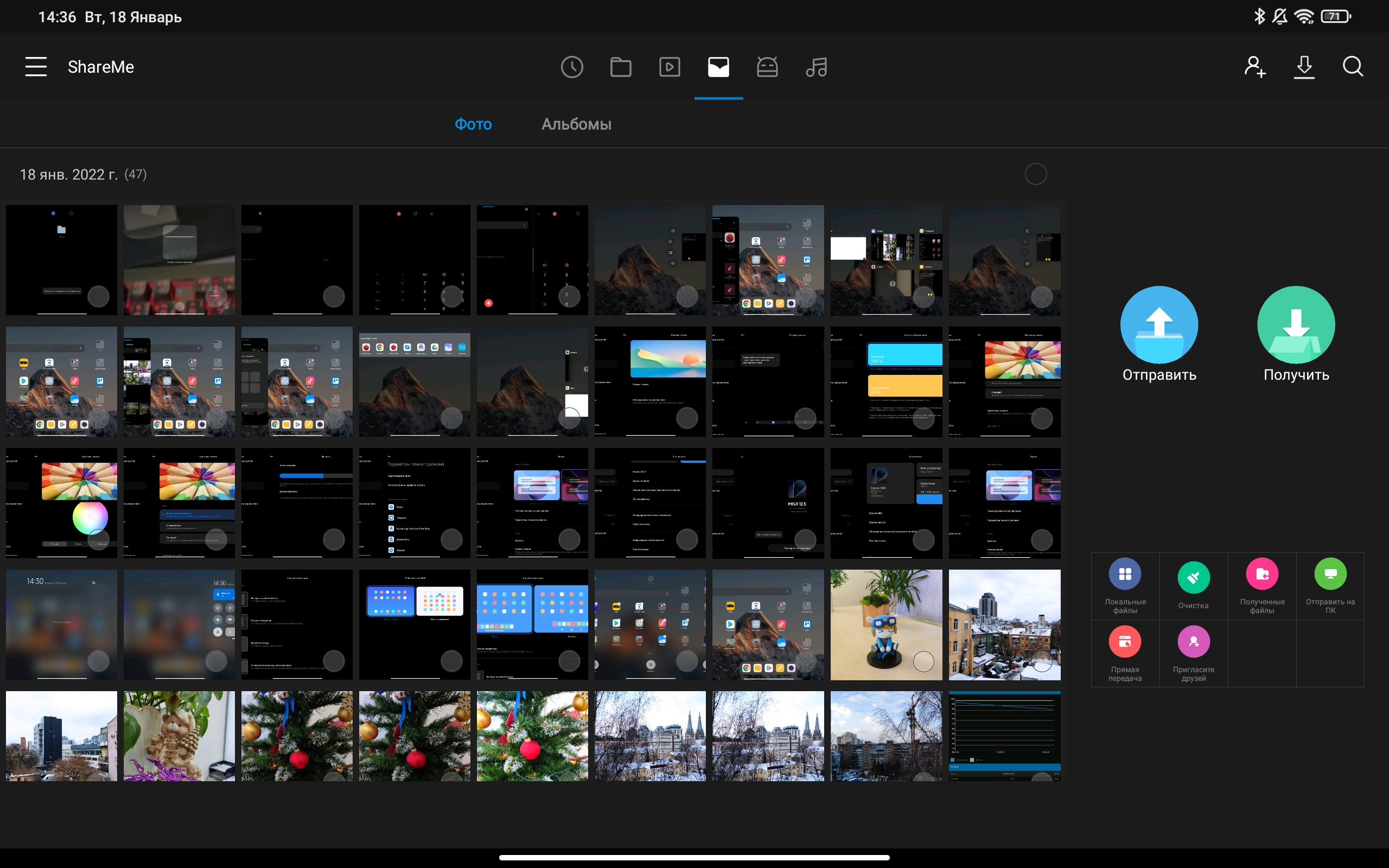
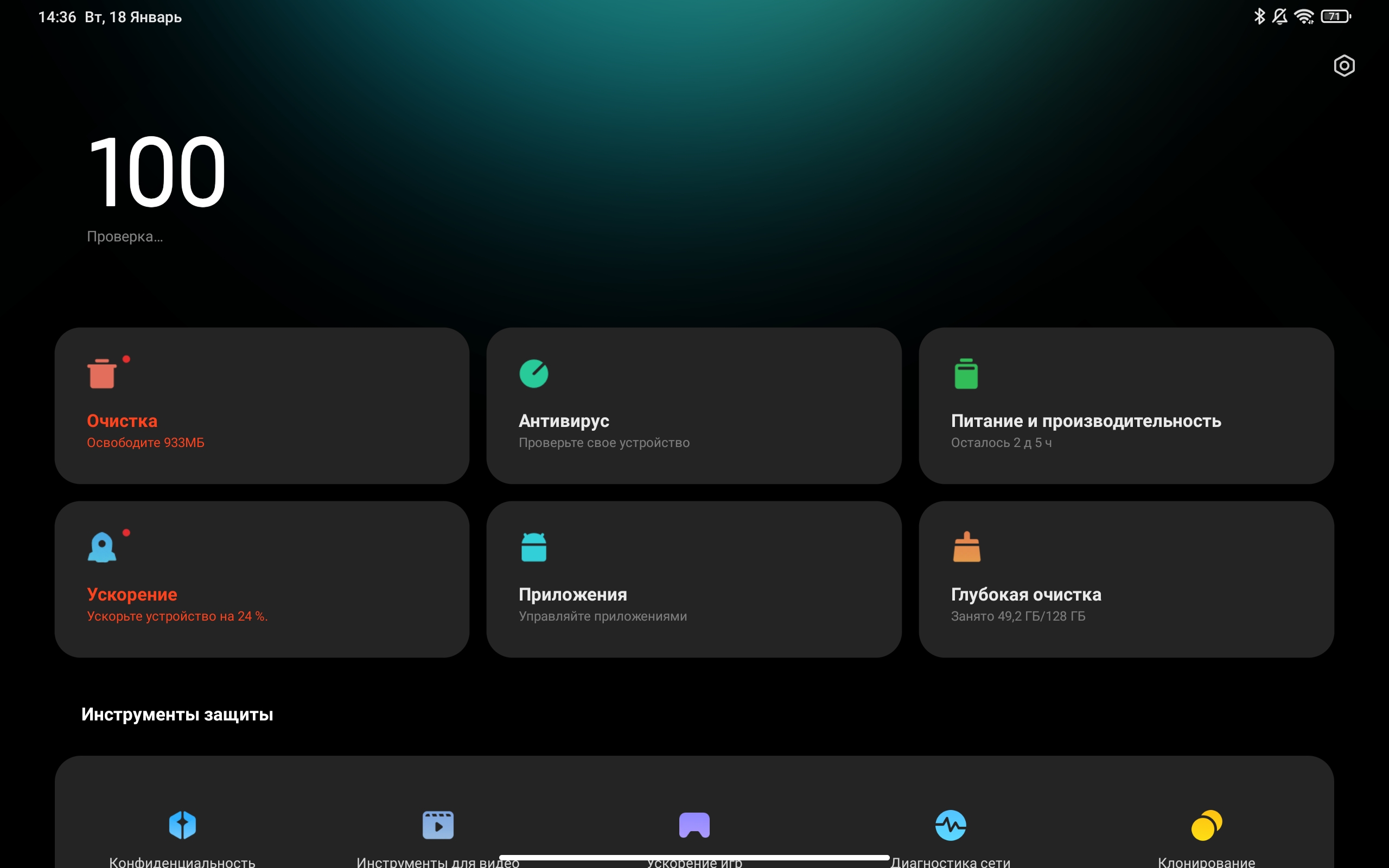







The Cameras
In tablets, the cameras are rather "for show". In case something urgently needs to be shot, but there is no smartphone in hand. Xiaomi Pad 5 is no exception. It has a 13 megapixel rear camera with f/2.2 aperture. 1.12µm pixel size, PDAF phase detection autofocus and LED flash.
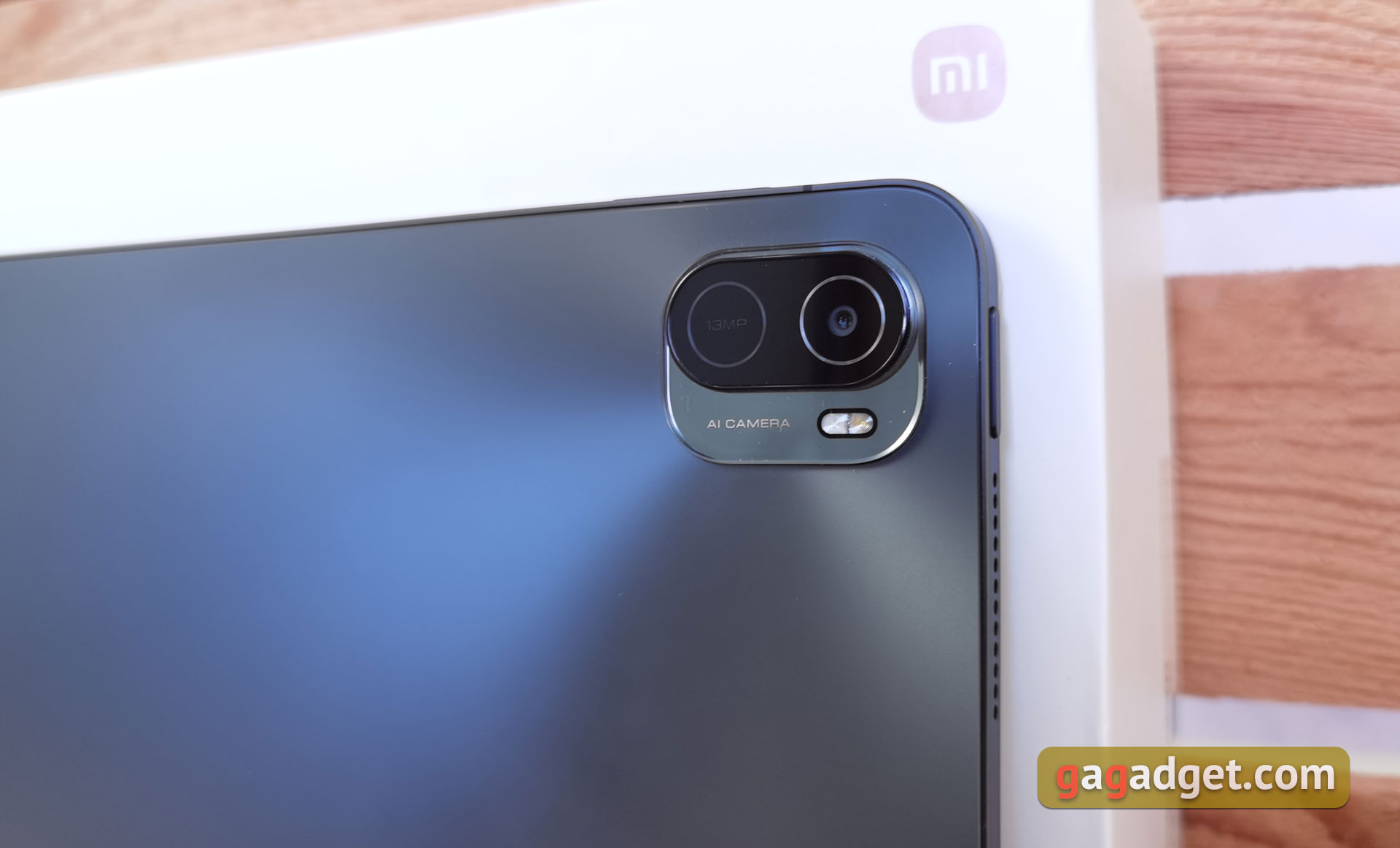
The camera application is standard for MIUI in a form stretched to a large screen. With a carousel of modes and all the most necessary settings on the main screen. The only difference is that there are much fewer modes than in smartphones.



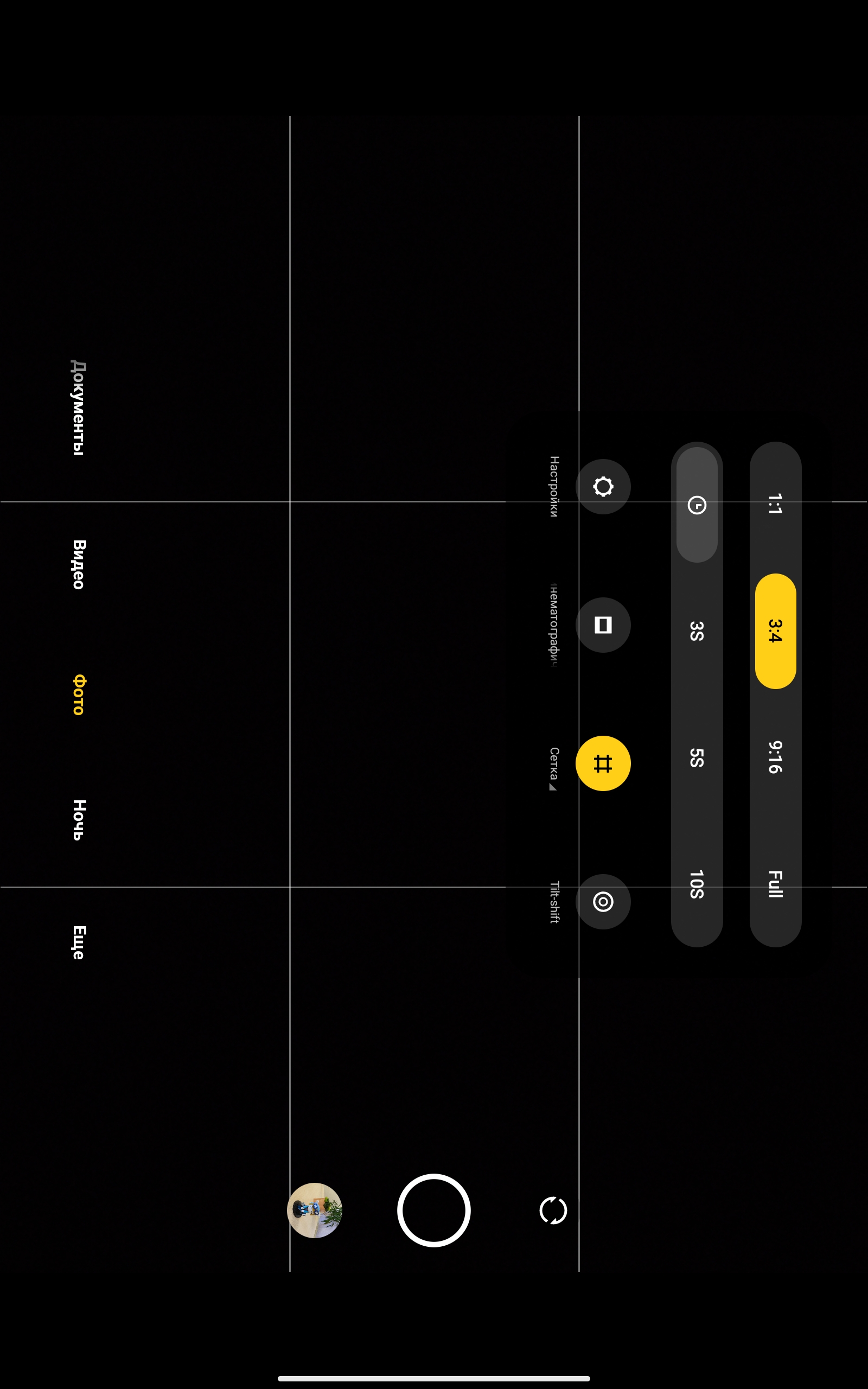




As expected, the camera in the tablet is rather mediocre. Although decent pictures can be taken with sufficient lighting. The night mode as a whole is also workable, but the main problem is that when there is not enough light, autofocus works not perfect at all.






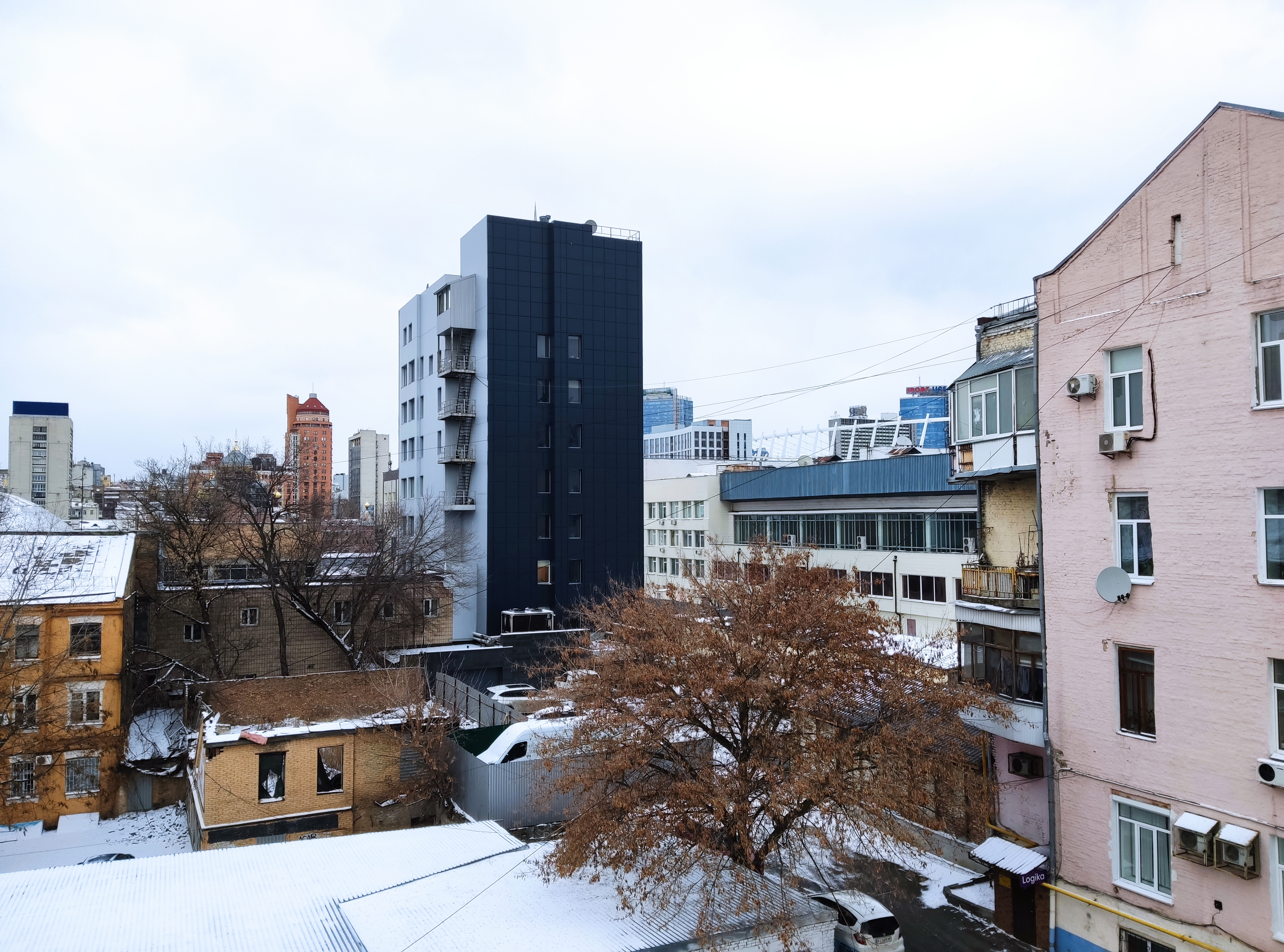











4 Things to Know about Xiaomi Pad 5:
- Xiaomi Pad 5 is equipped with a high-quality 11-inch IPS screen with 120Hz refresh rate
- The performance is sufficient for both applications and modern games
- The tablet has 4 speakers that sound loud and high quality
- The tablet lacks GPS, a microSD slot mobile networks support
- High-quality 11-inch IPS screen with a refresh rate of 120 Hz
- Impressive performance
- Long battery life
- Loud and quality speakers, beautiful appearance
| Xiaomi Pad 5 Specifications | |
|---|---|
| Display | IPS, 11", 2560x1600 (16:10 aspect ratio), 274 ppi, HDR10, Dolby Vision, 120Hz |
| Frame | Dimensions: 254.7x166.3x6.9 mm, weight: 511 g |
| CPU | 64-bit 7nm Qualcomm Snapdragon 860, 1xKryo 485 Gold 2.96GHz, 3xKryo 485 Gold 2.42GHz, 4xKryo 485 Silver 1.78GHz, graphics Adreno 640 |
| RAM | 6 GB |
| Flash memory | 128/256 GB UFS 3.1 |
| Camera | Main: 13 MP, f/2.0, PDAF; Front camera: 8 MP f/2.0 |
| Wireless technologies | WiFi 802.11 a/b/g/n/ac (dual-band, 2.4 and 5 GHz), Bluetooth 5.0 LE |
| GPS | No |
| Battery | 8720 mAh, non-removable; 33W fast charging (22.5W PSU included) |
| Operating system | Android 11 + MIUI 12.5 |
| SIM card | No |

Quality 11" 120Hz IPS screen, impressive performance and Dolby Atmos speakers
